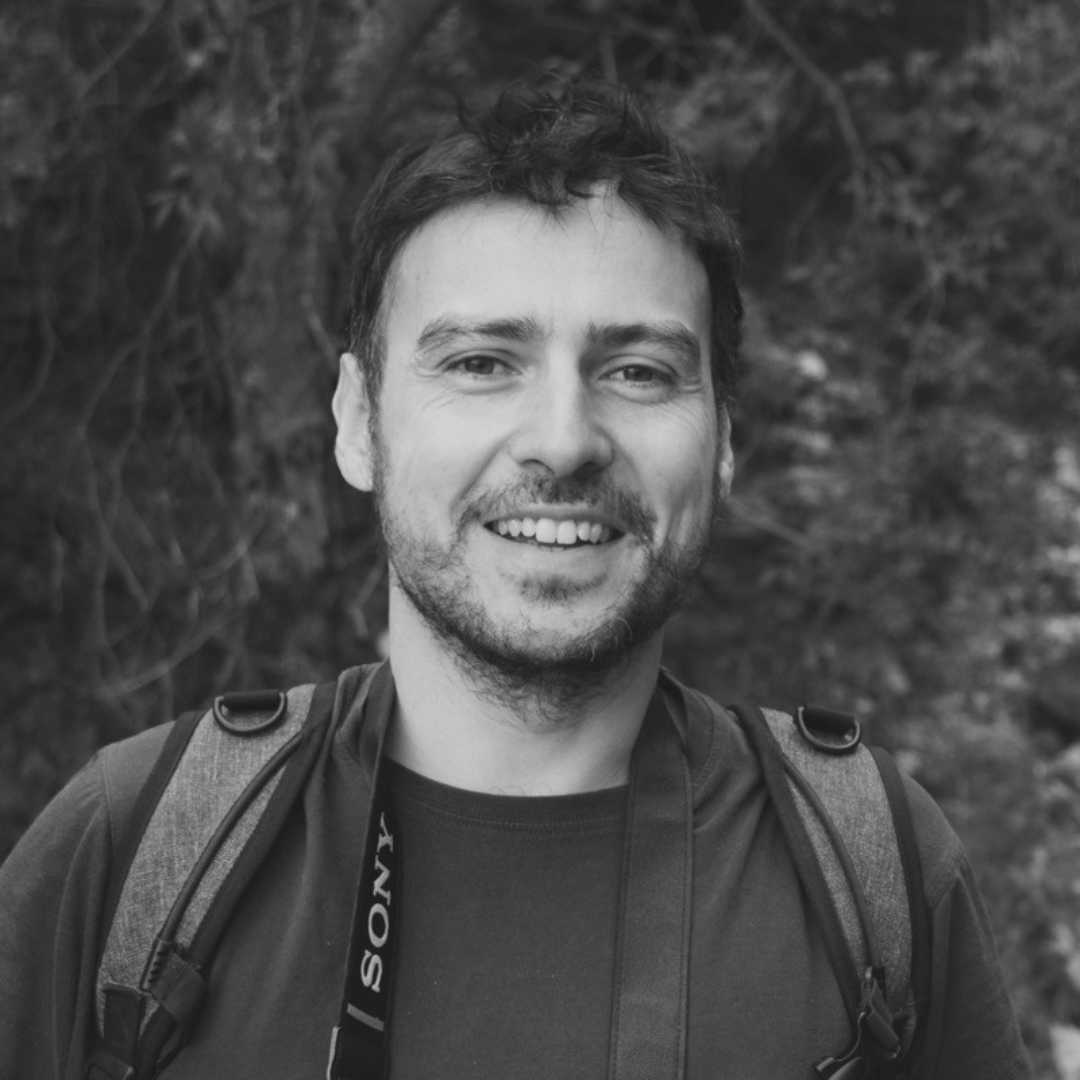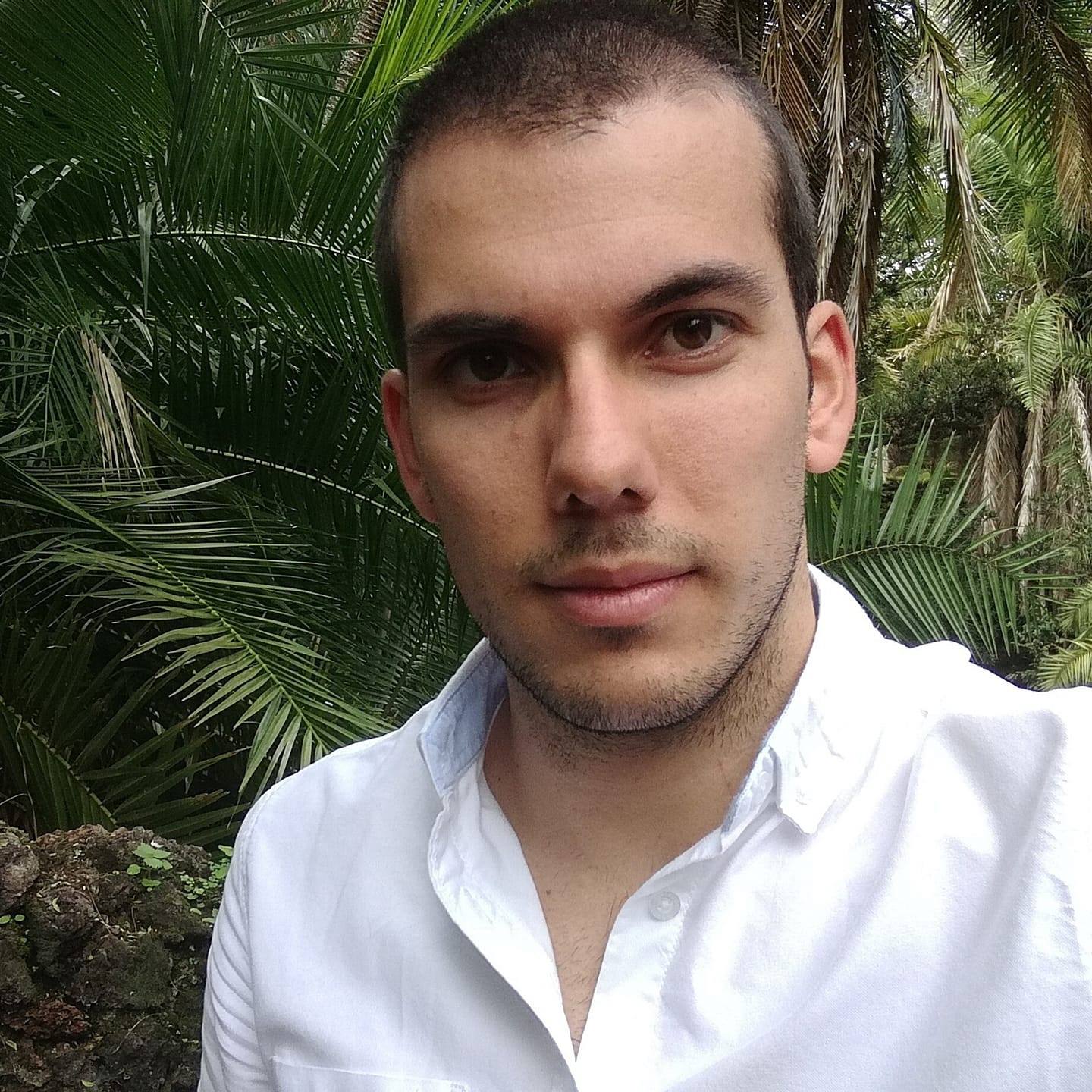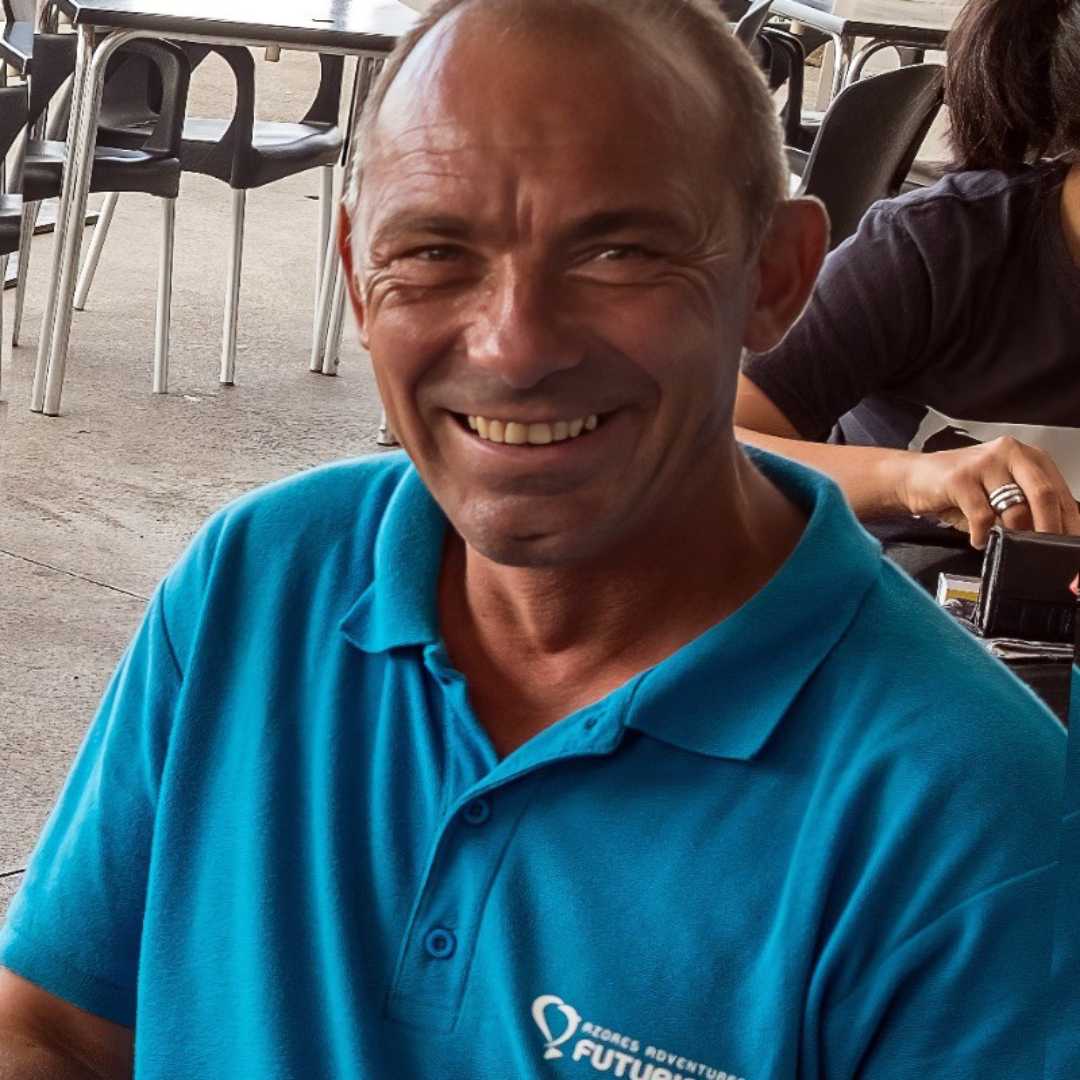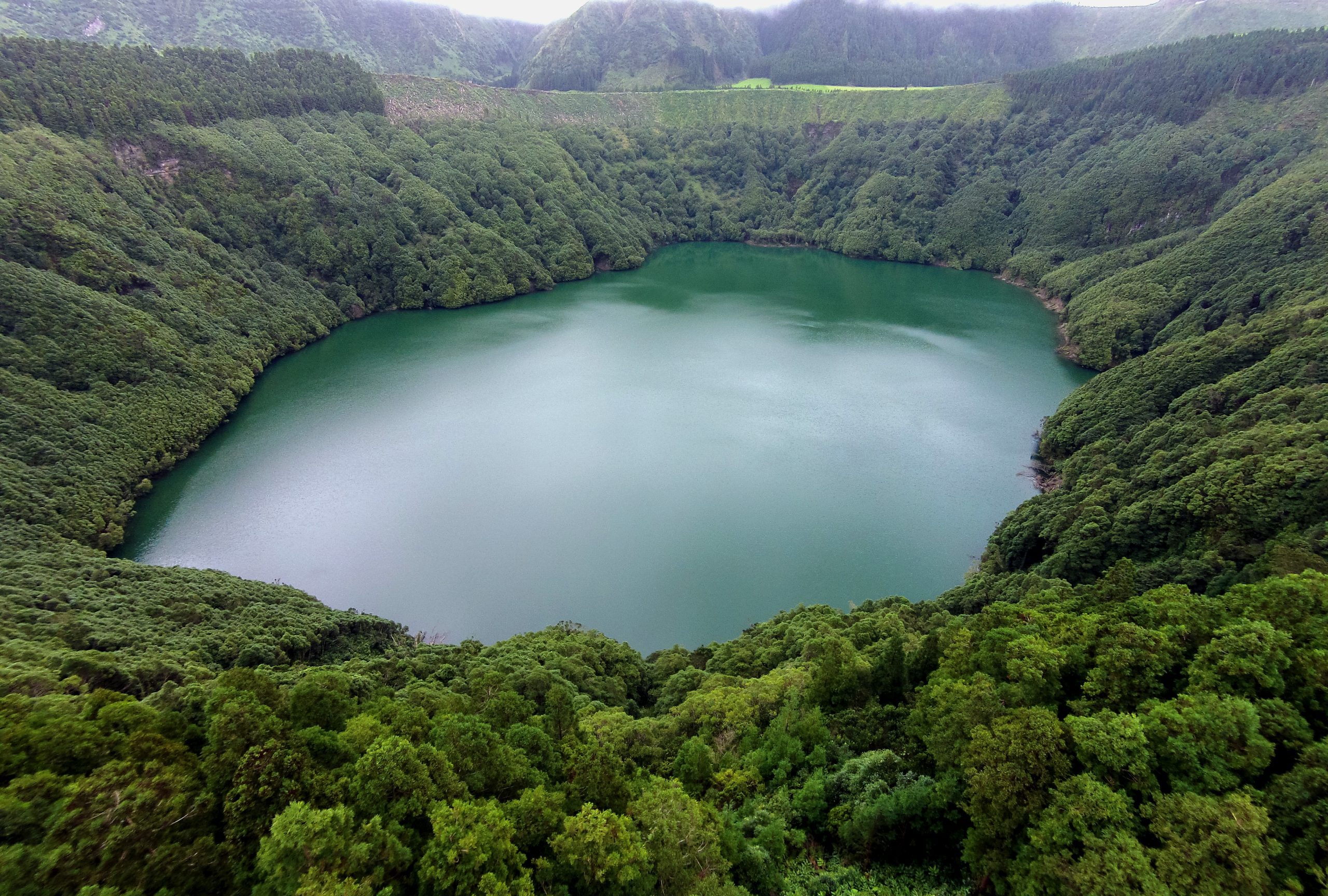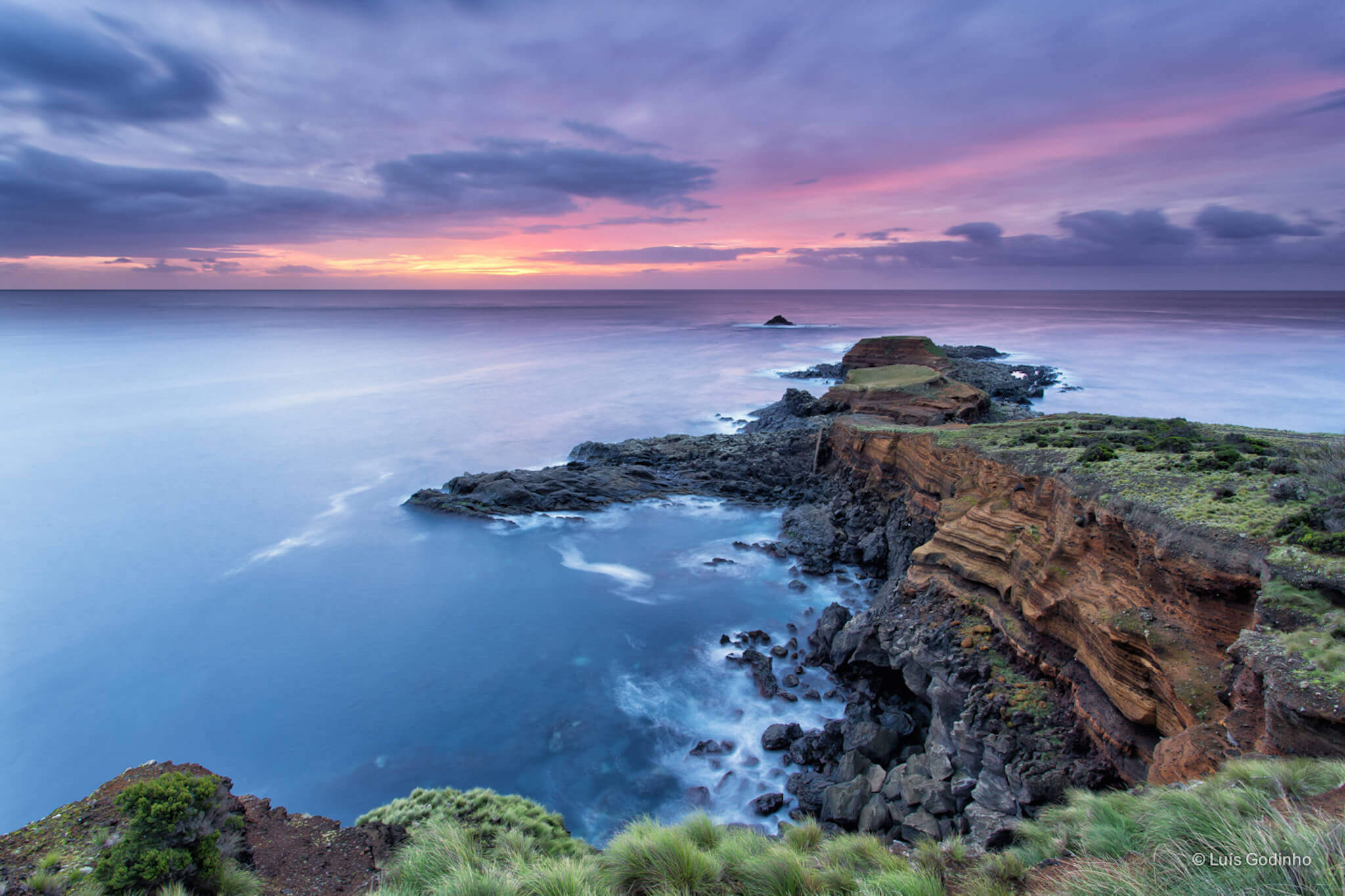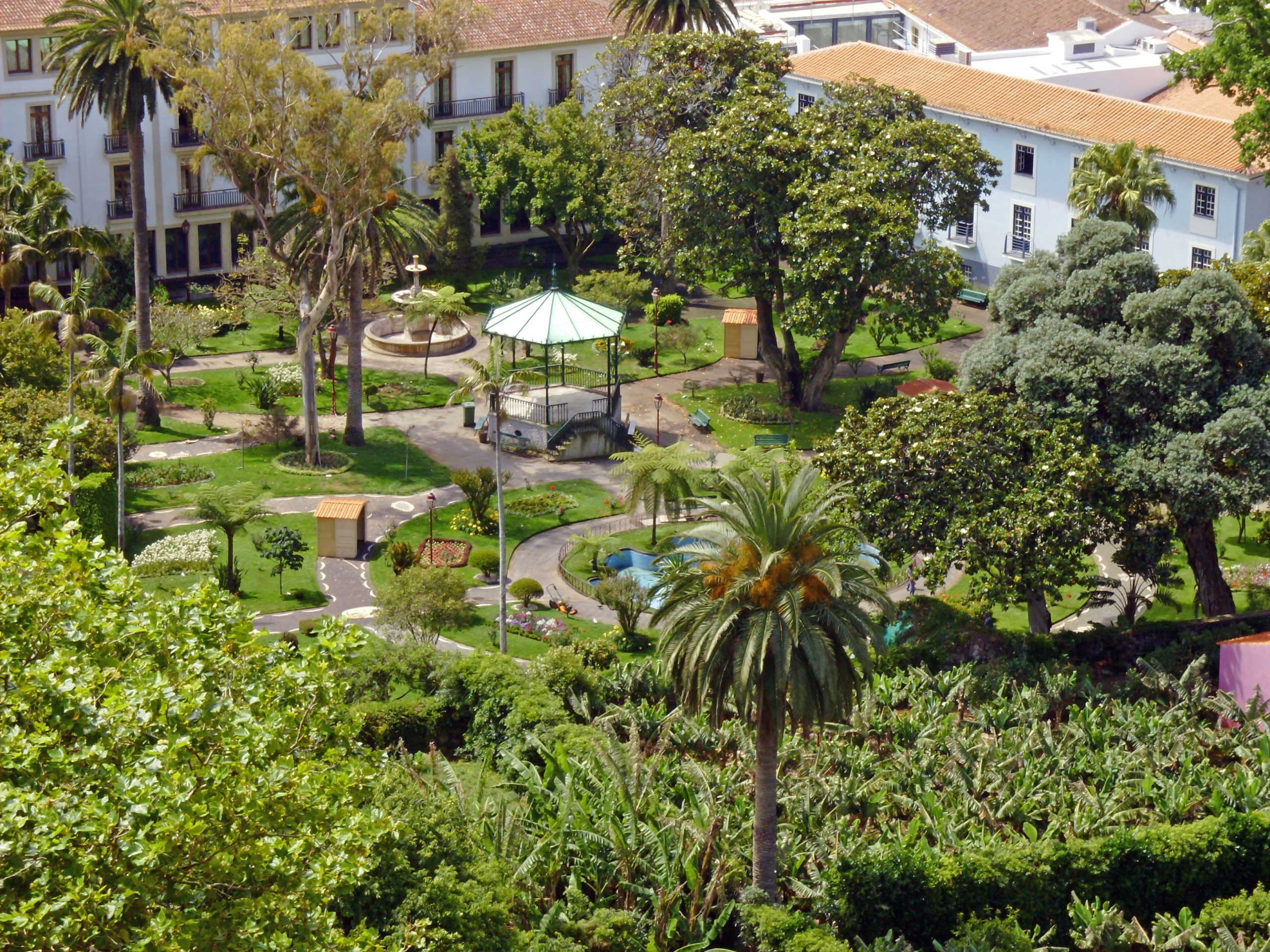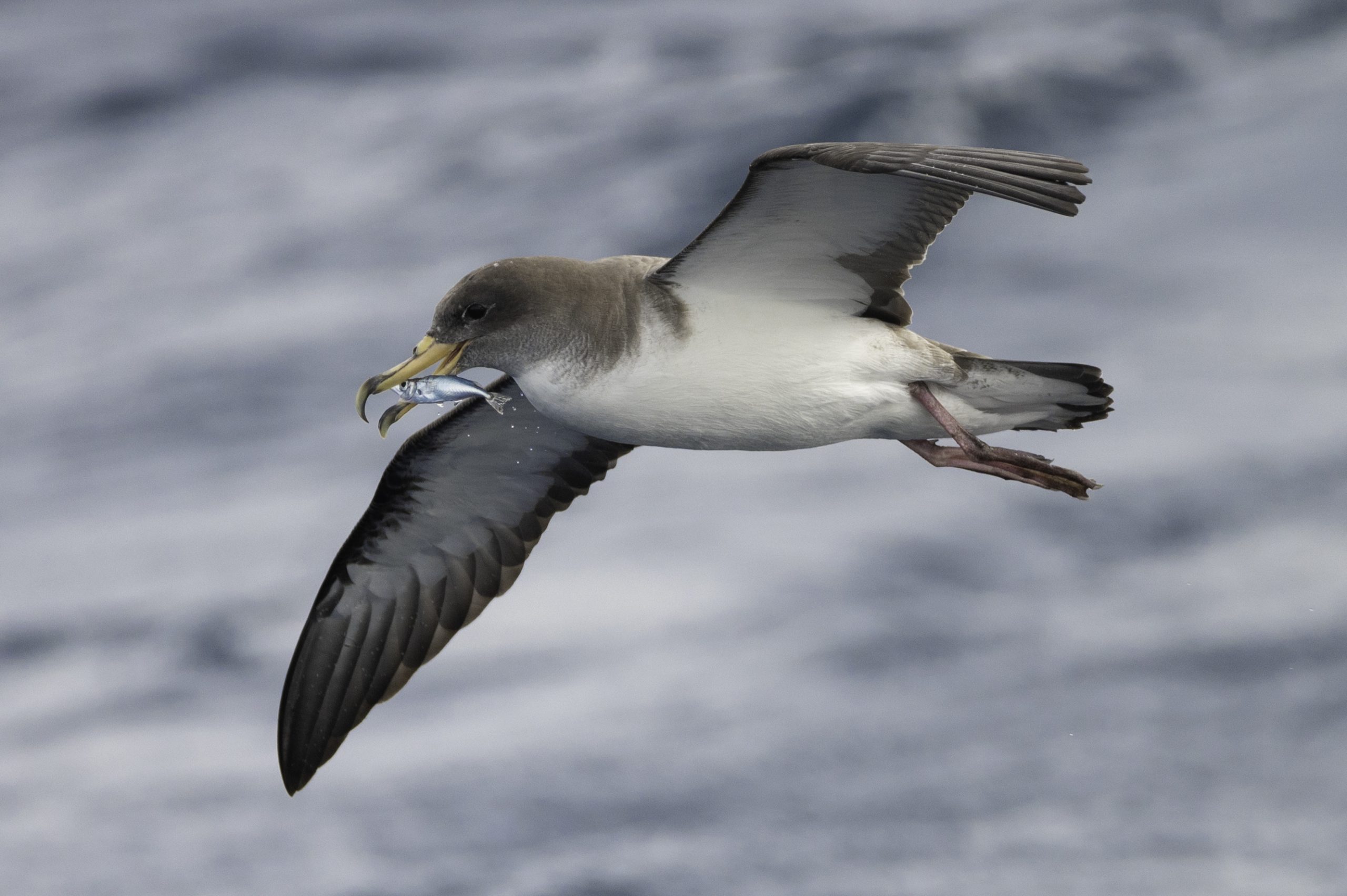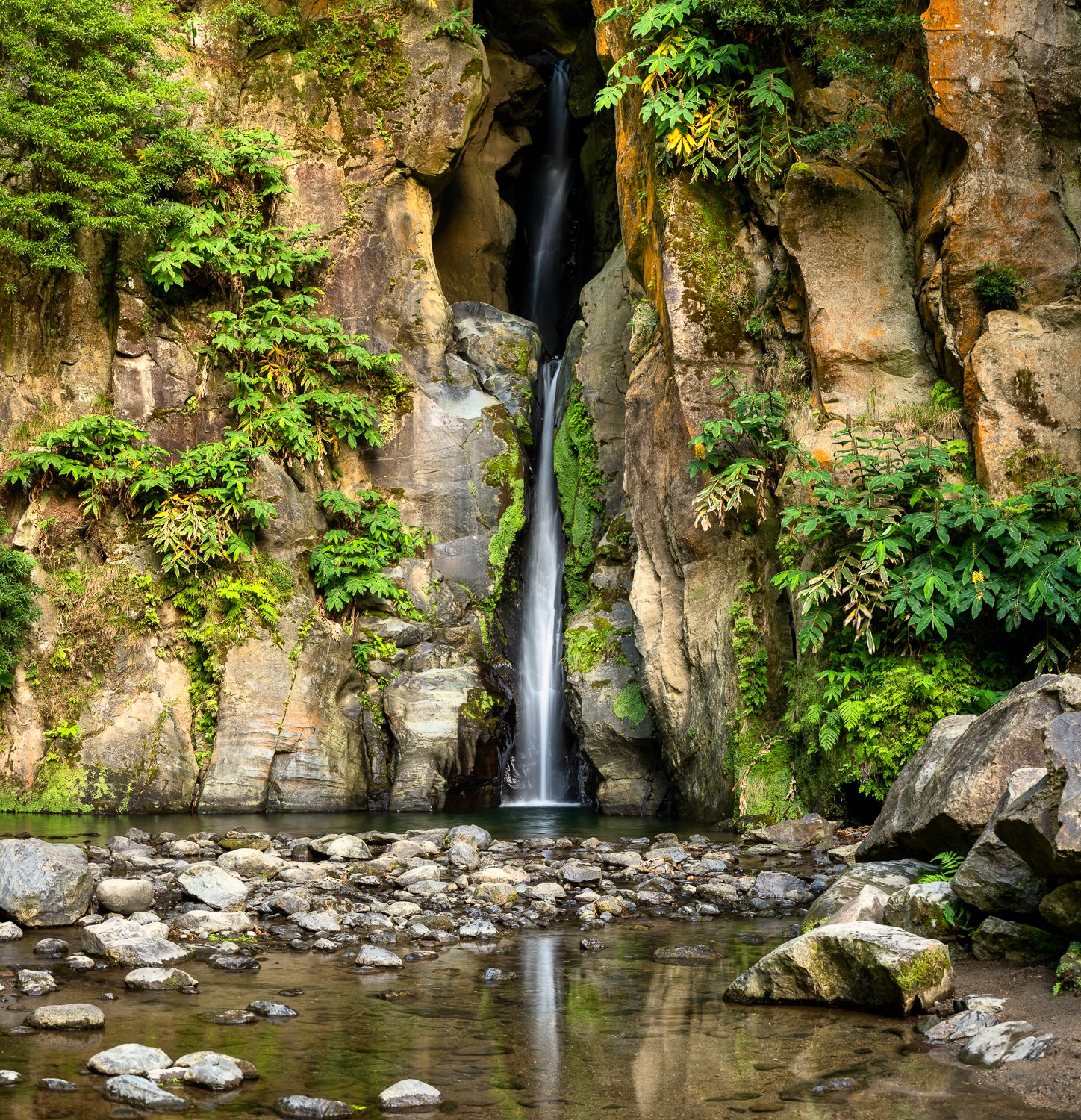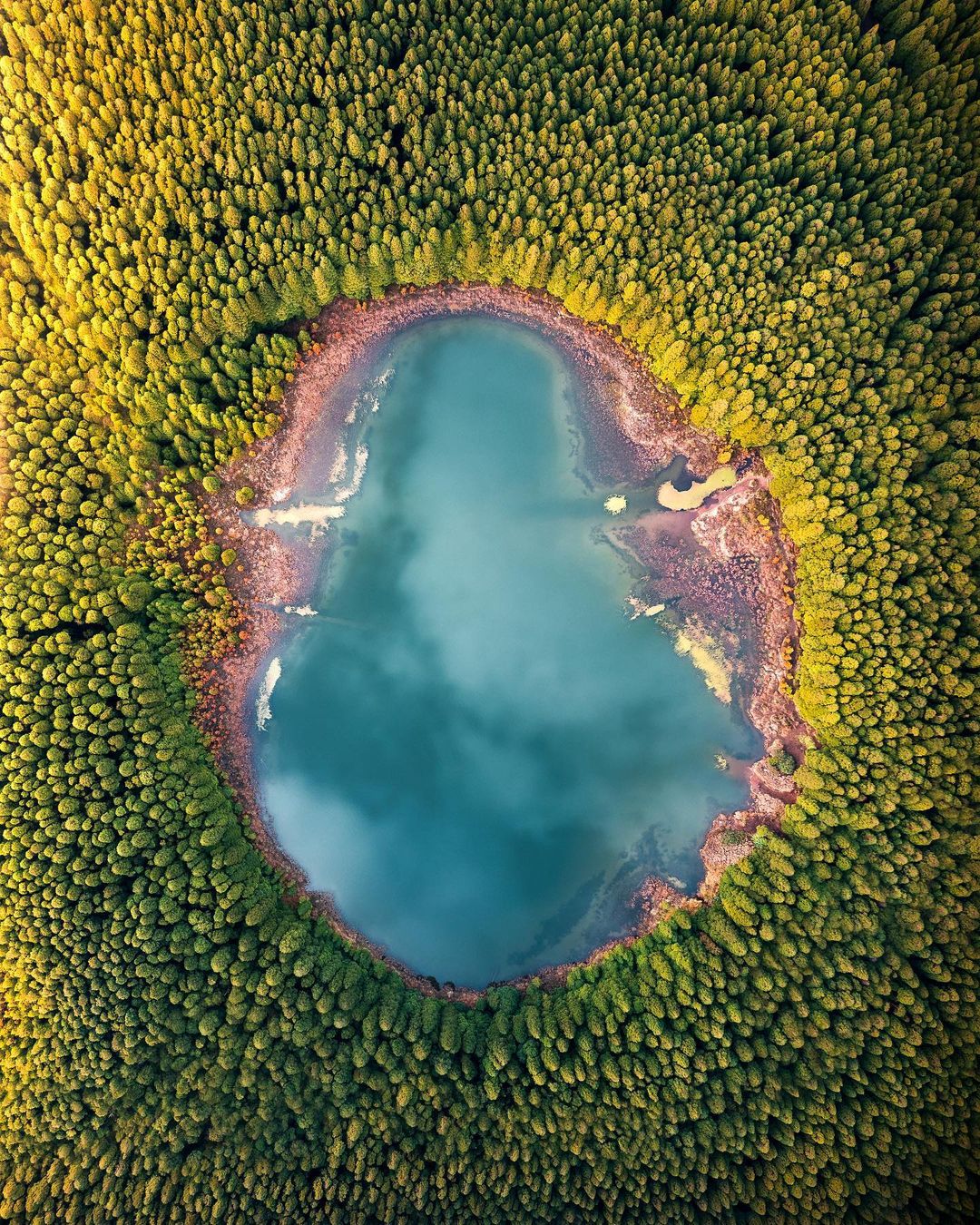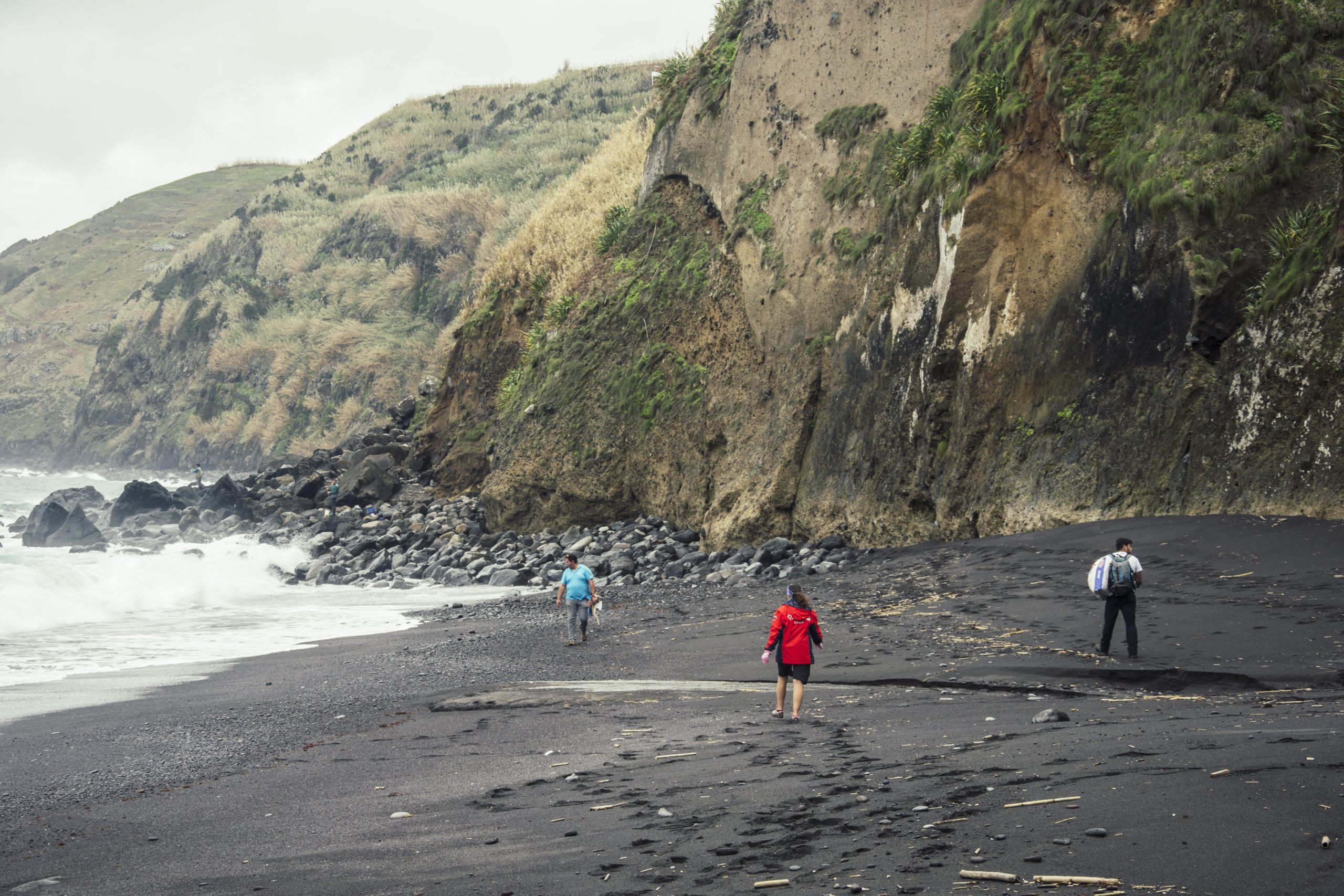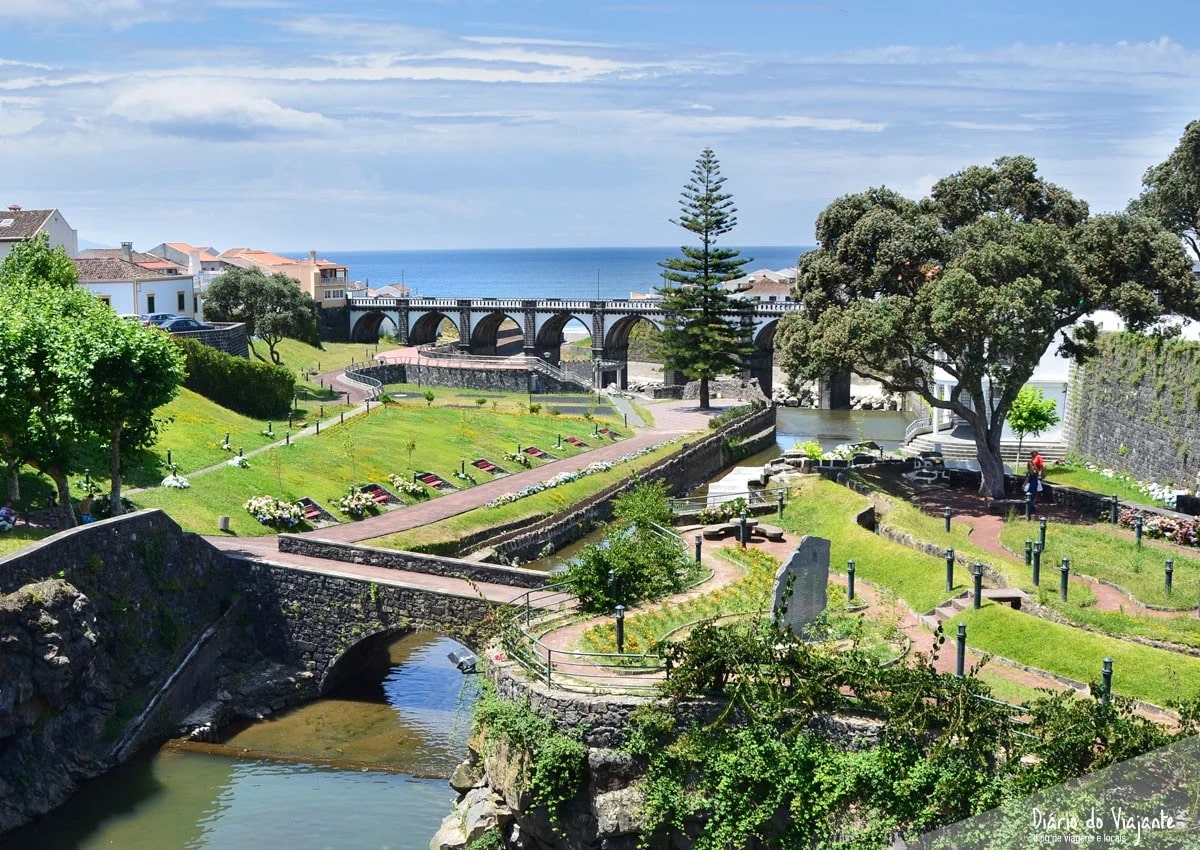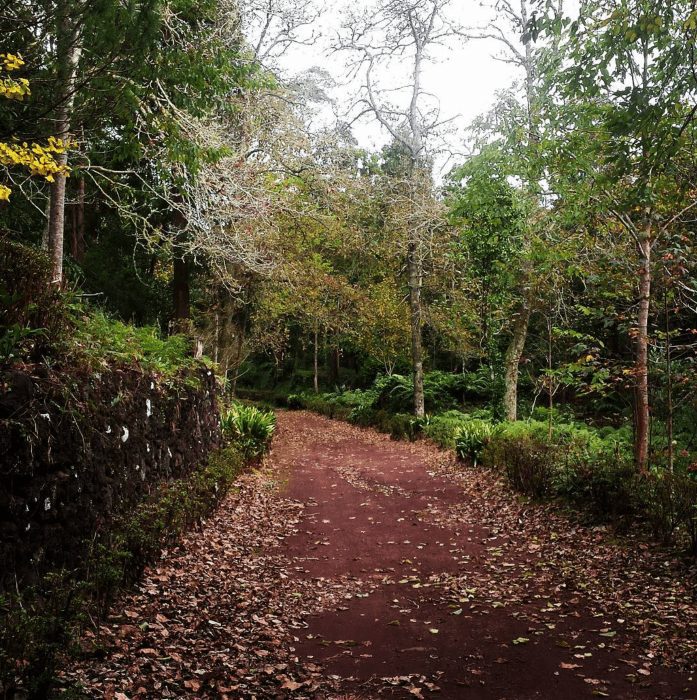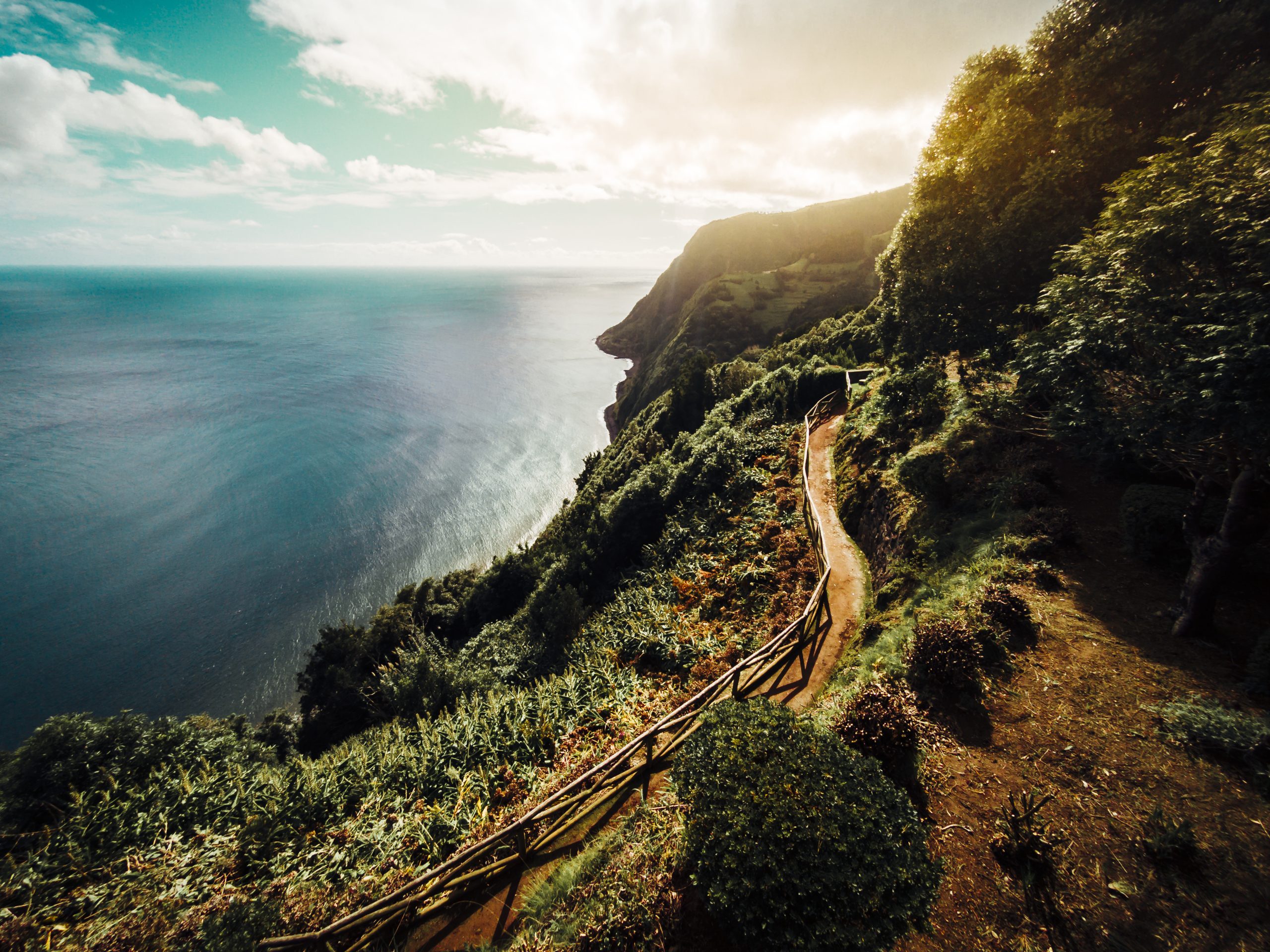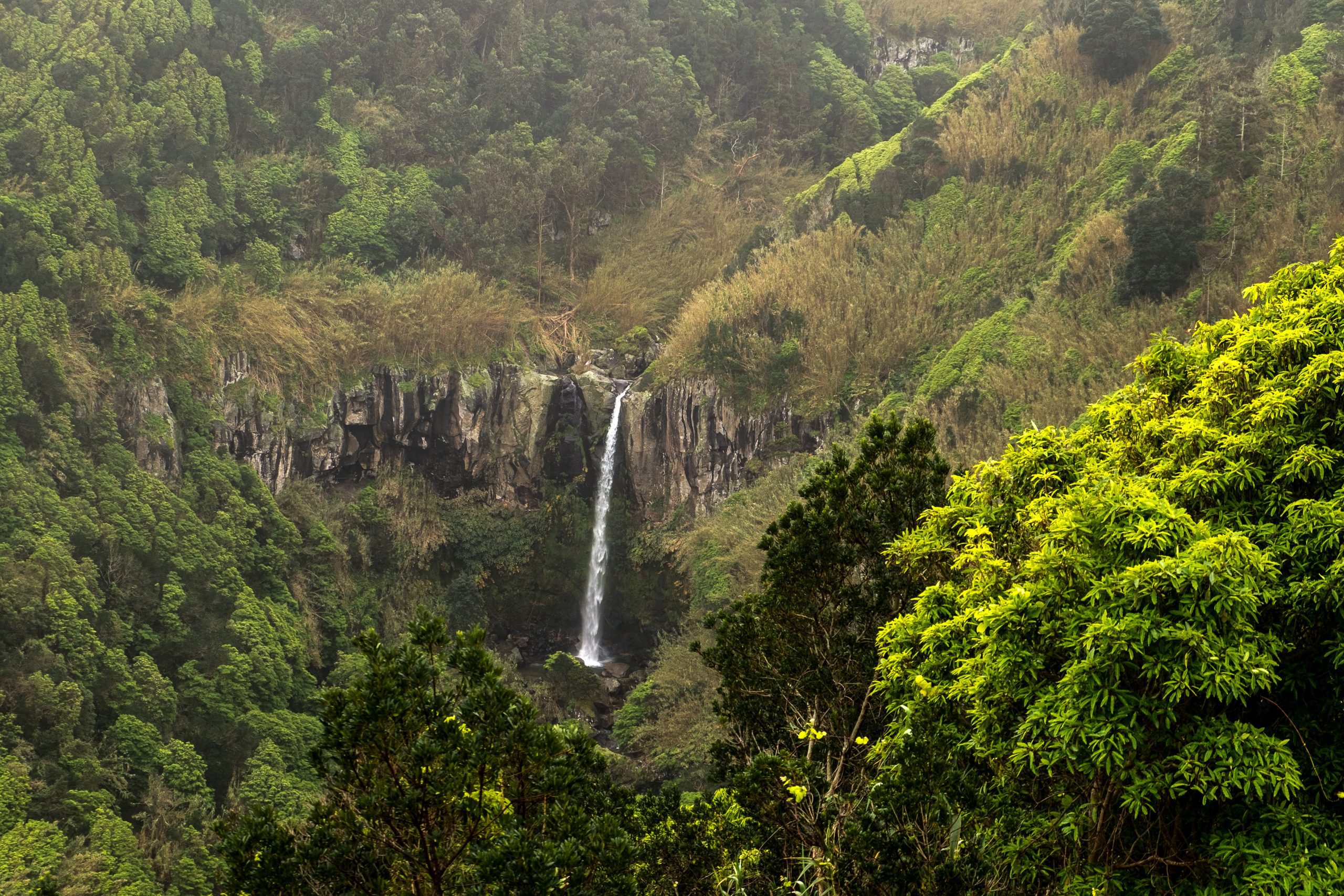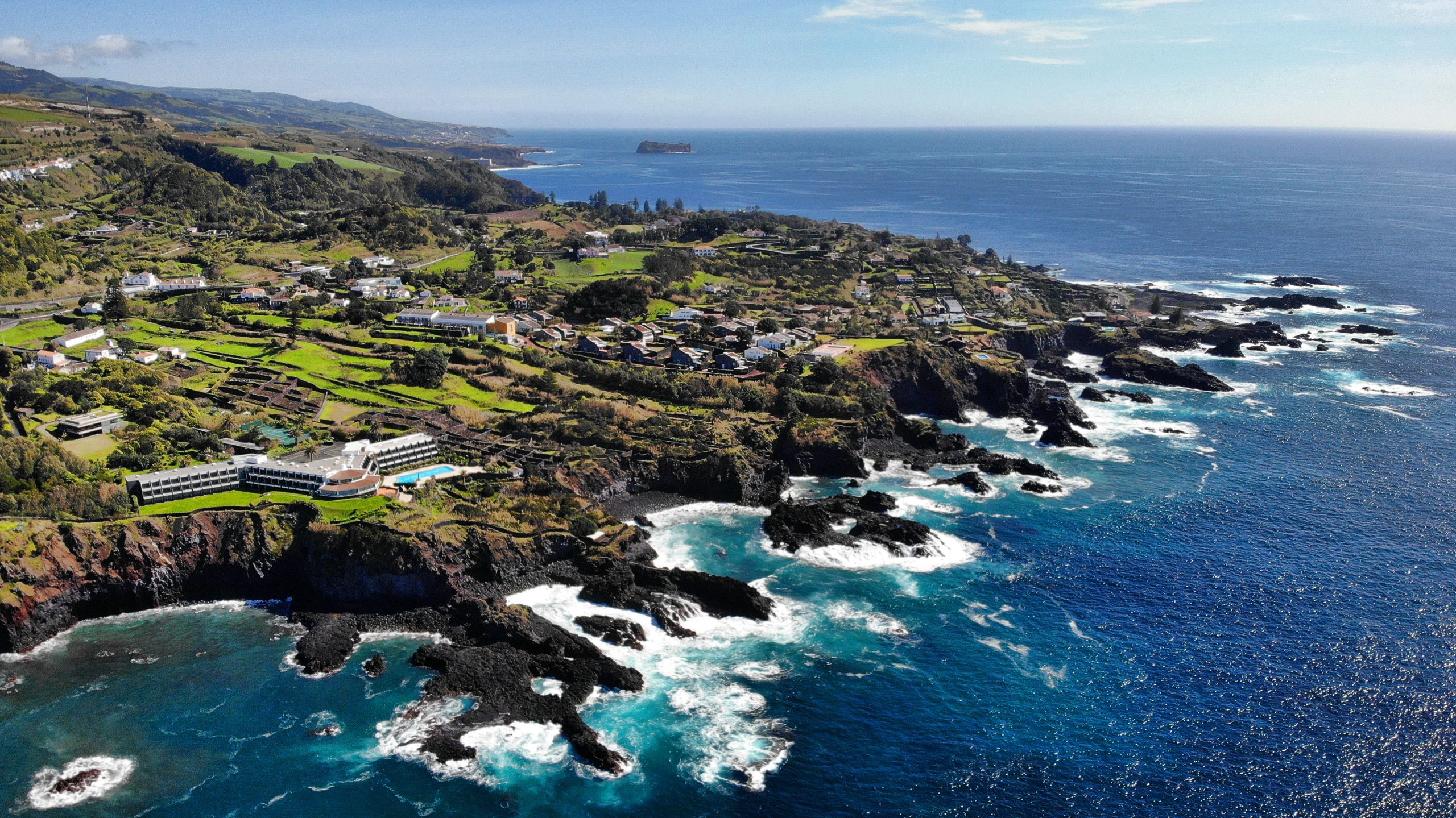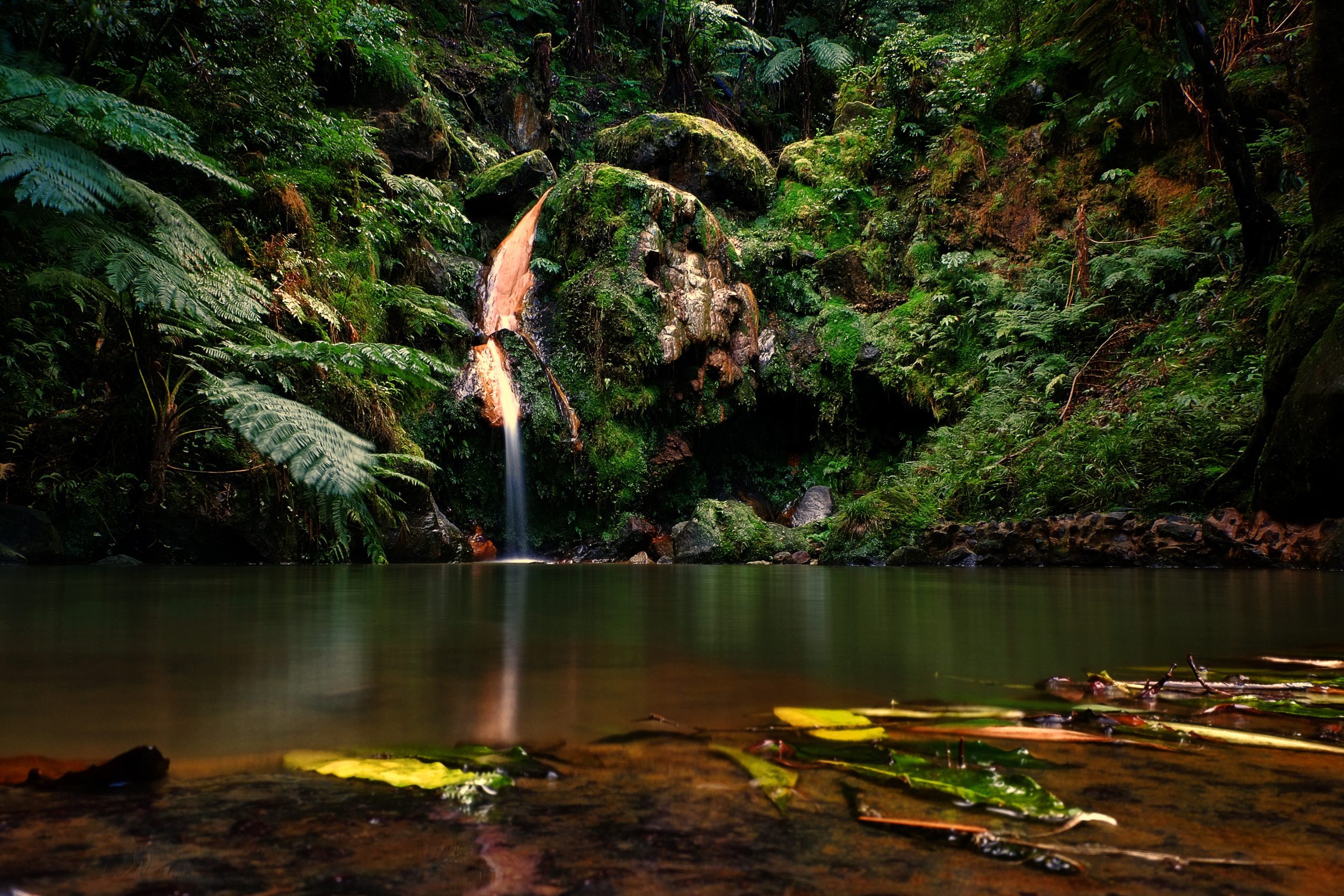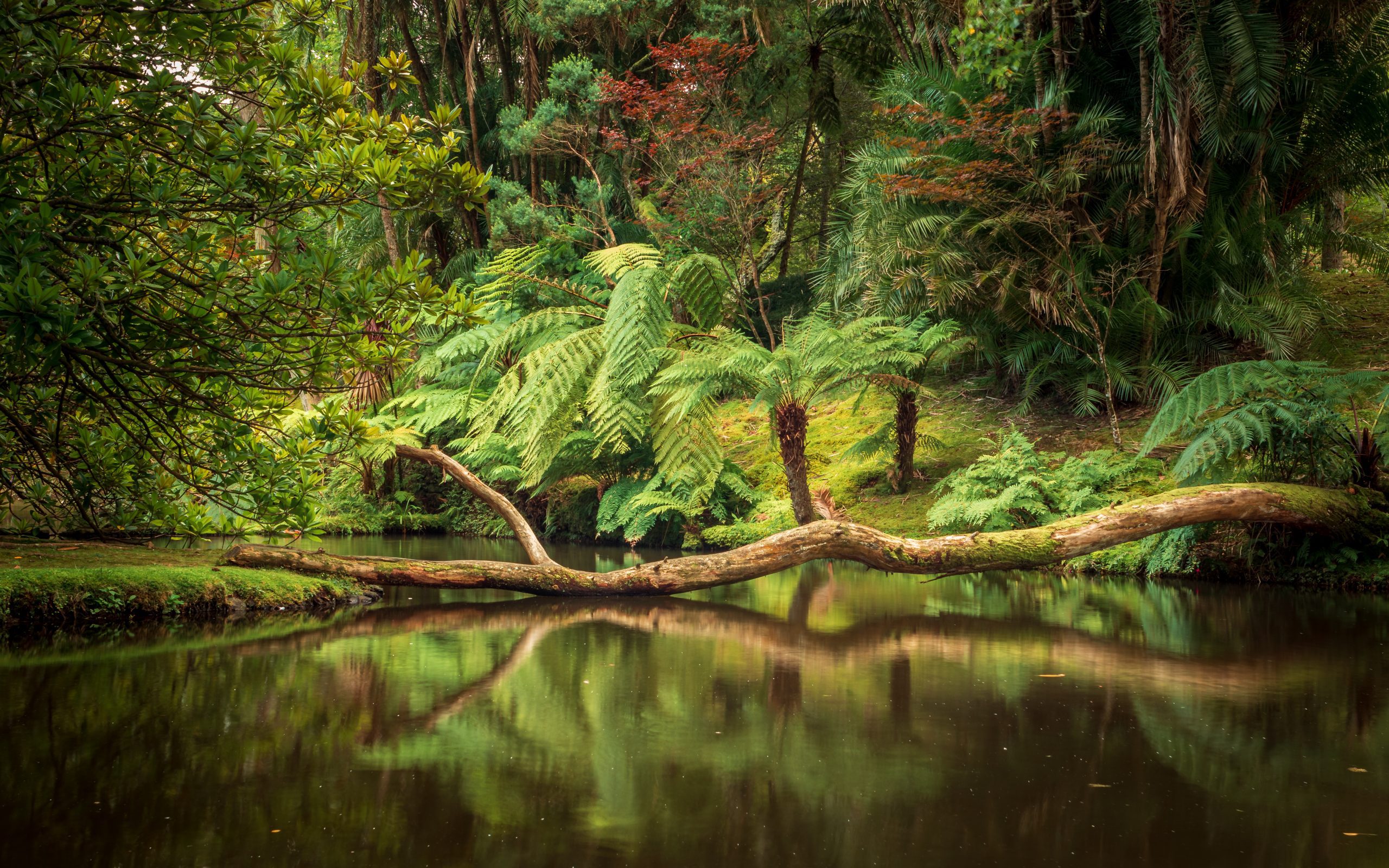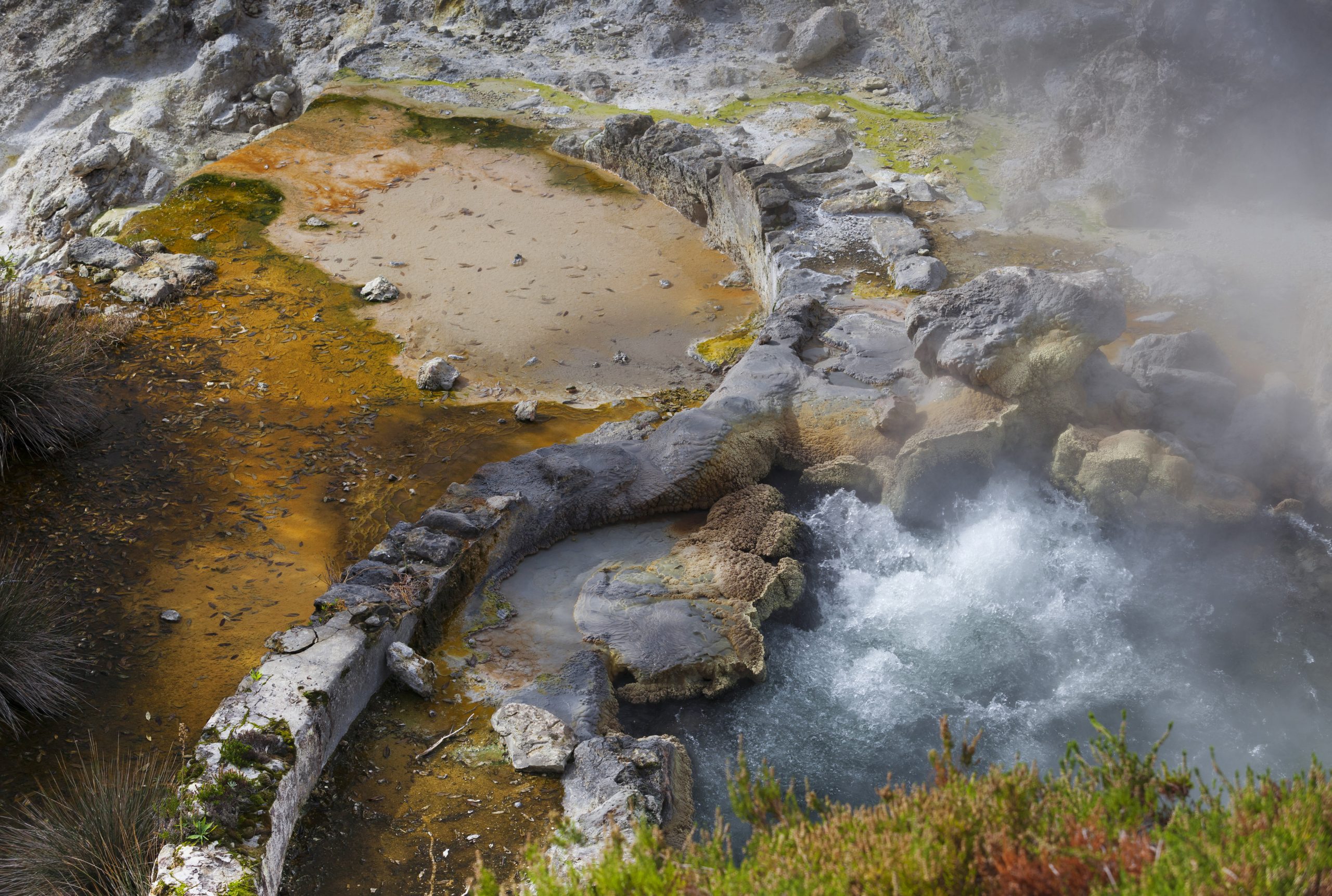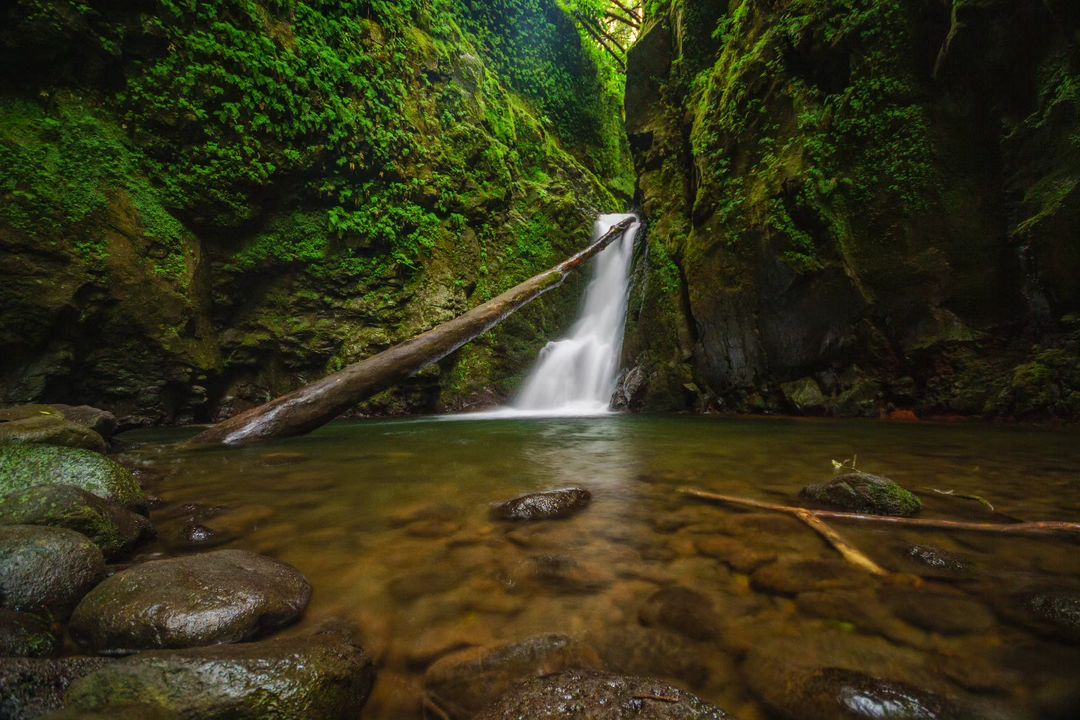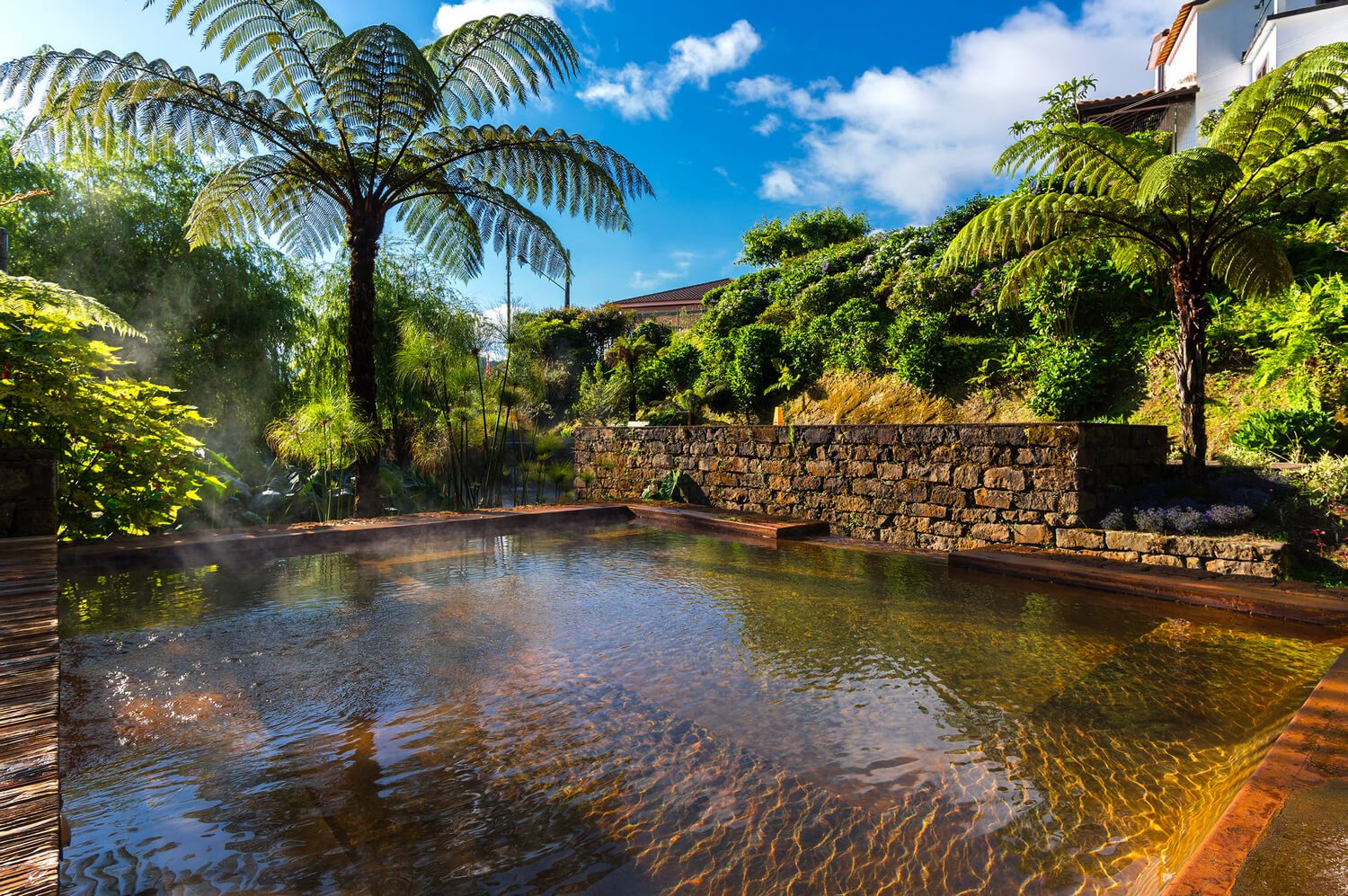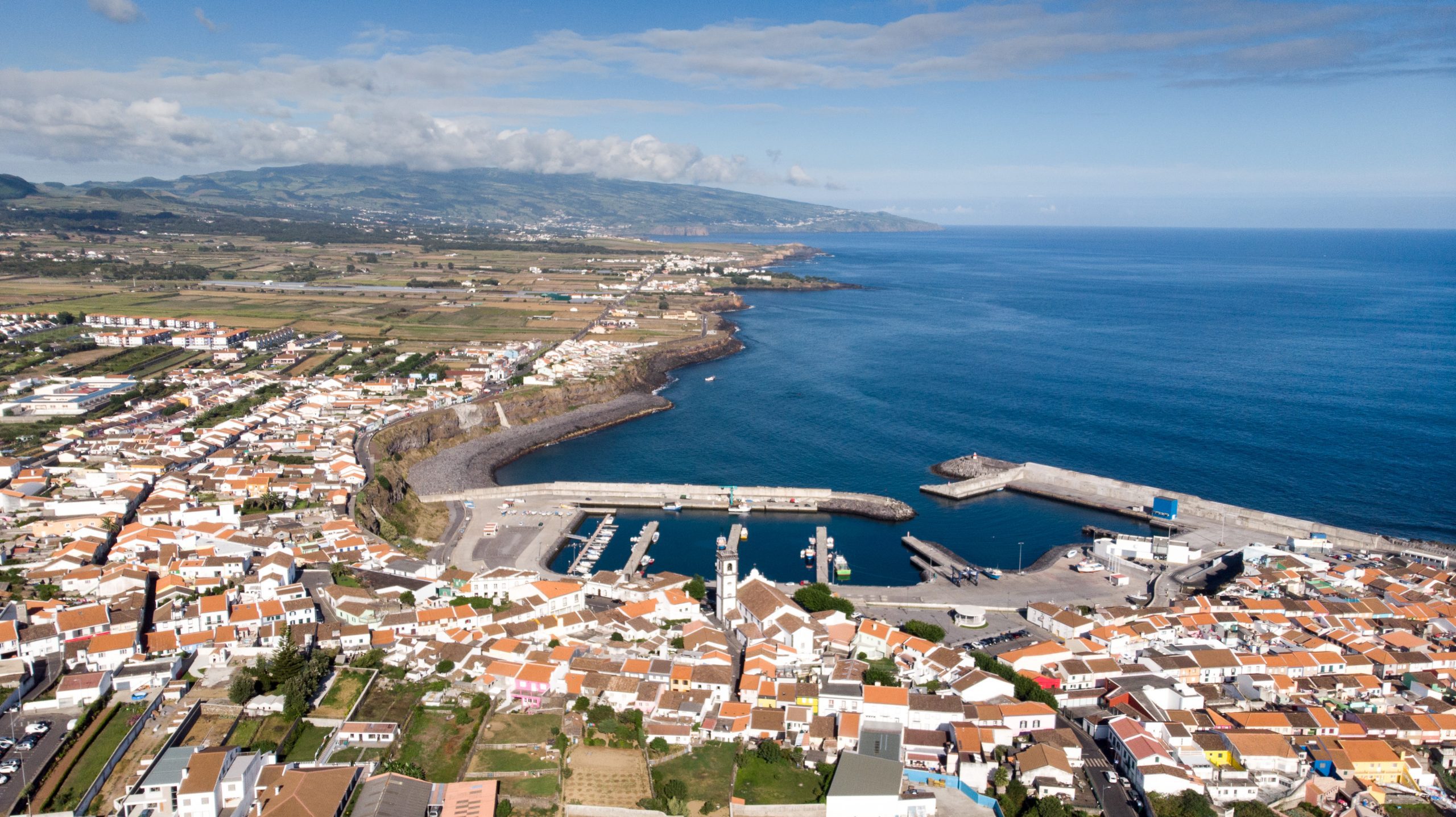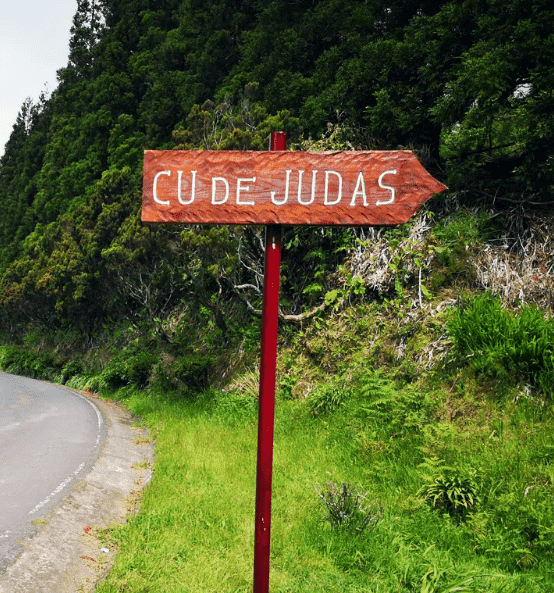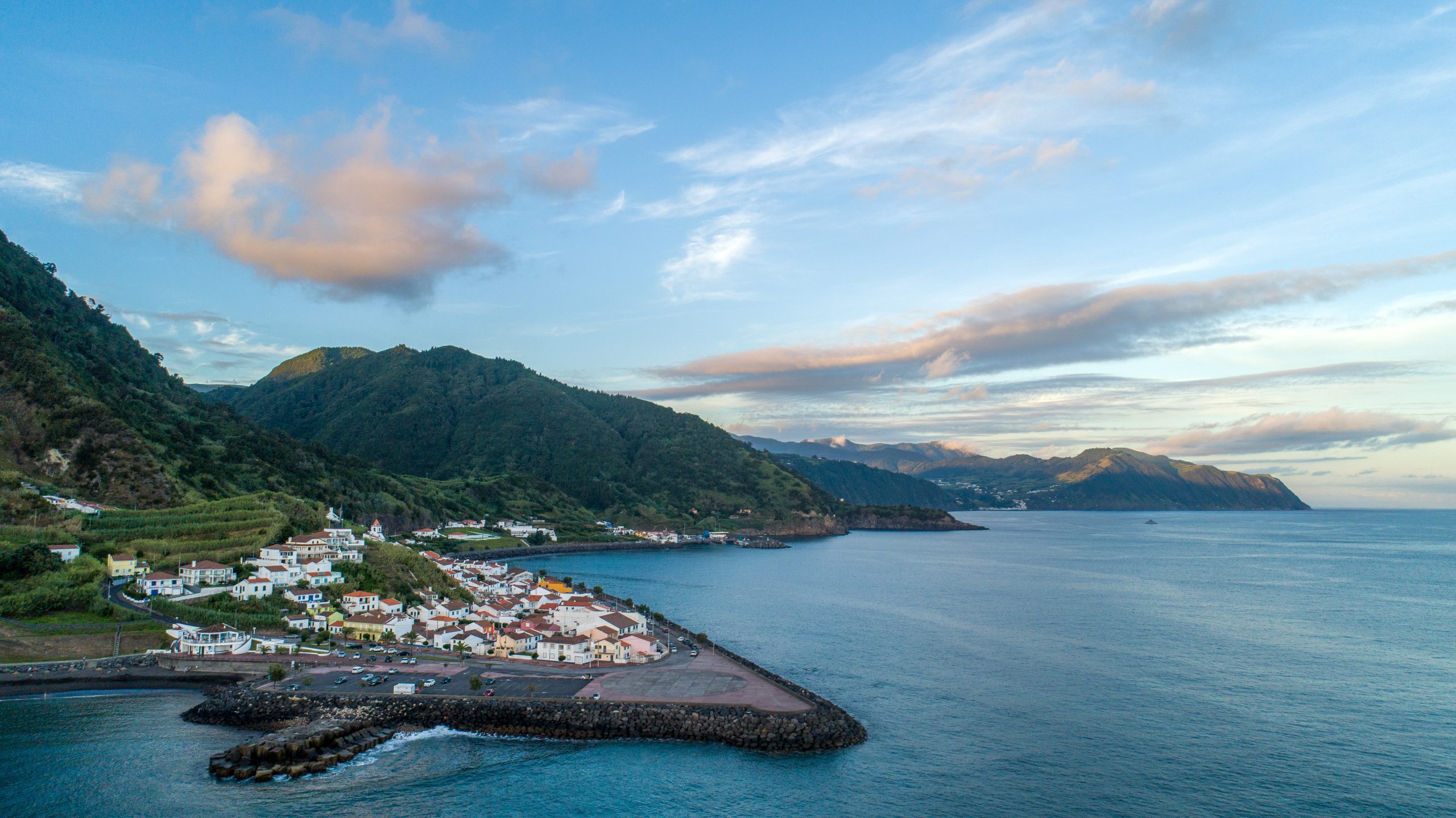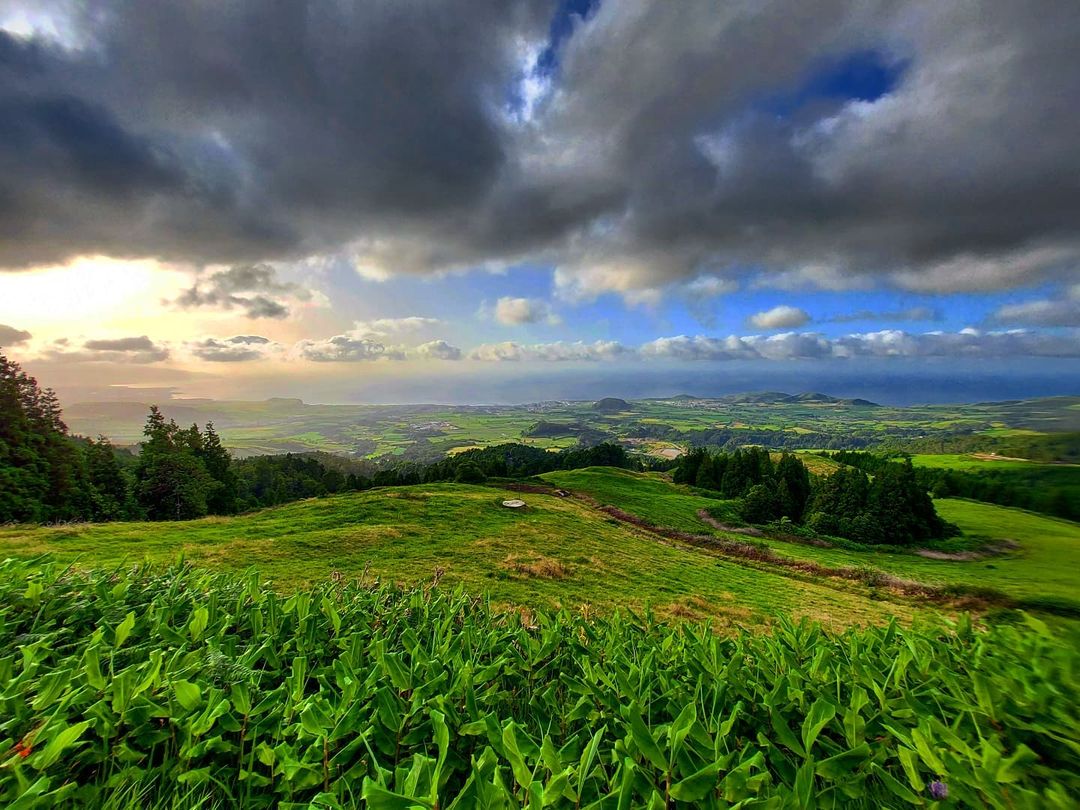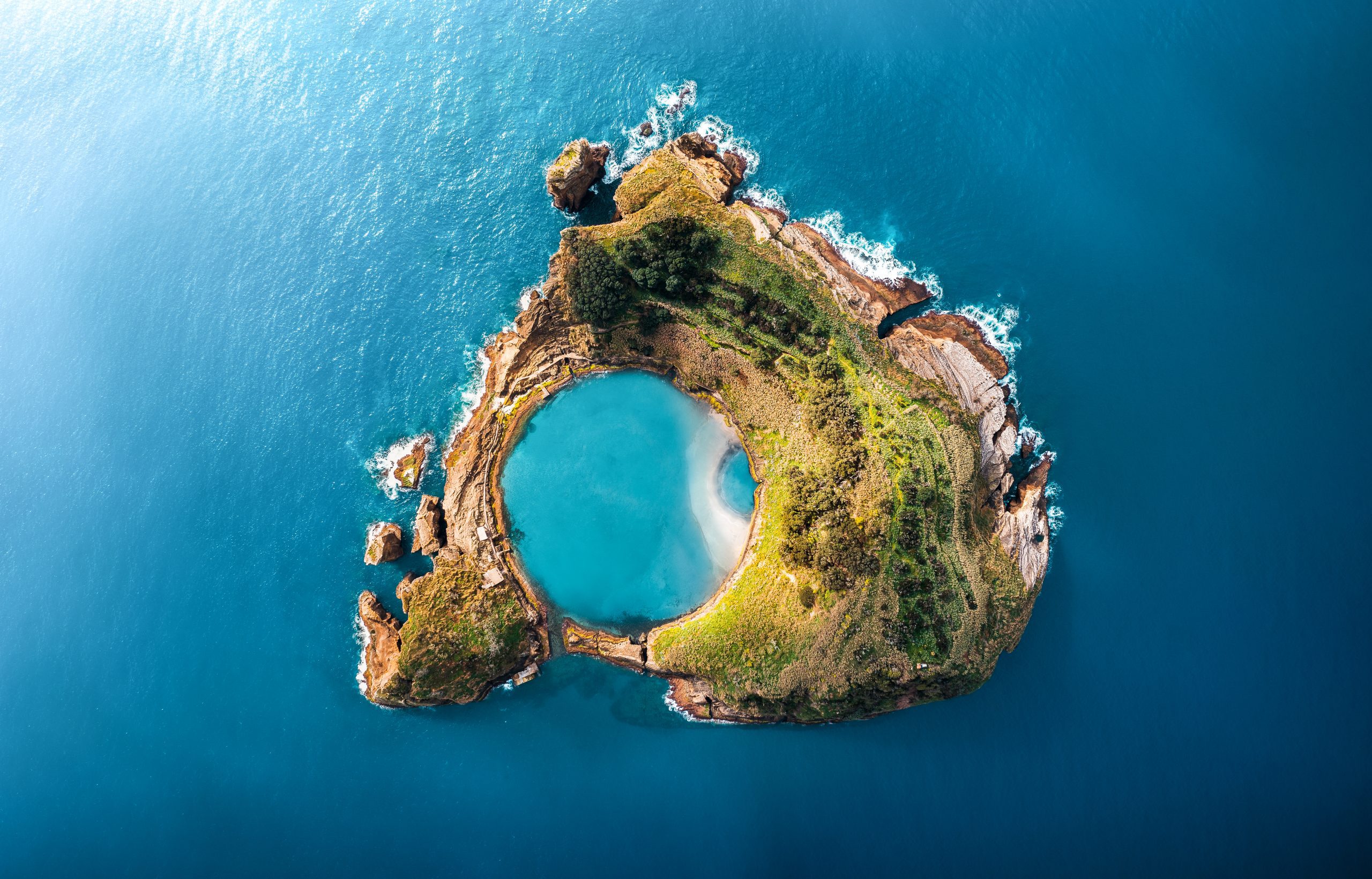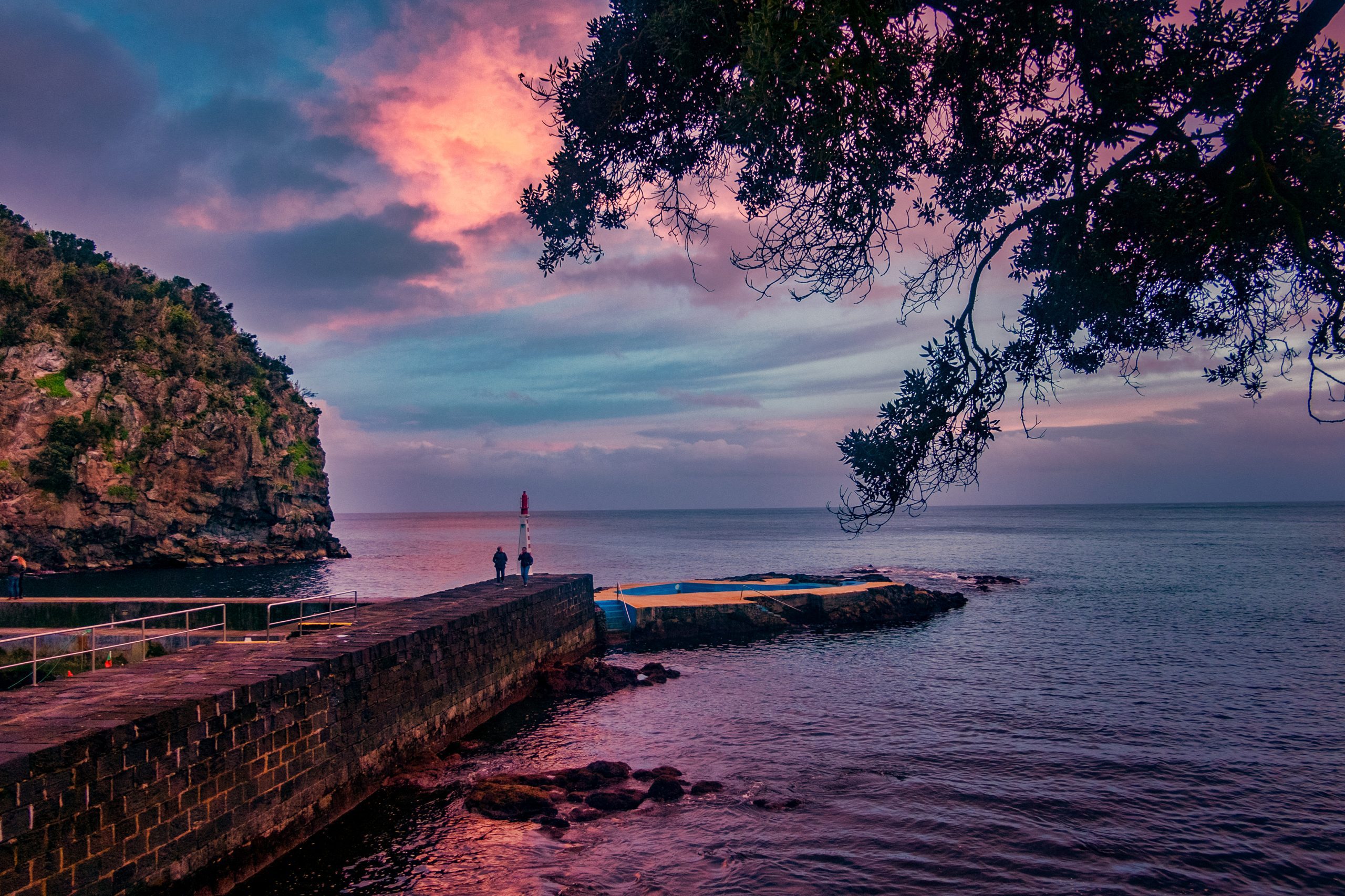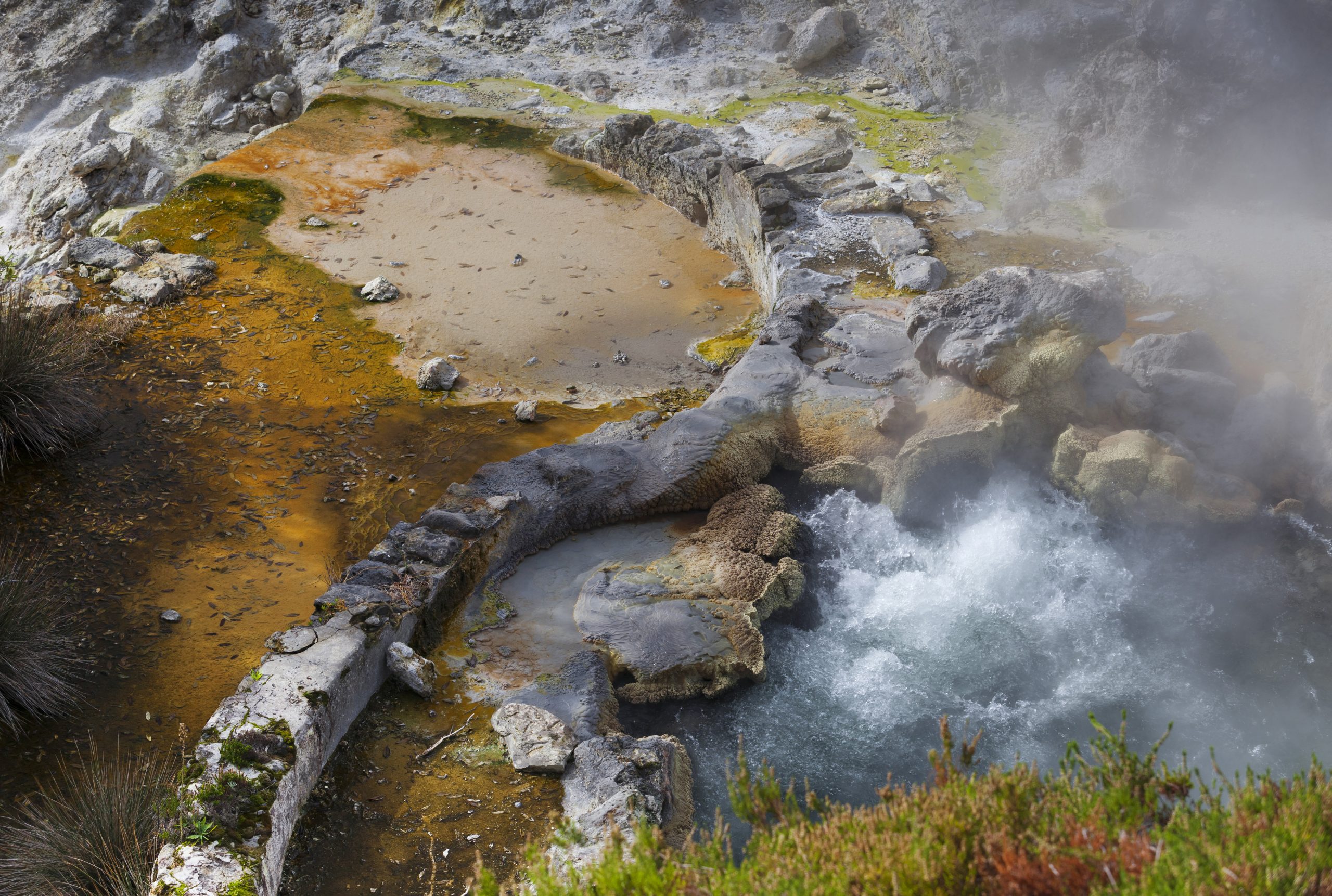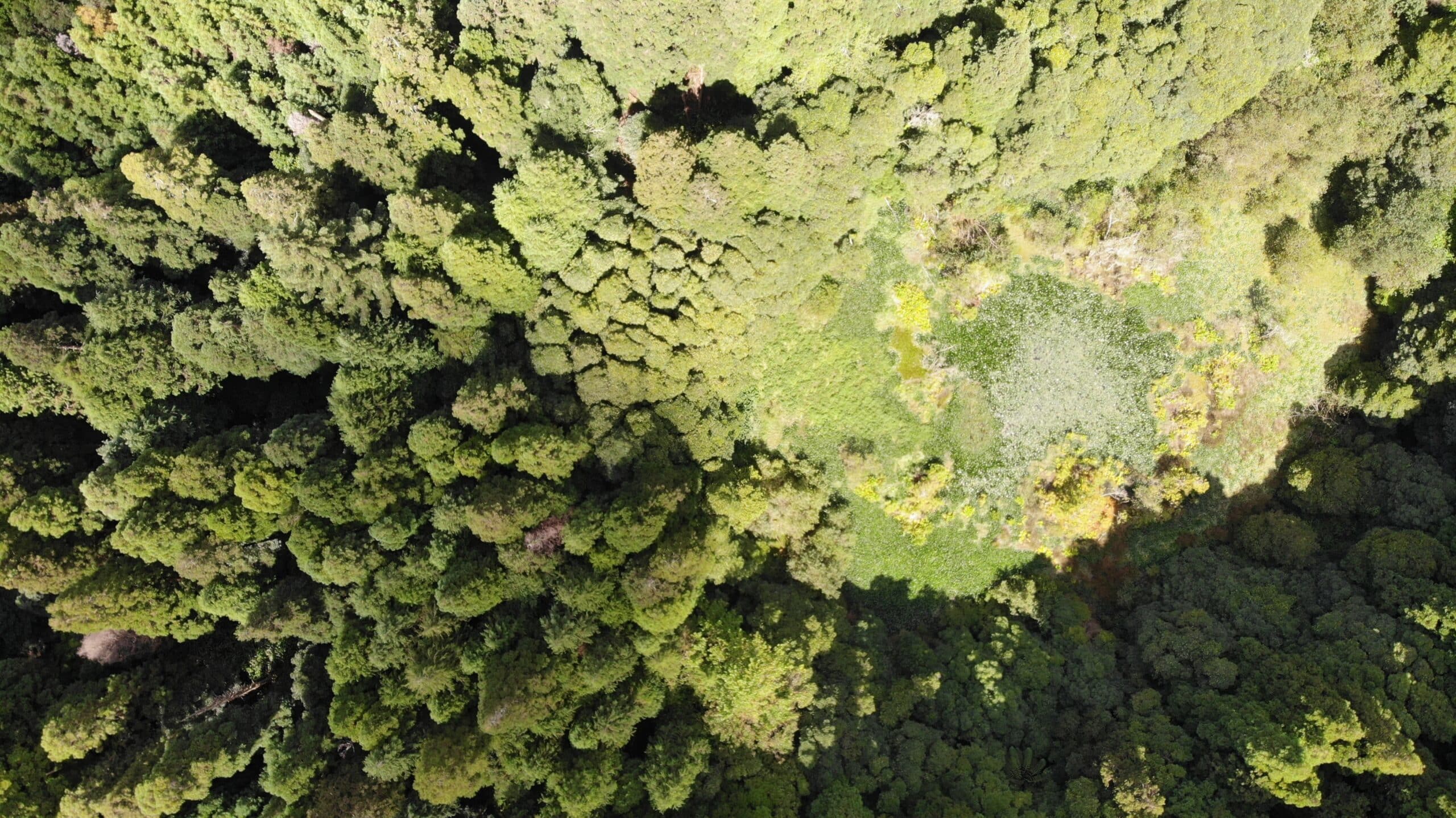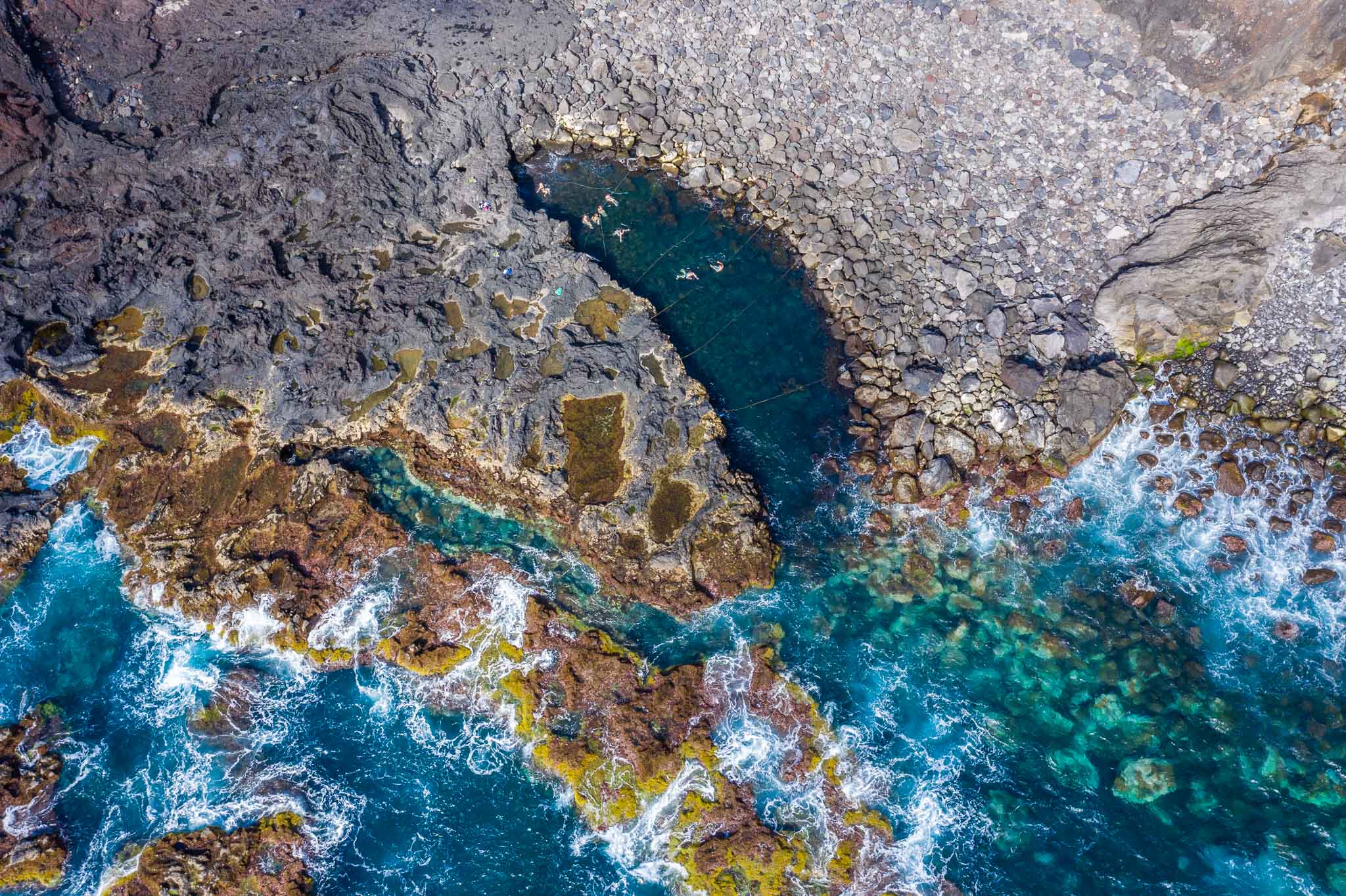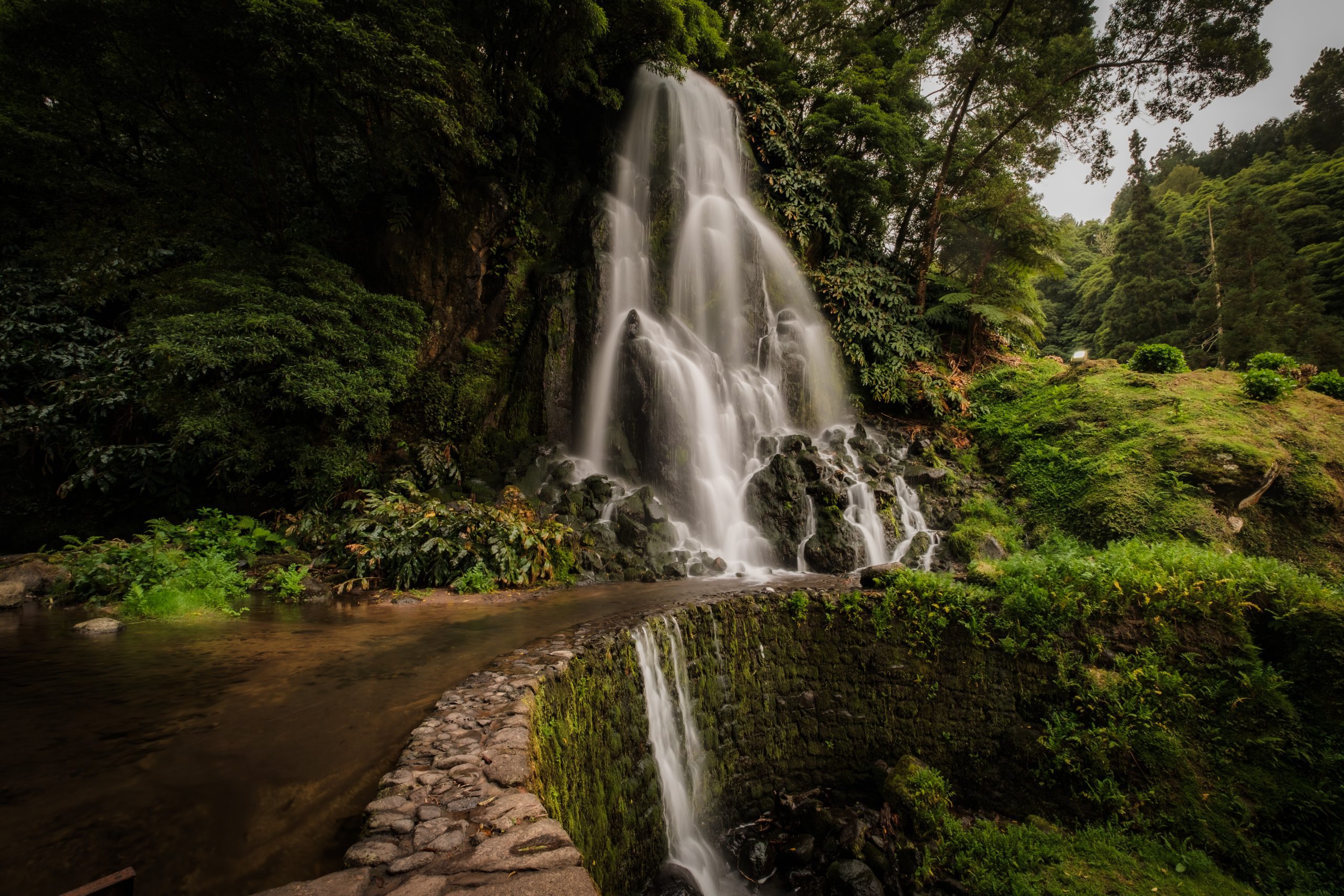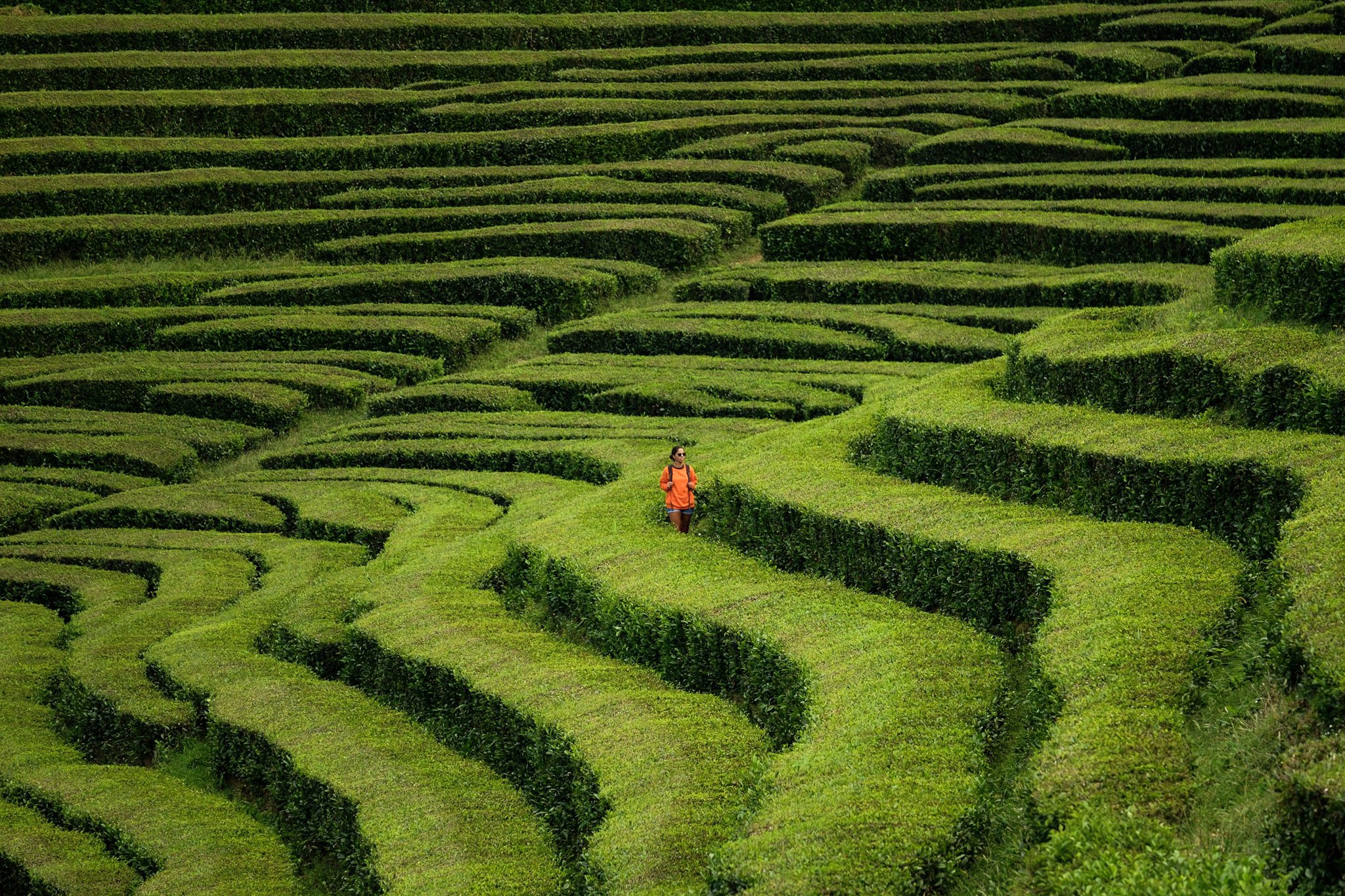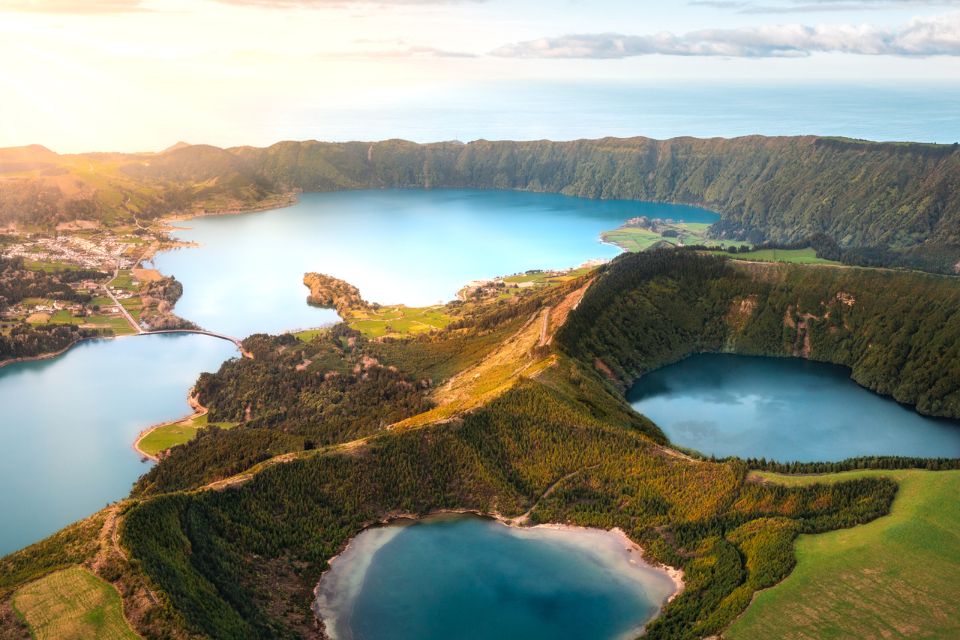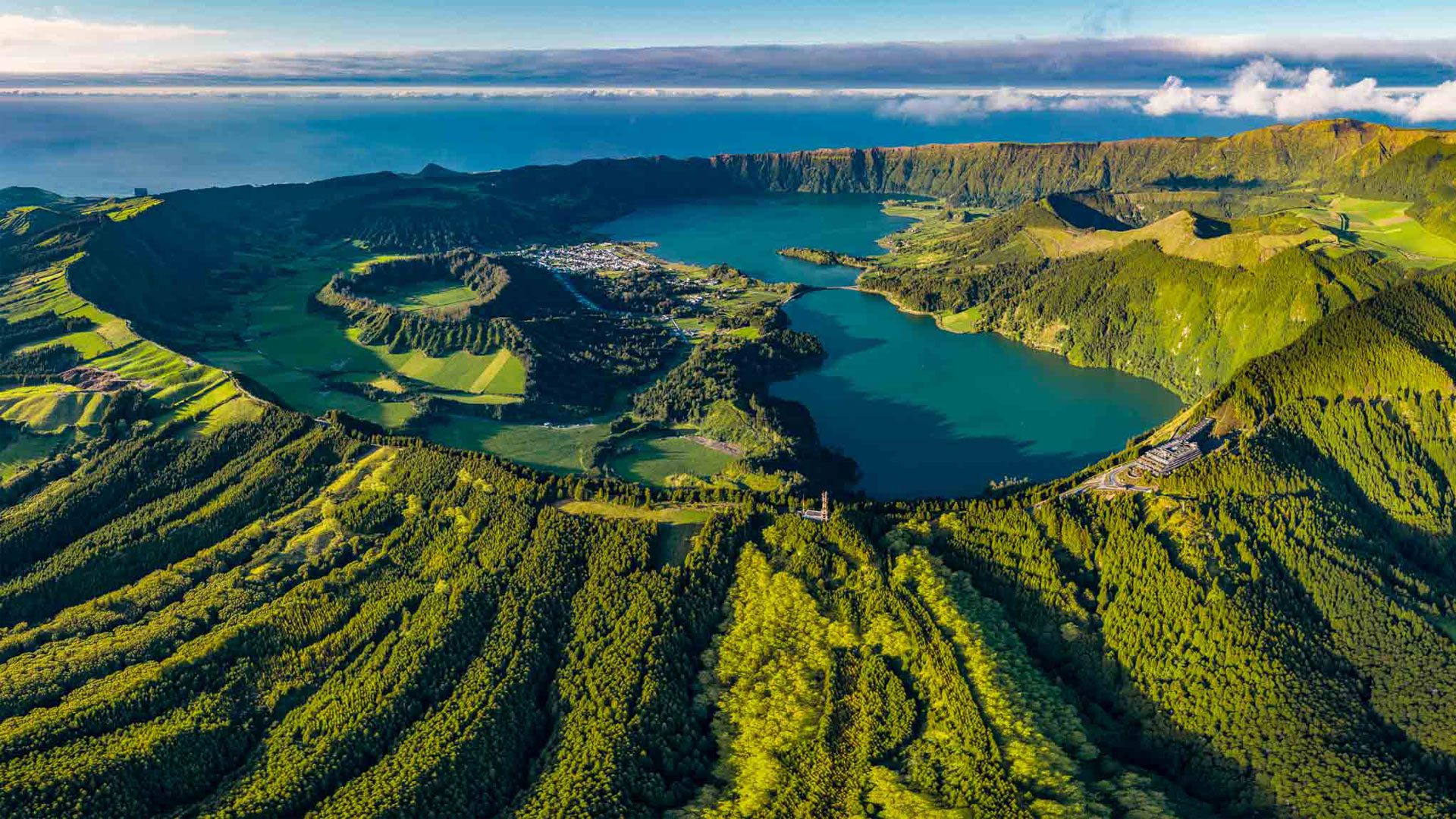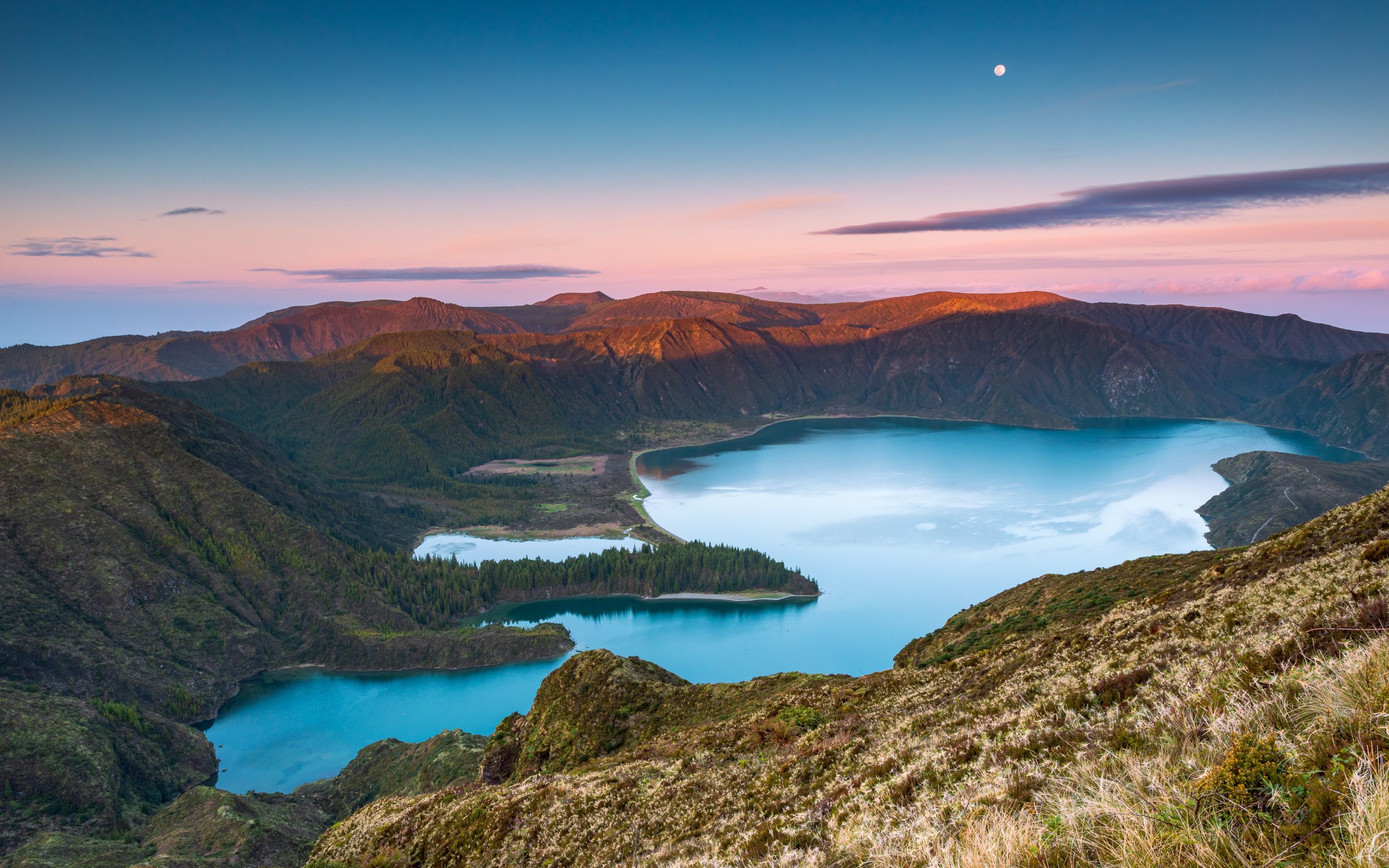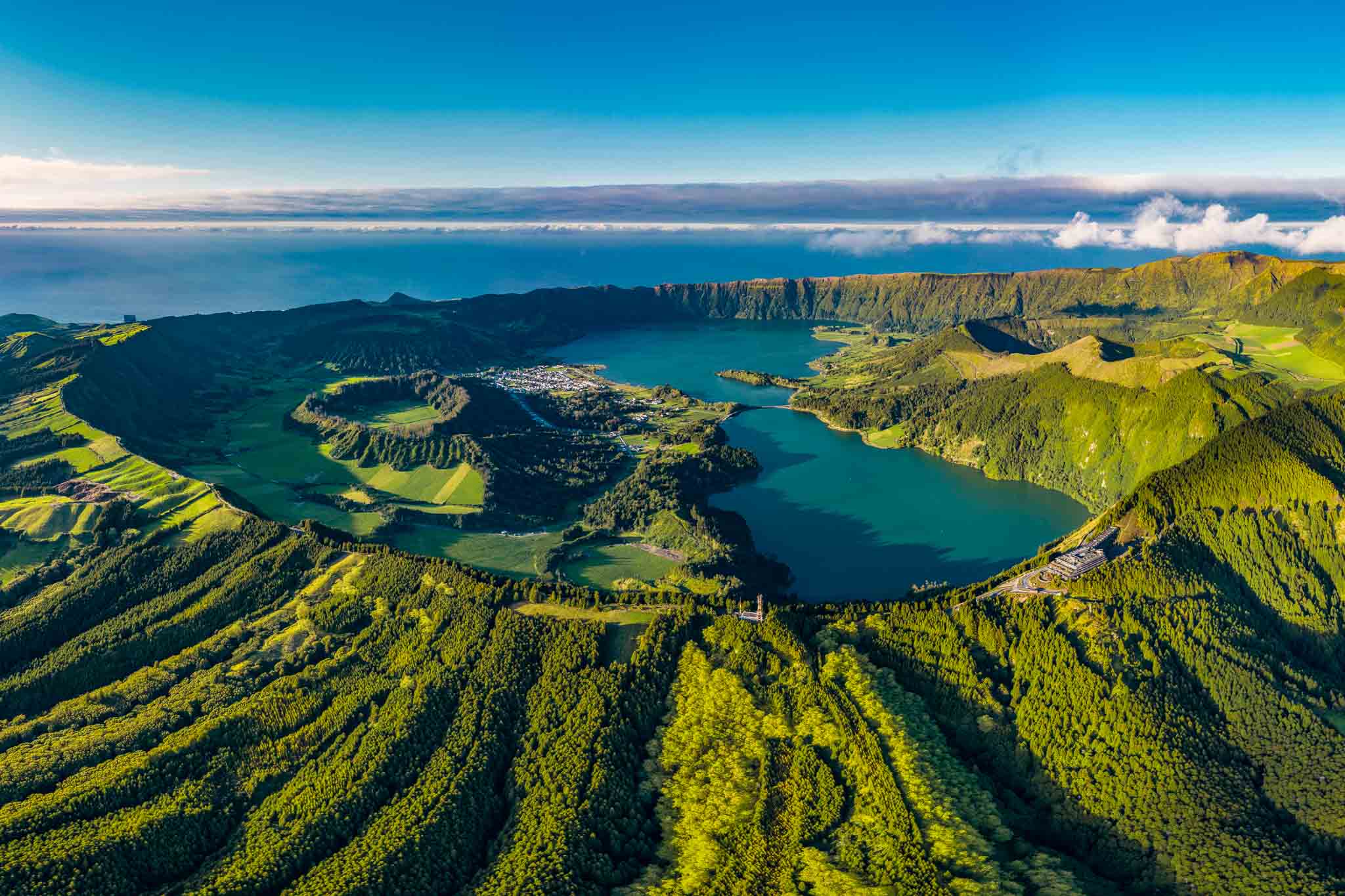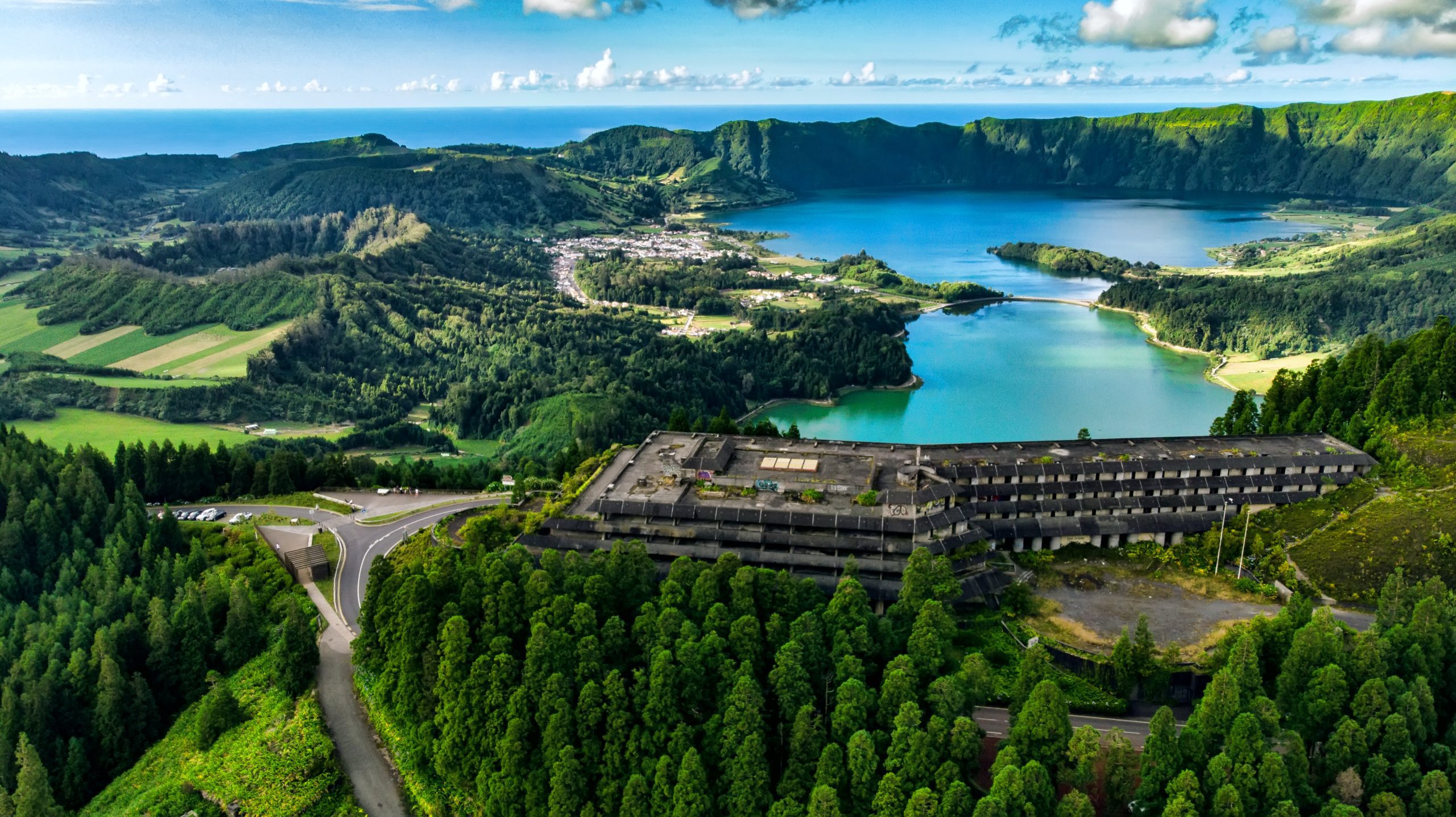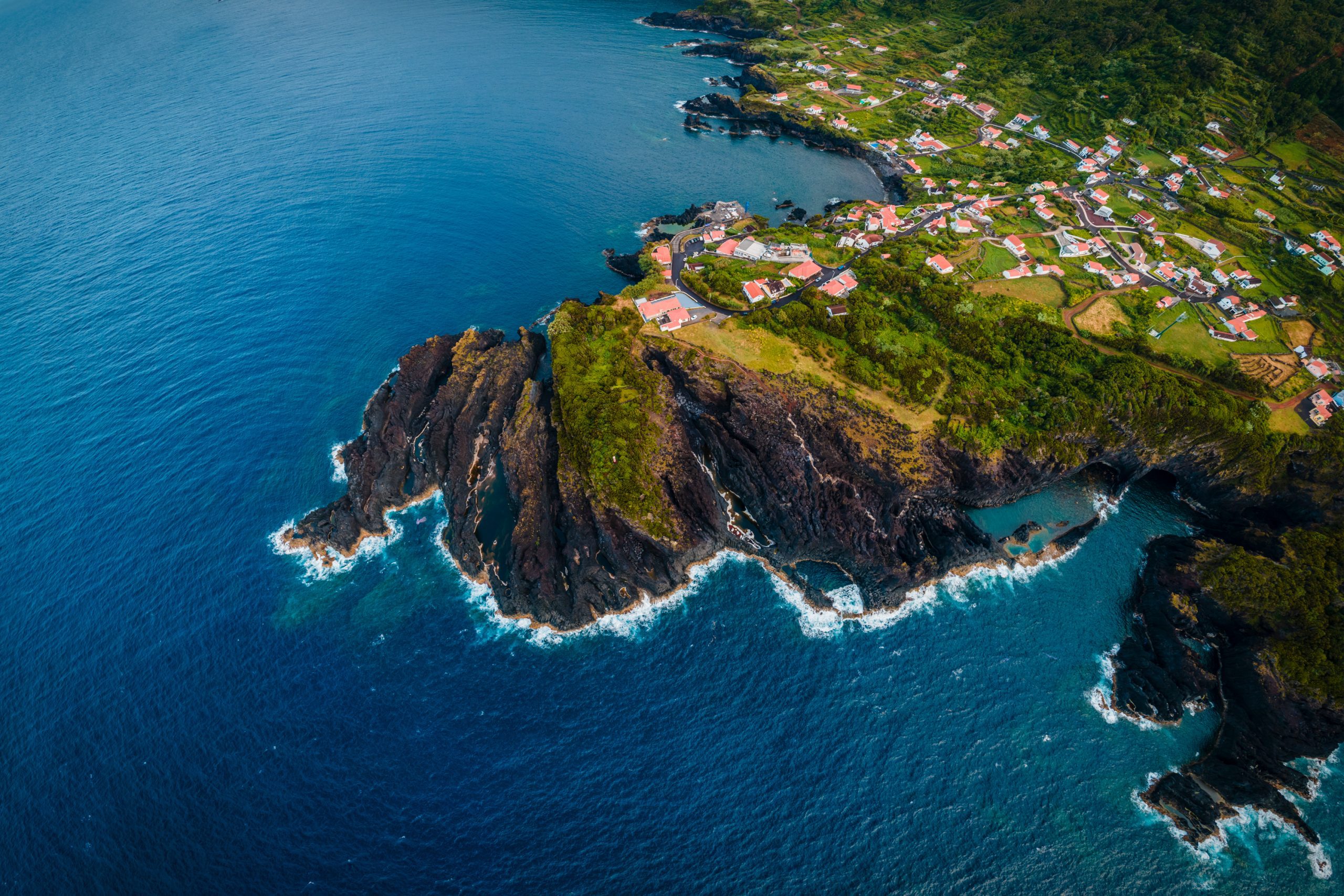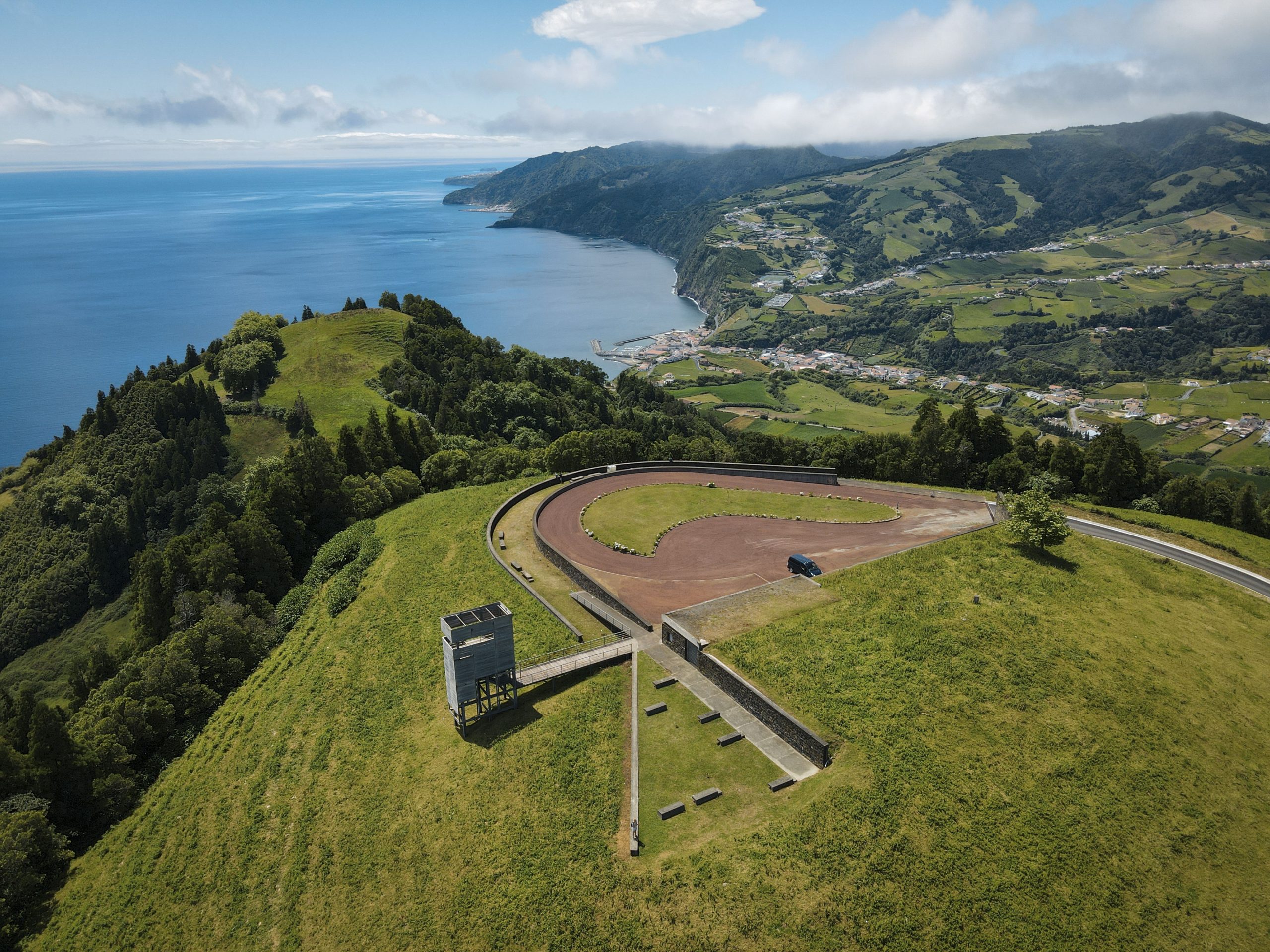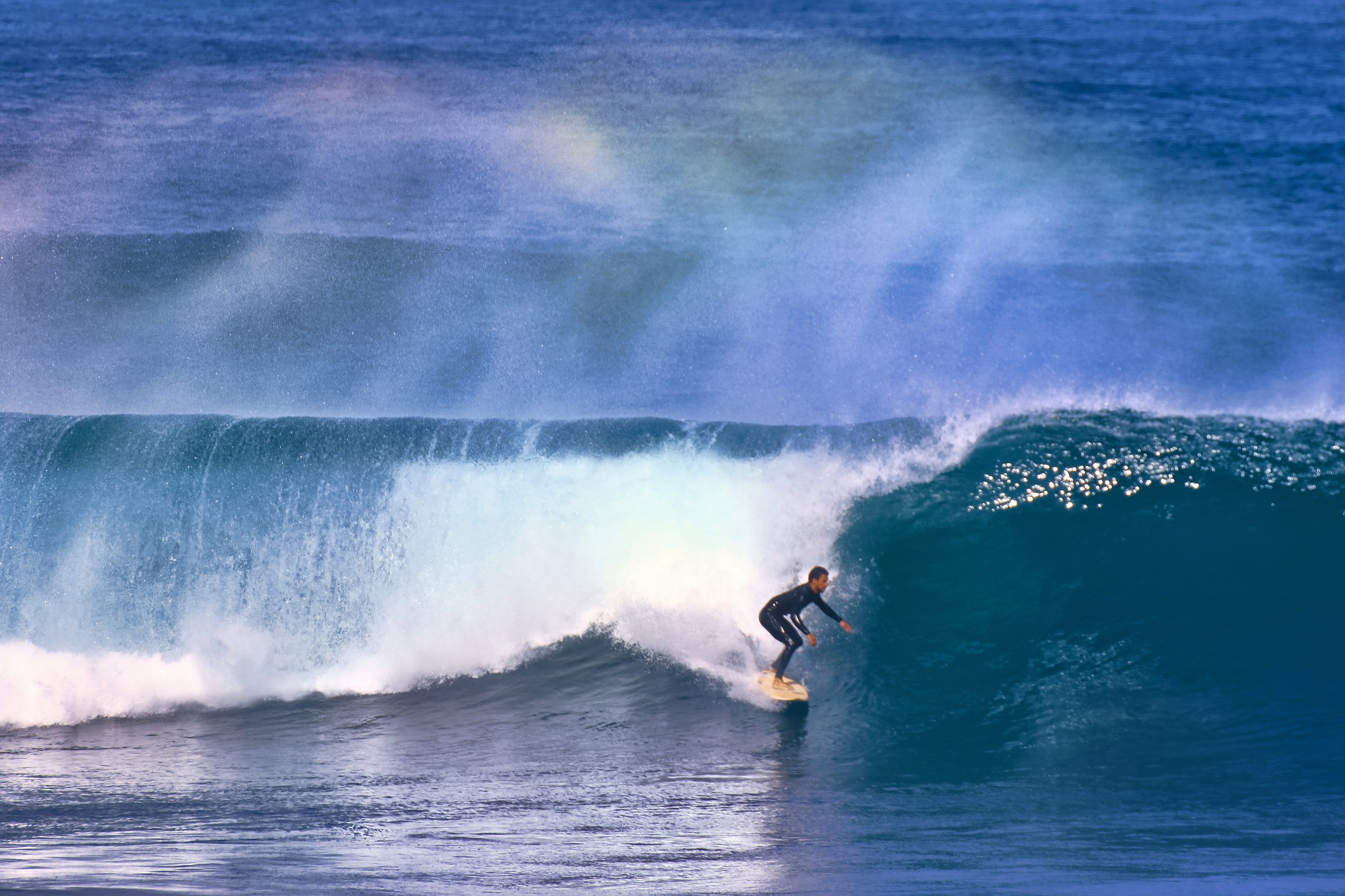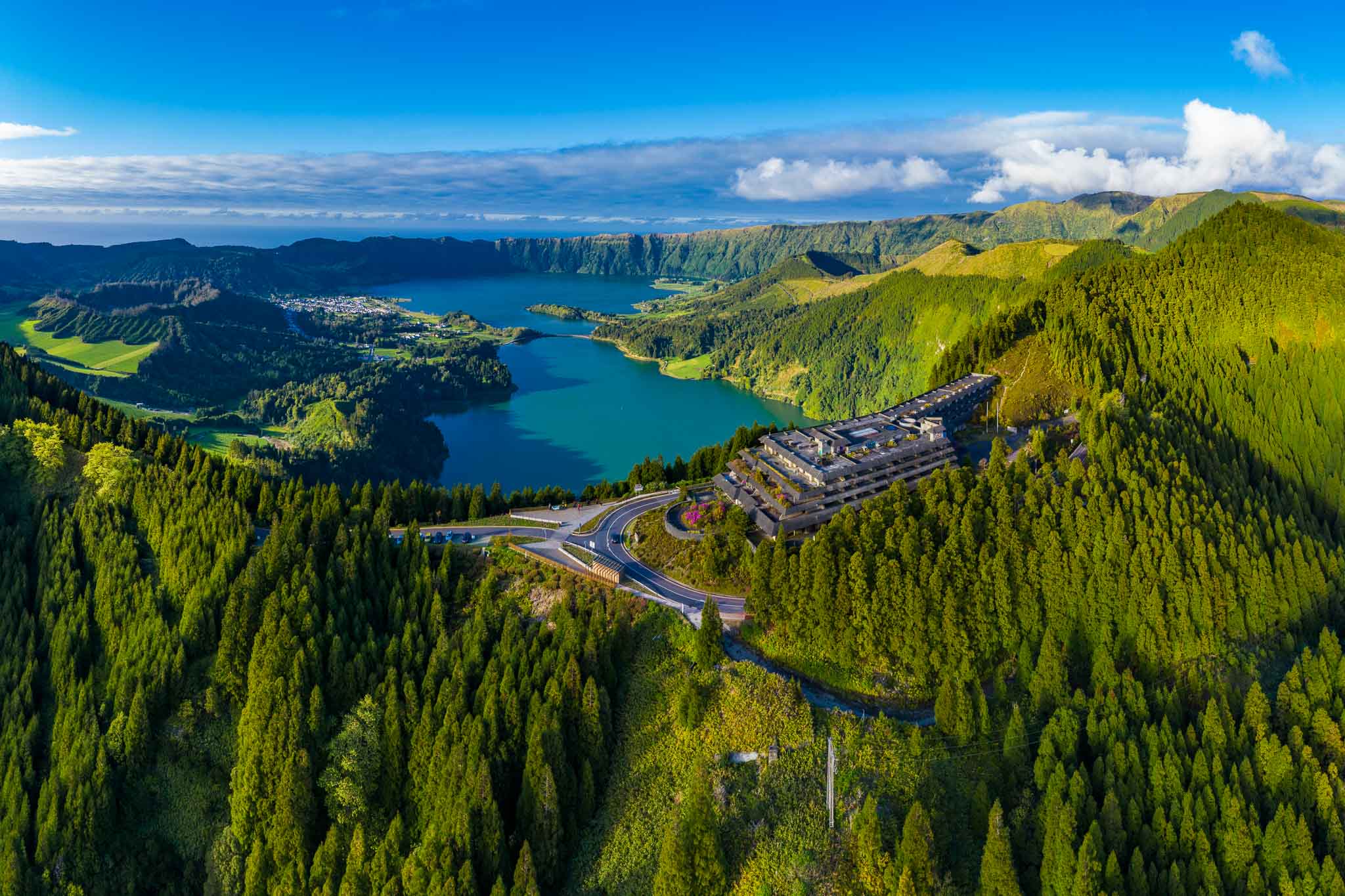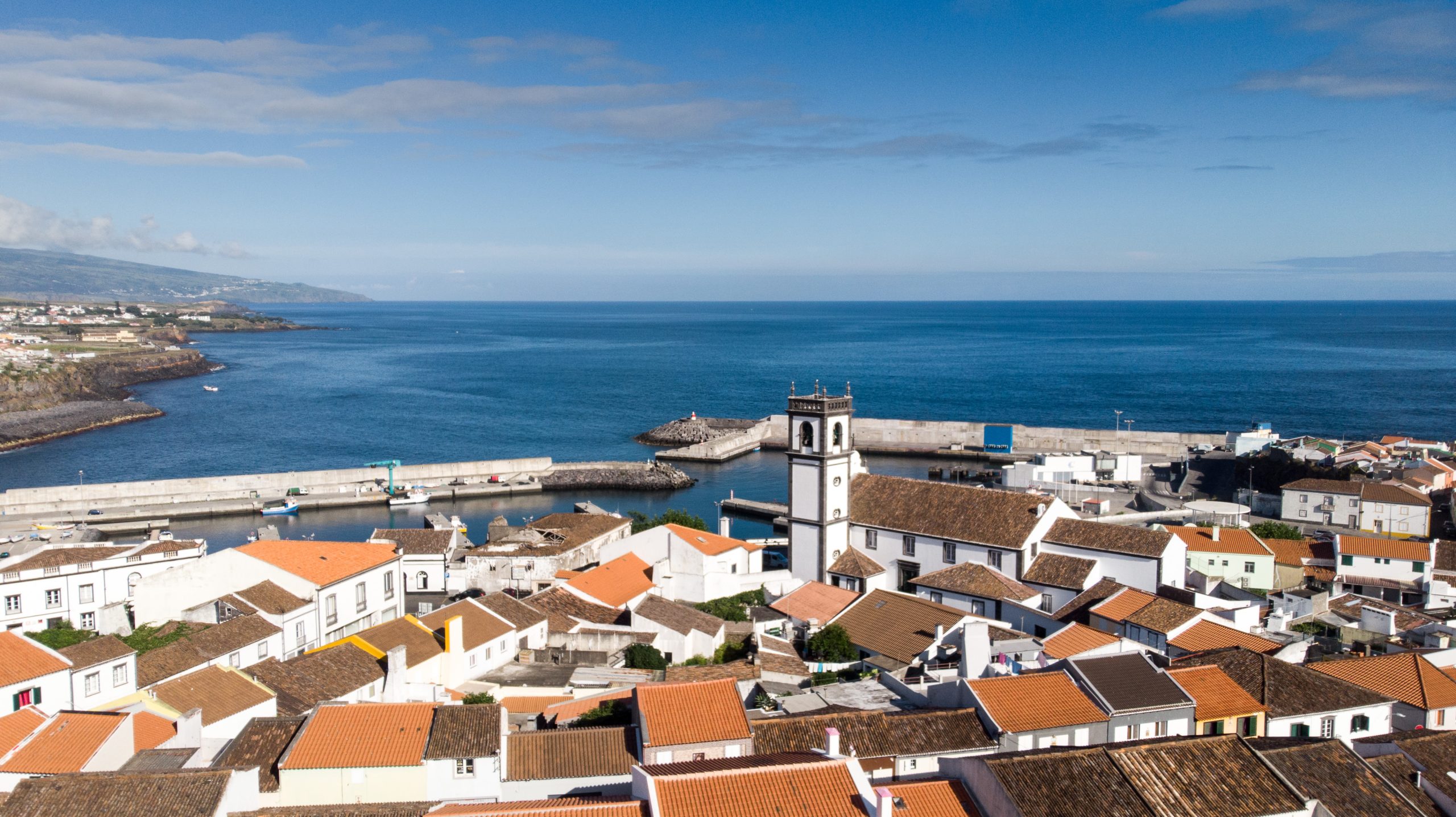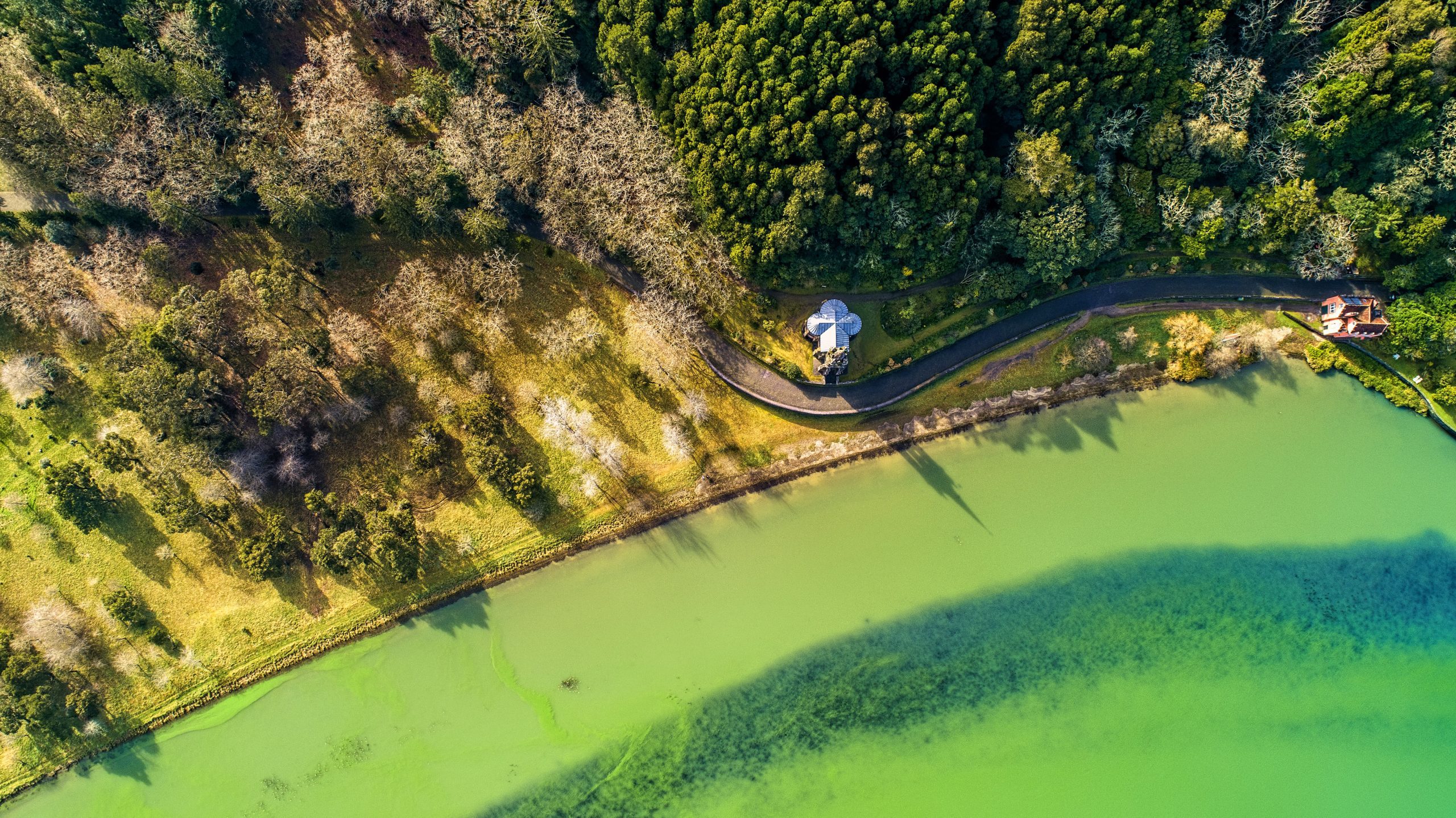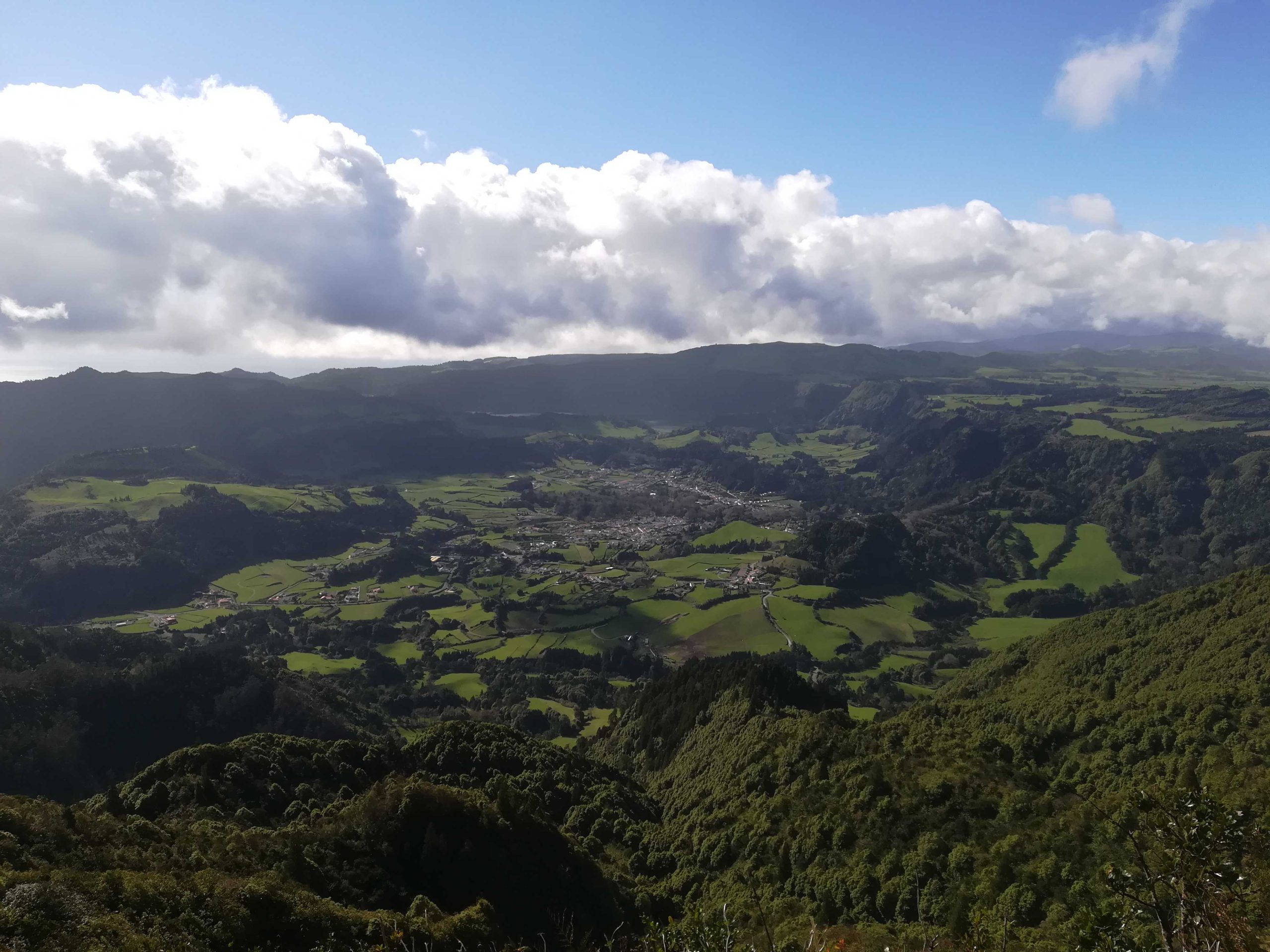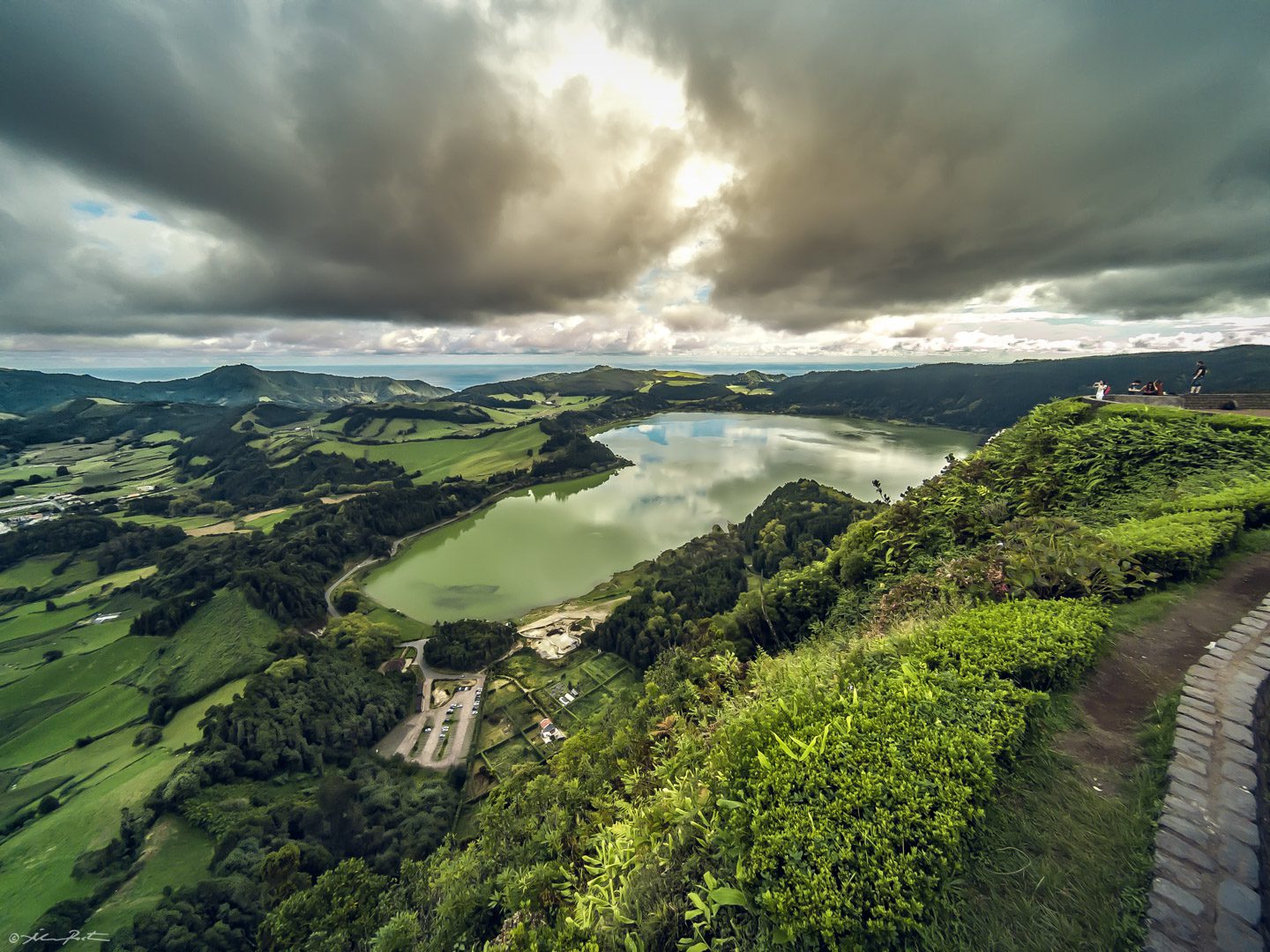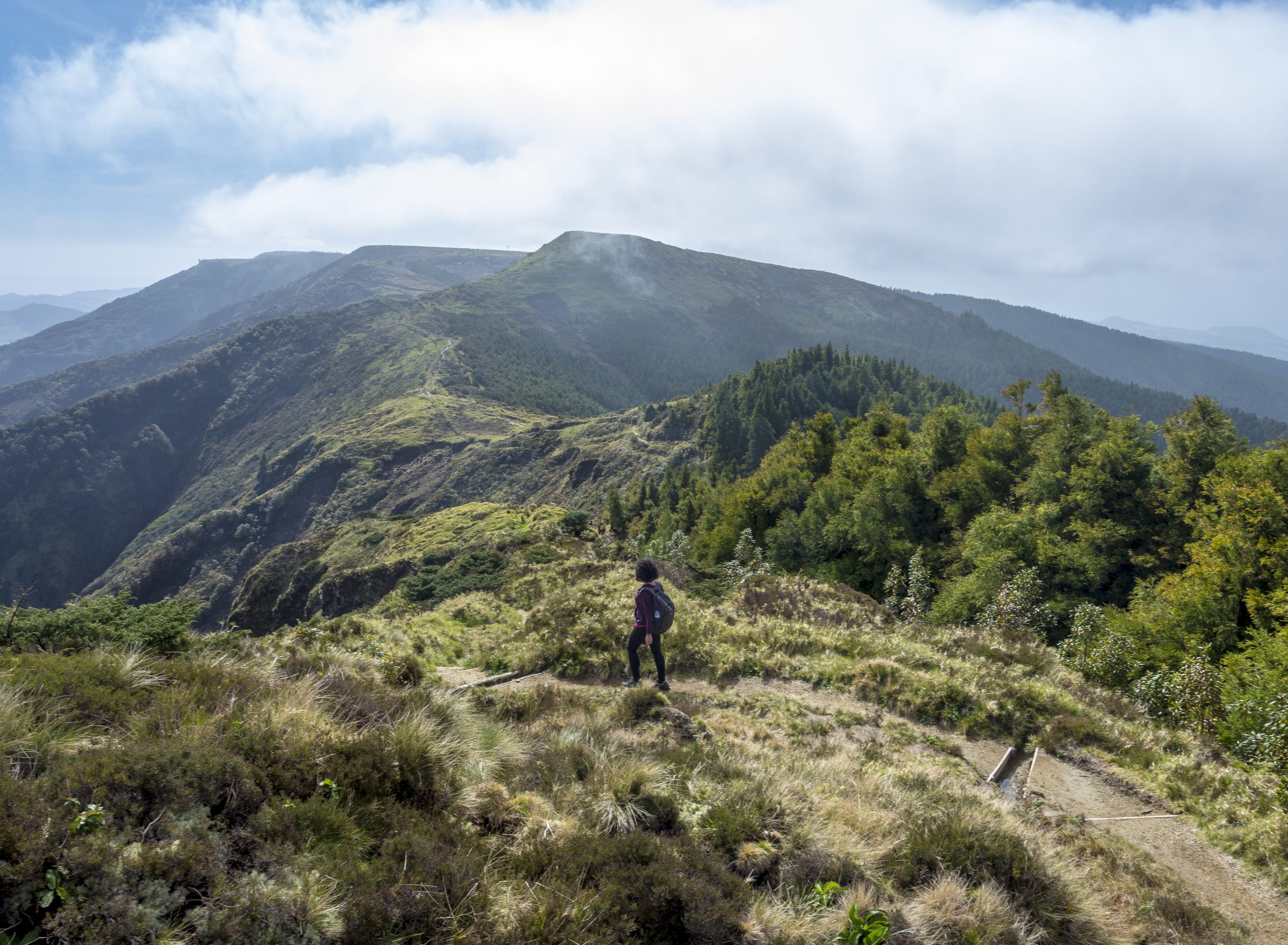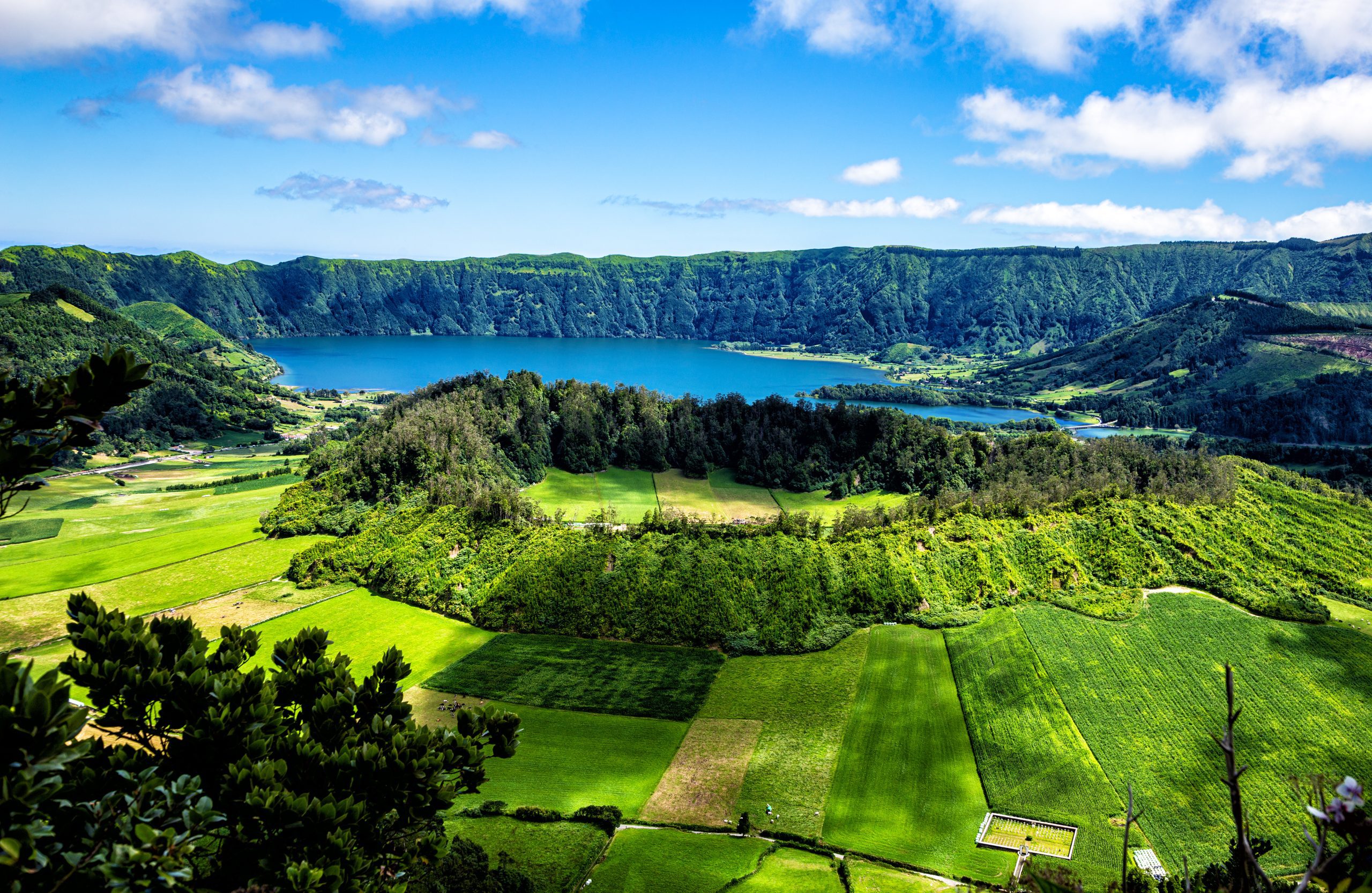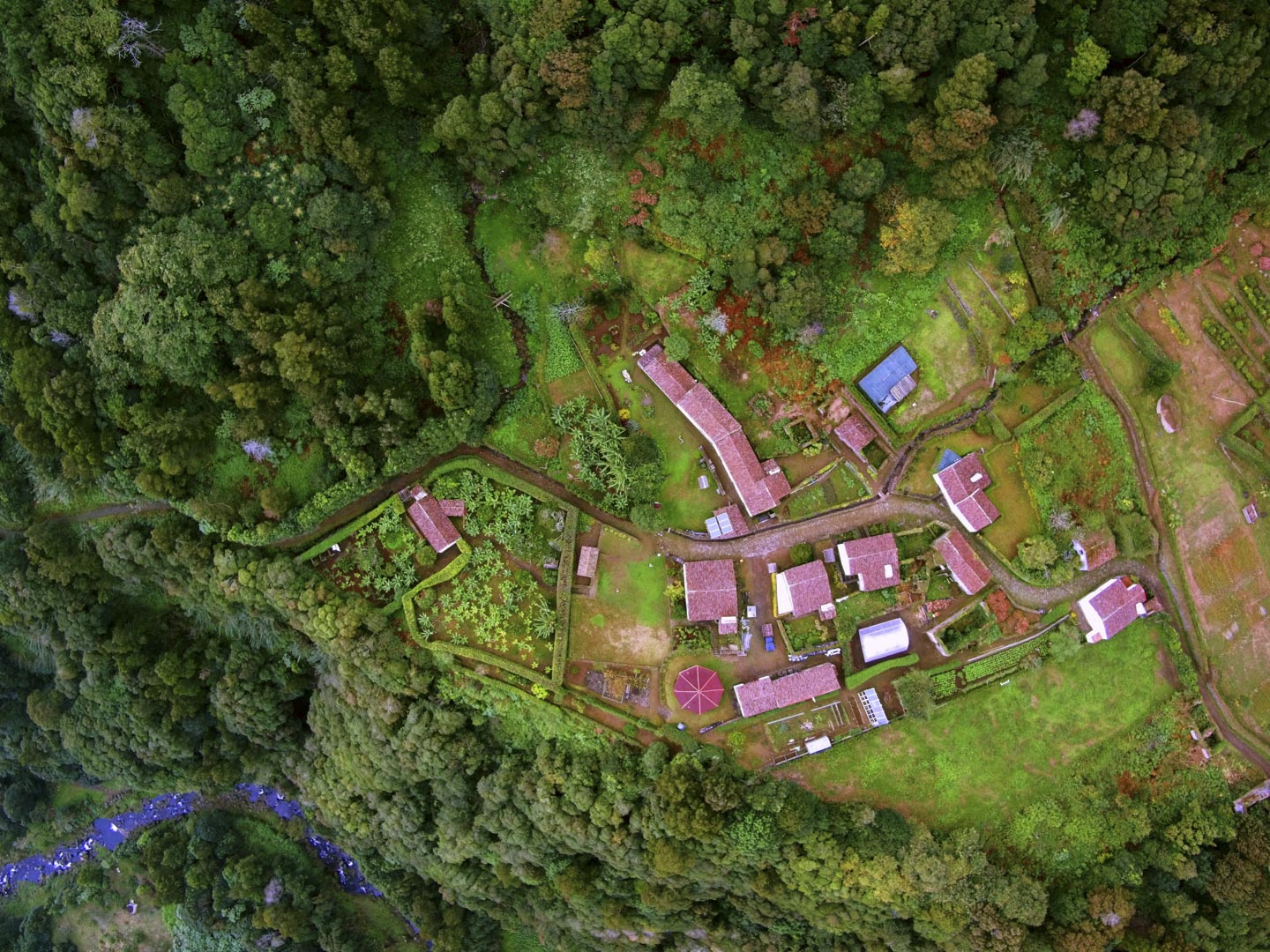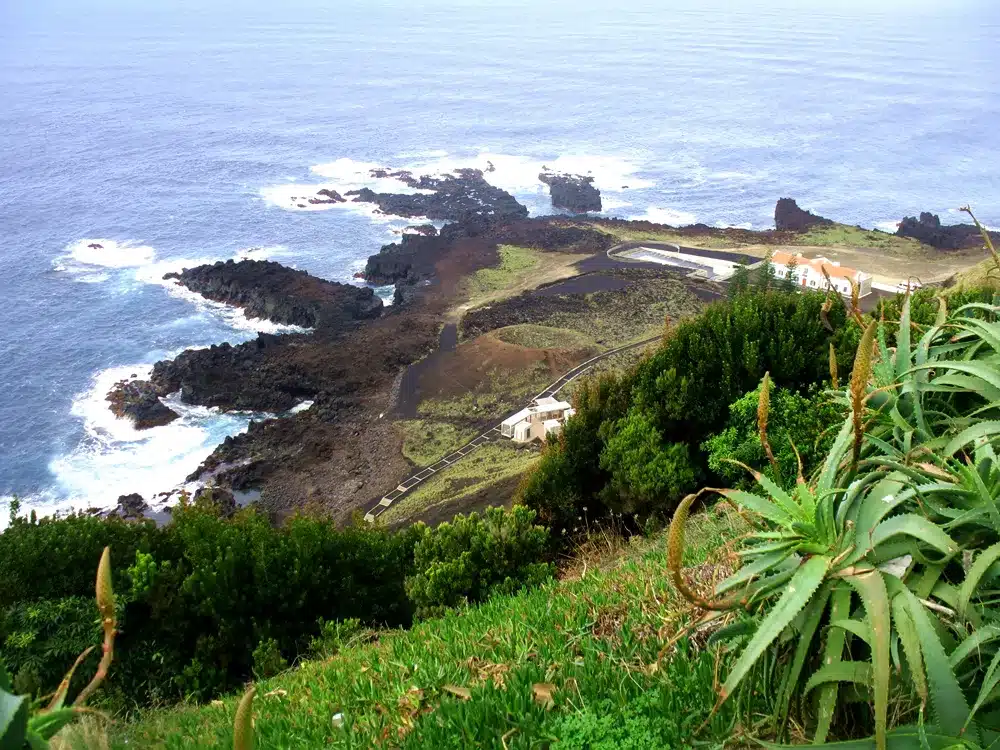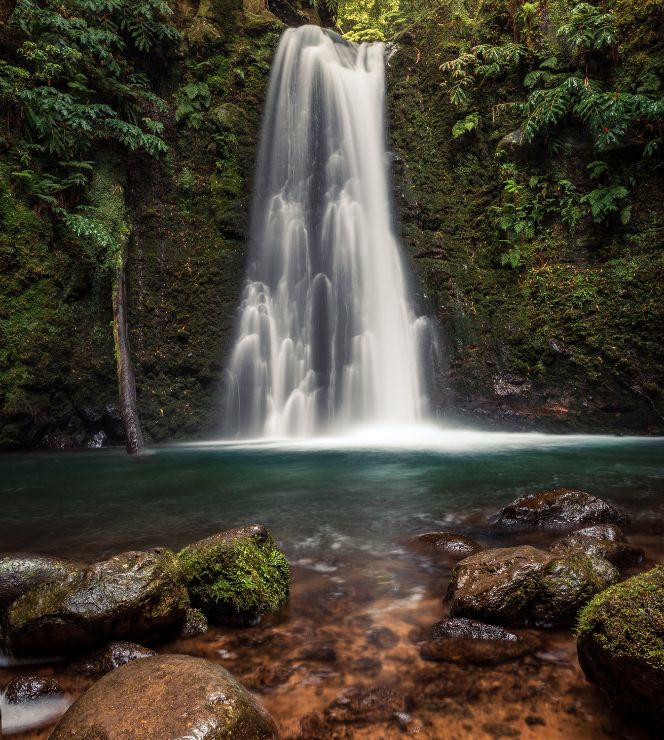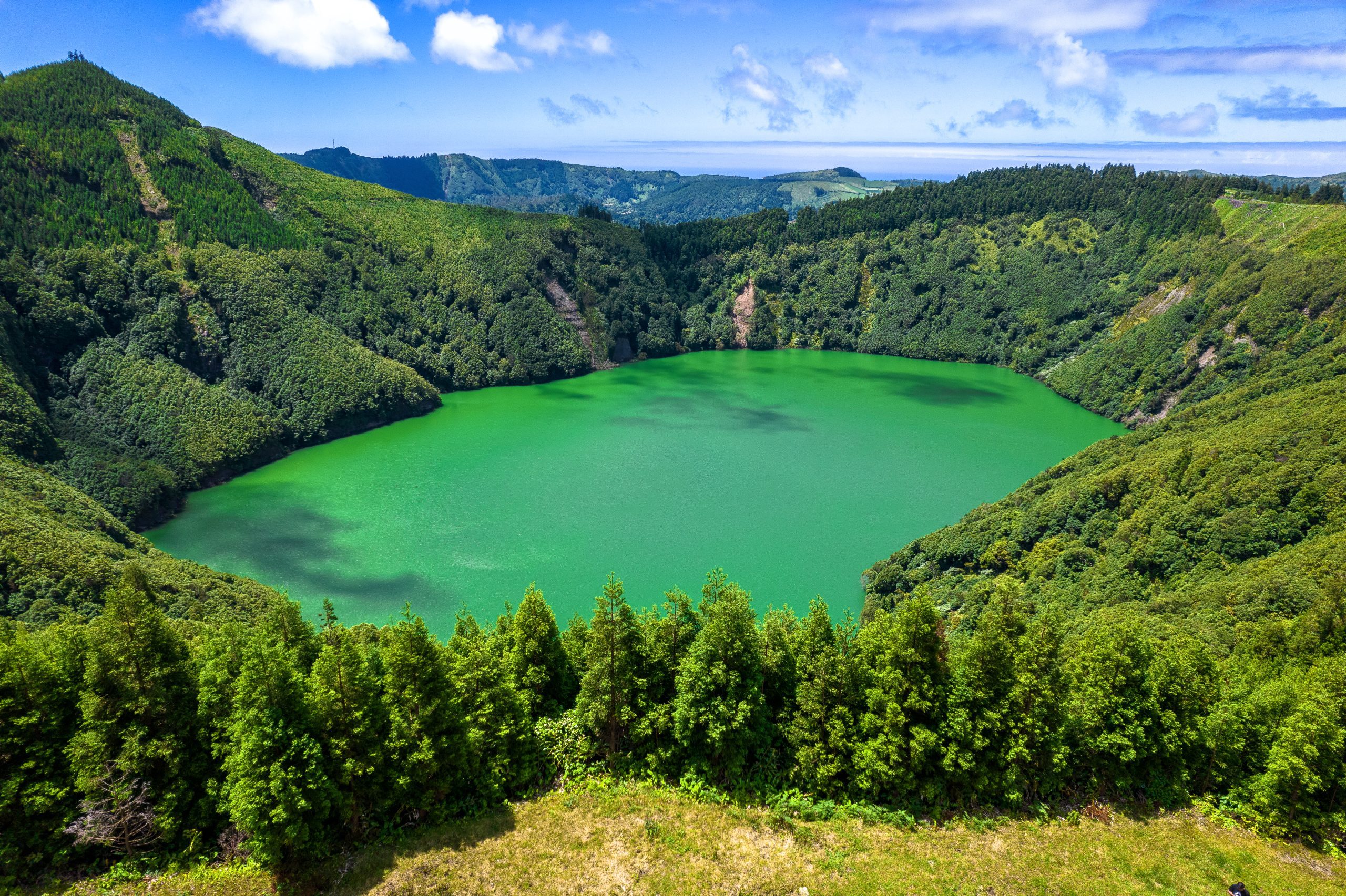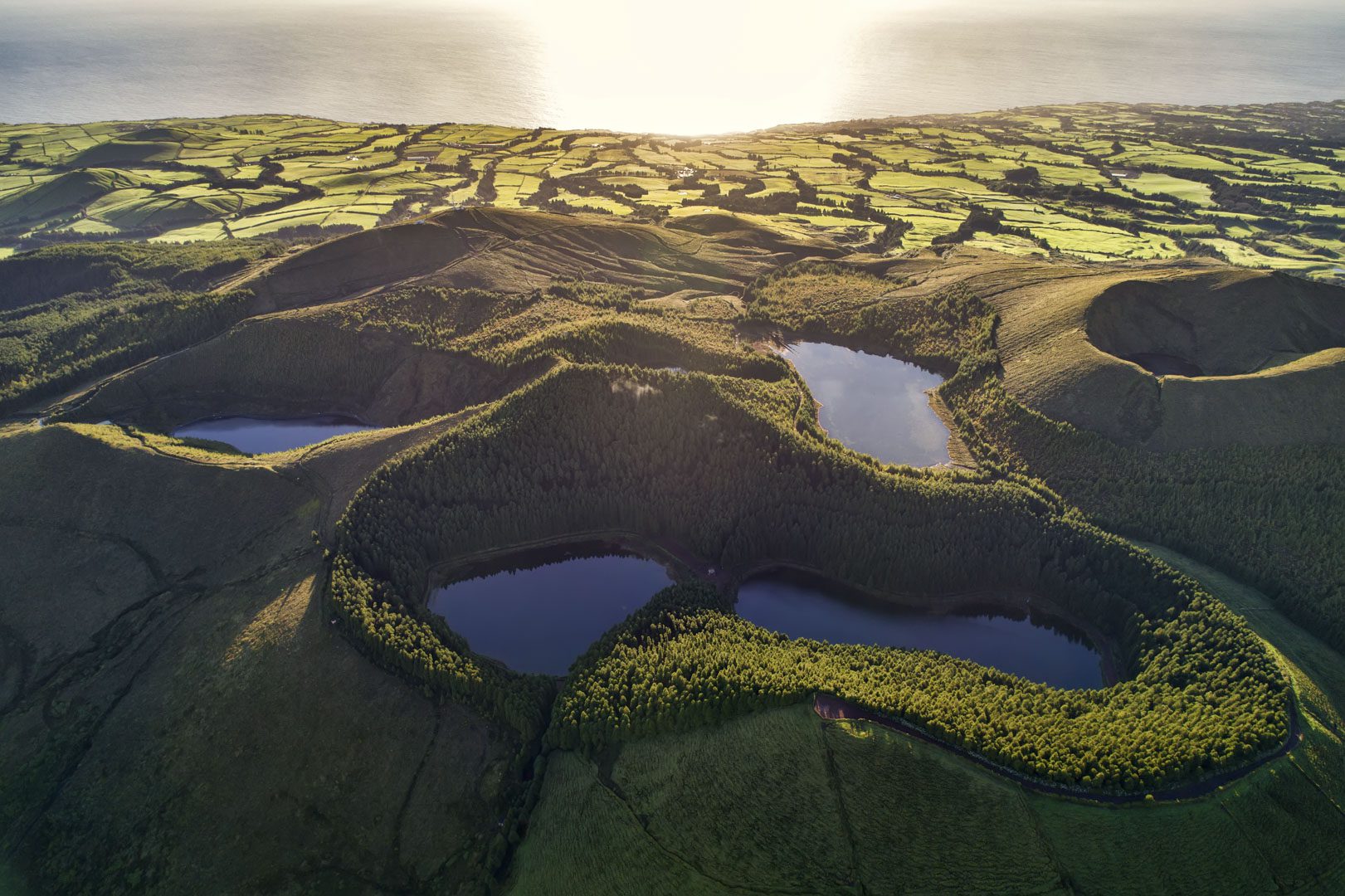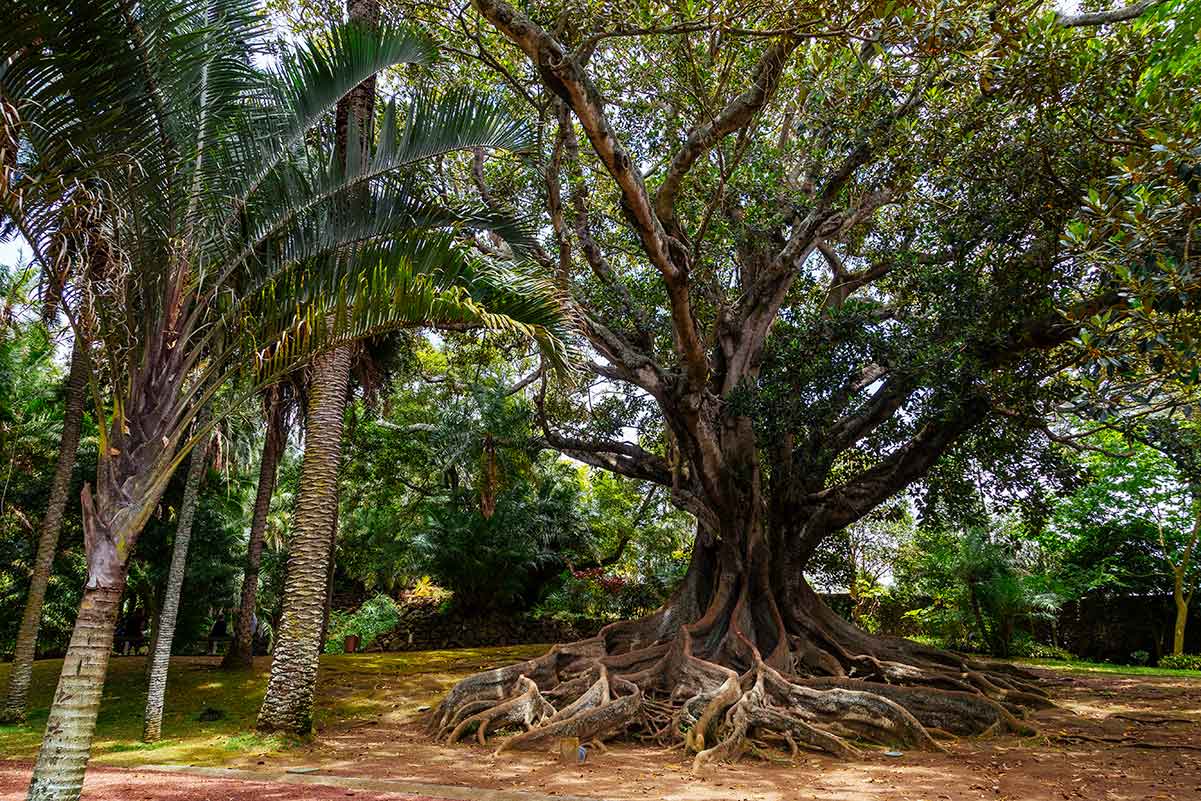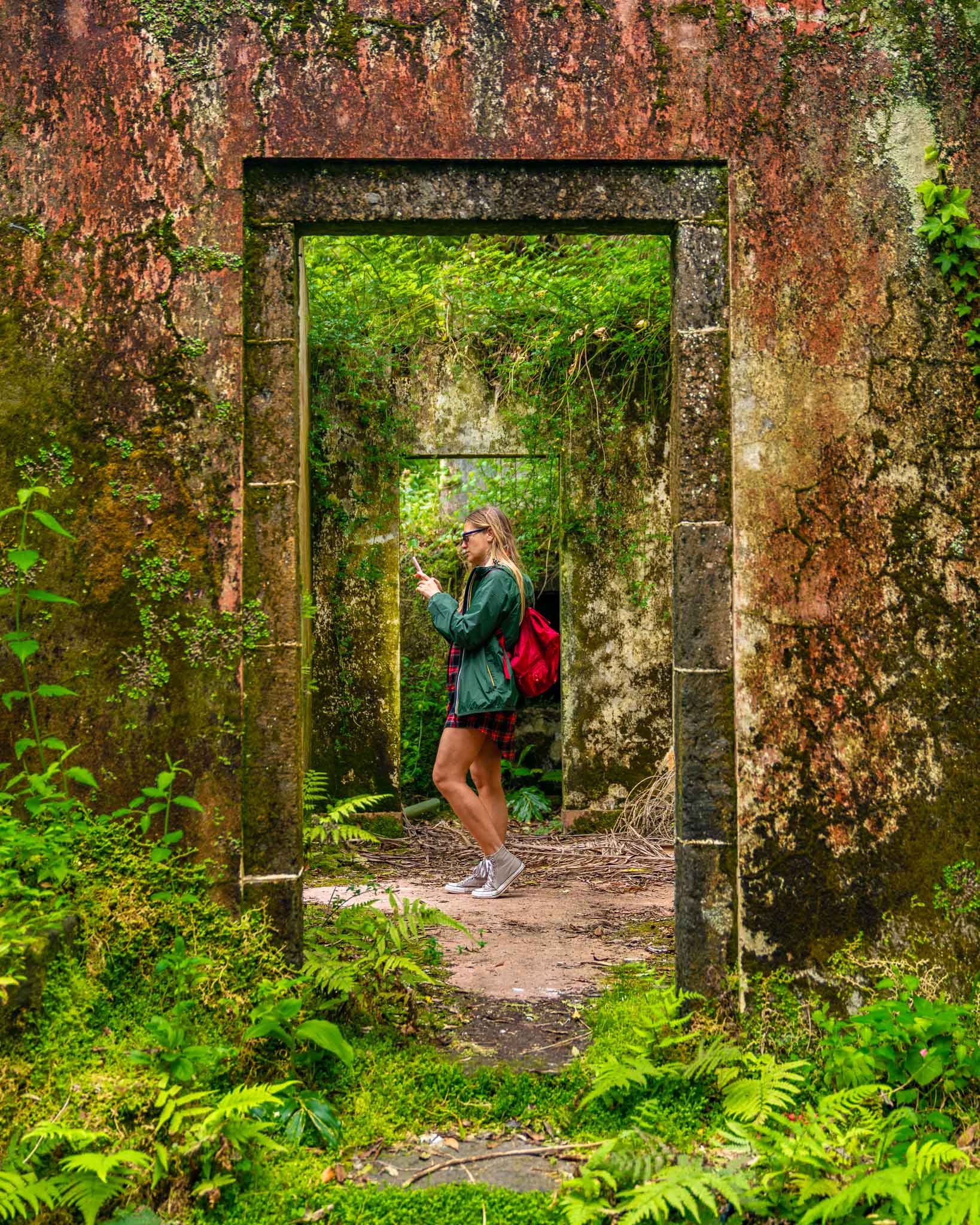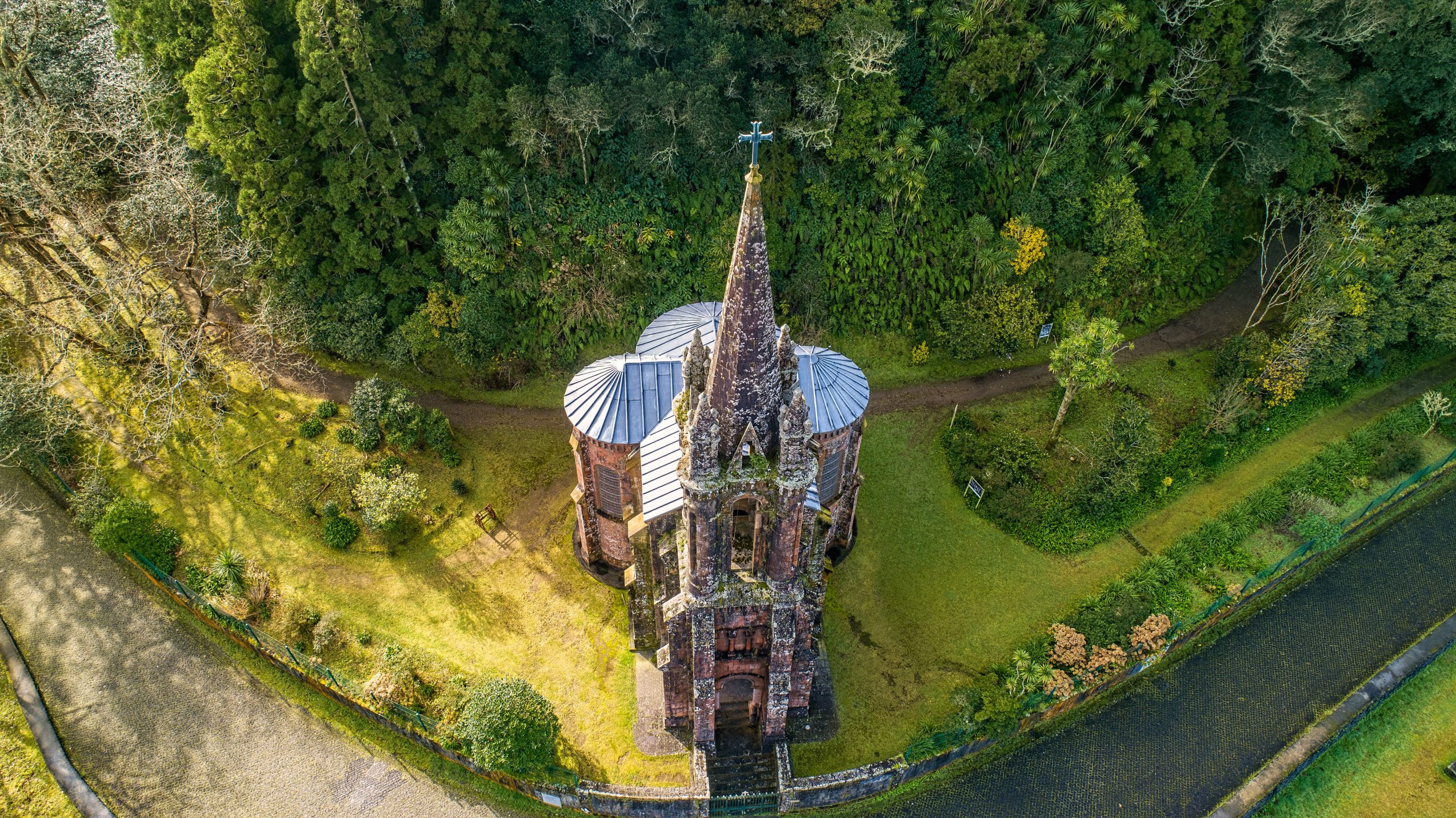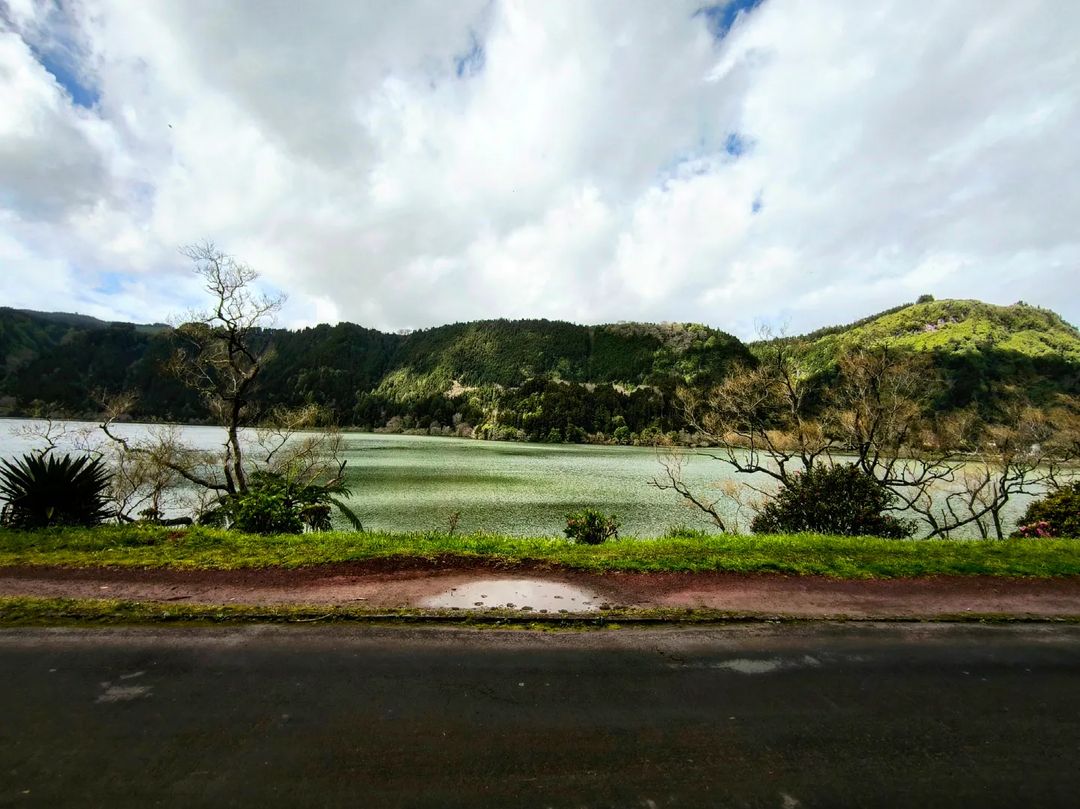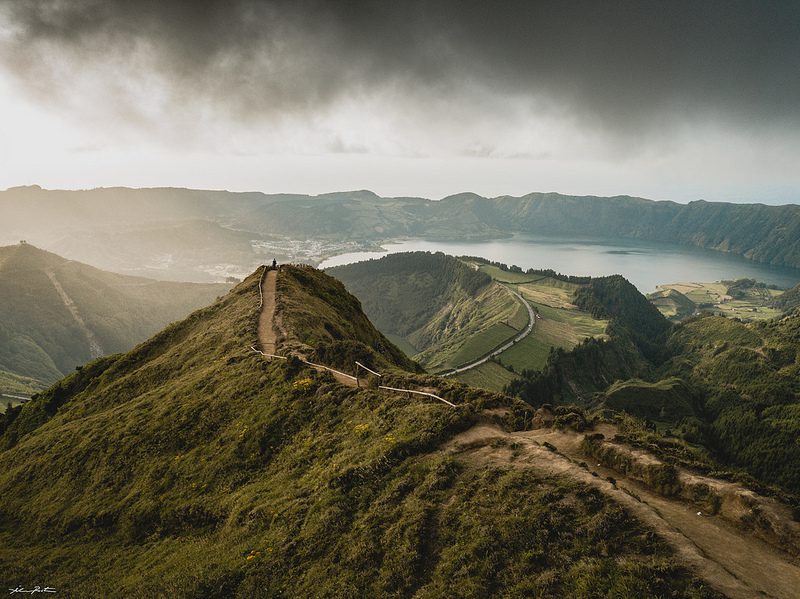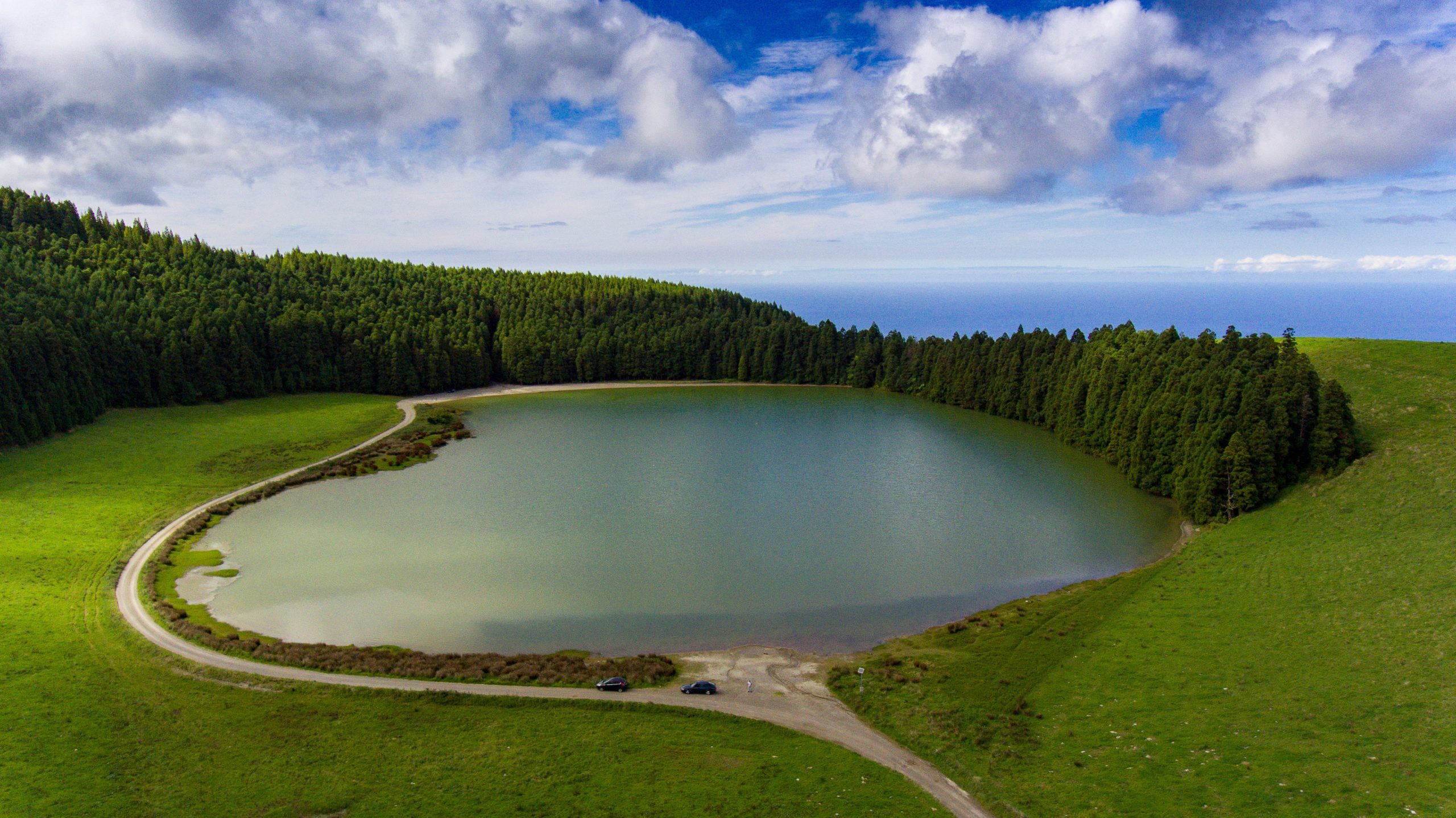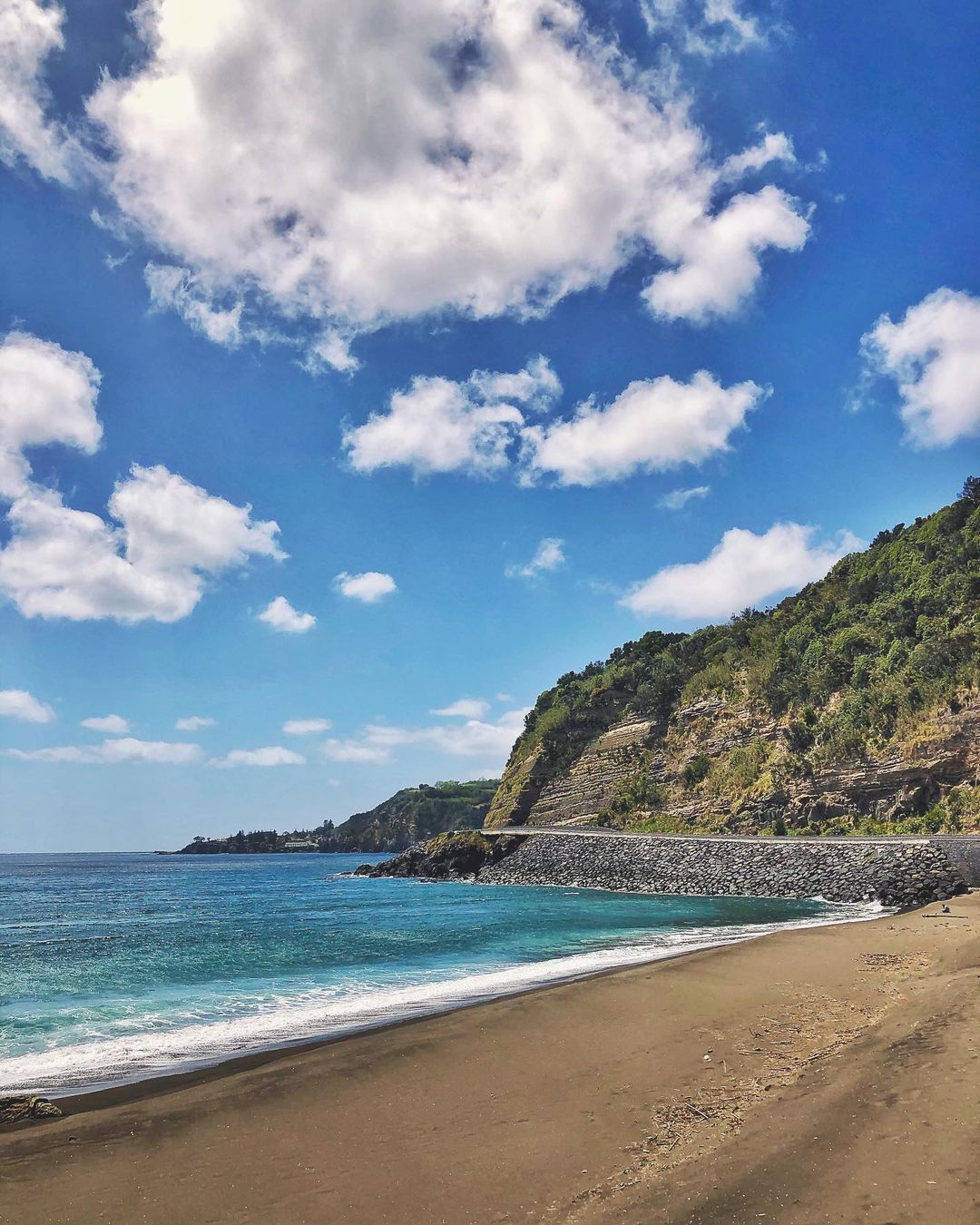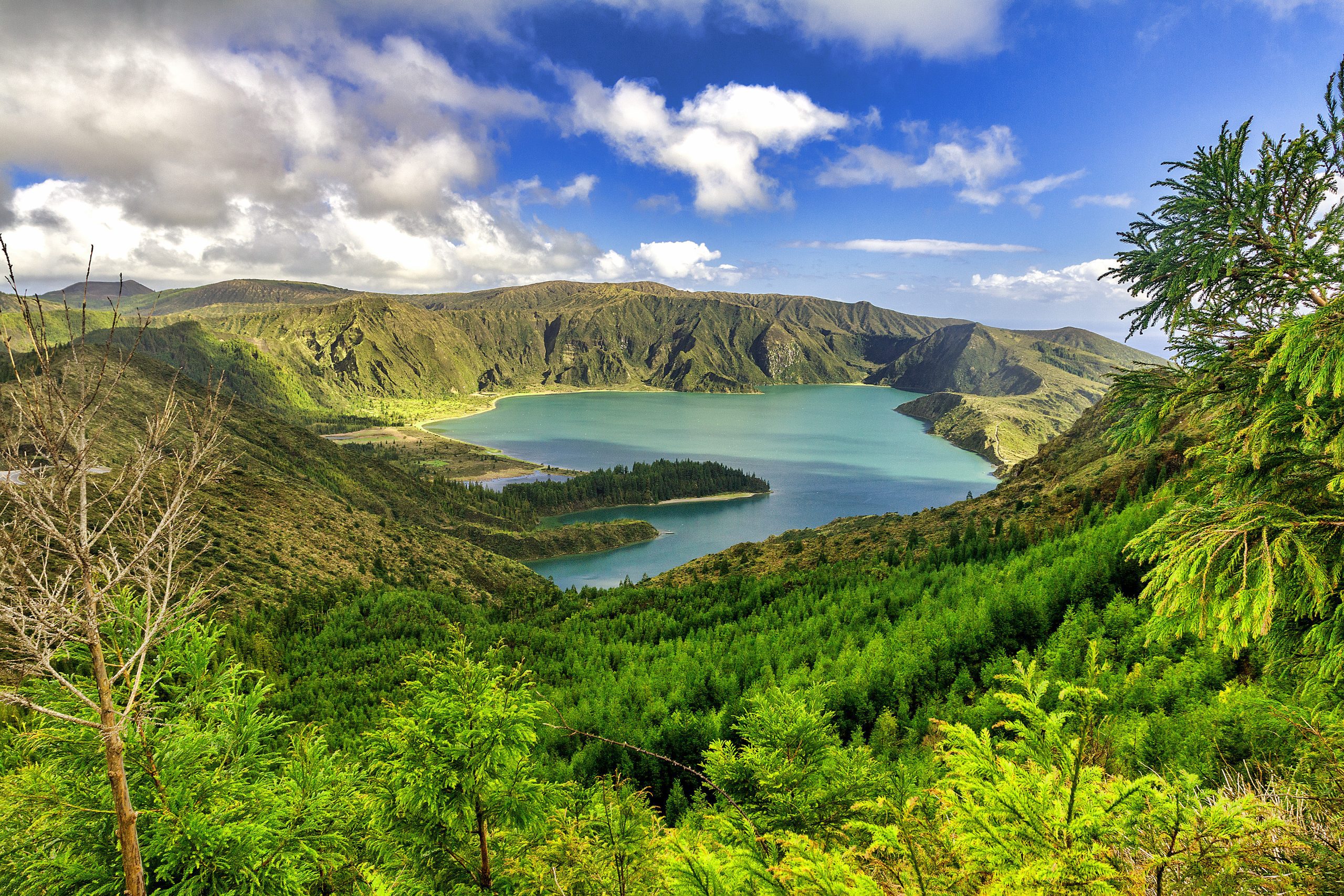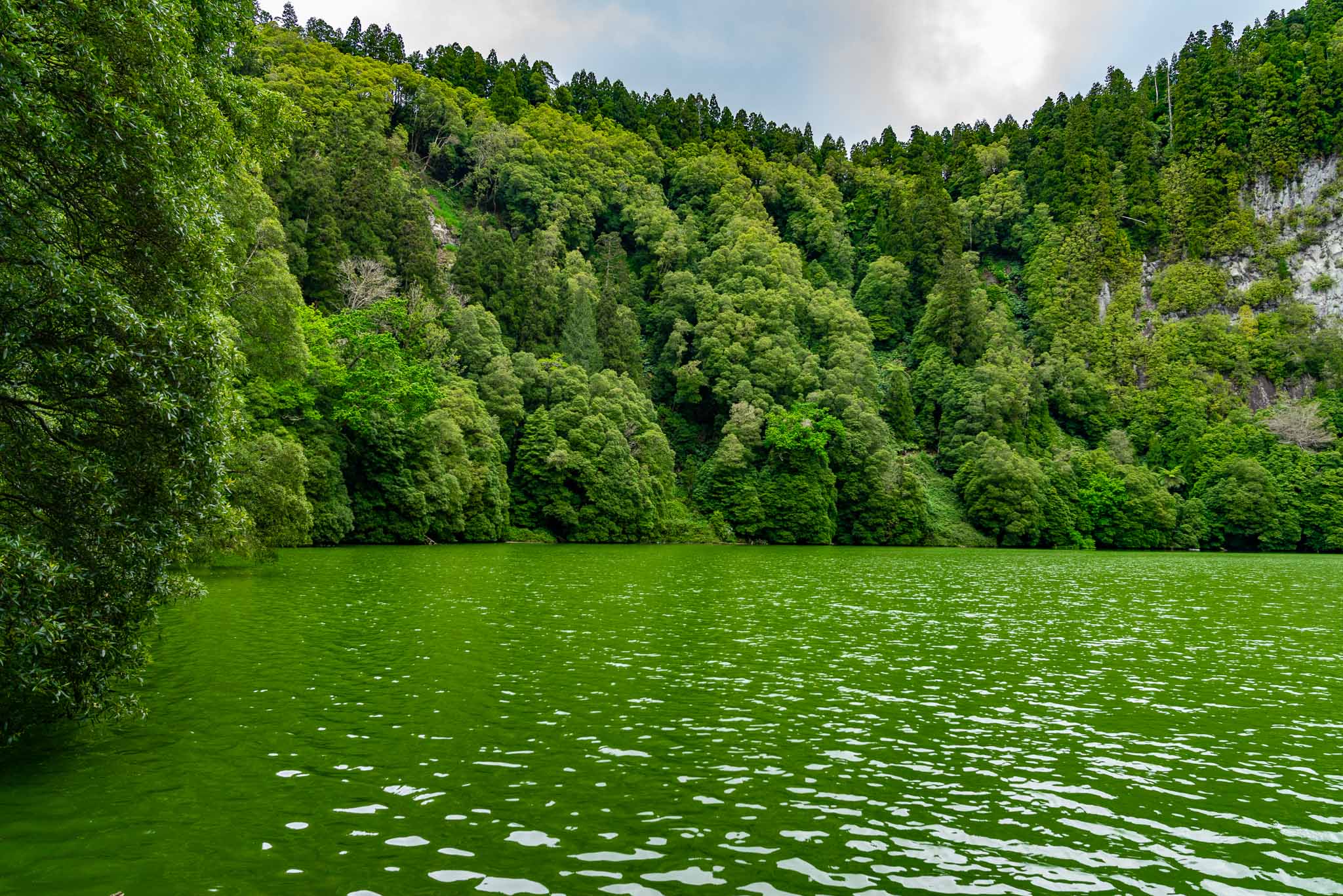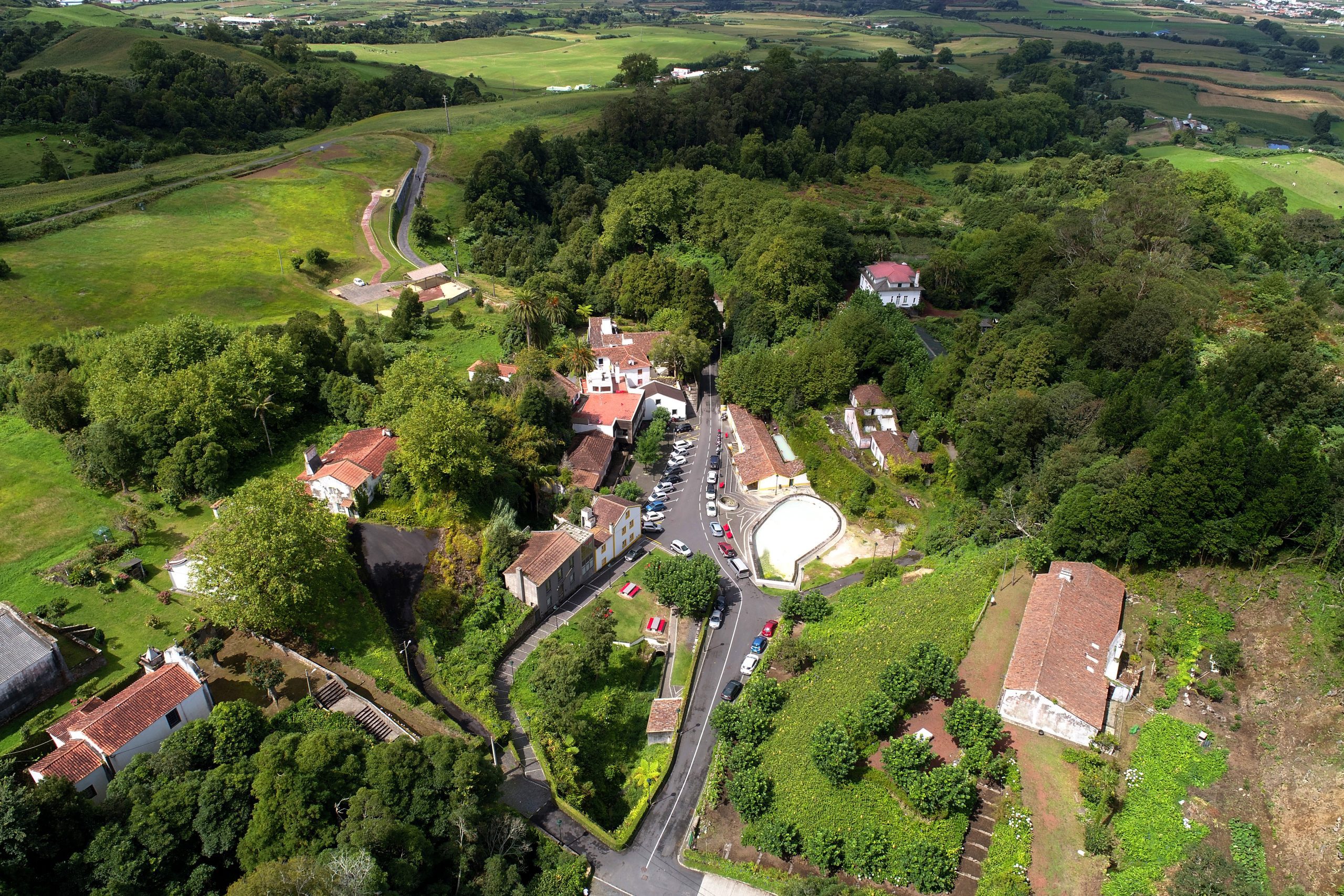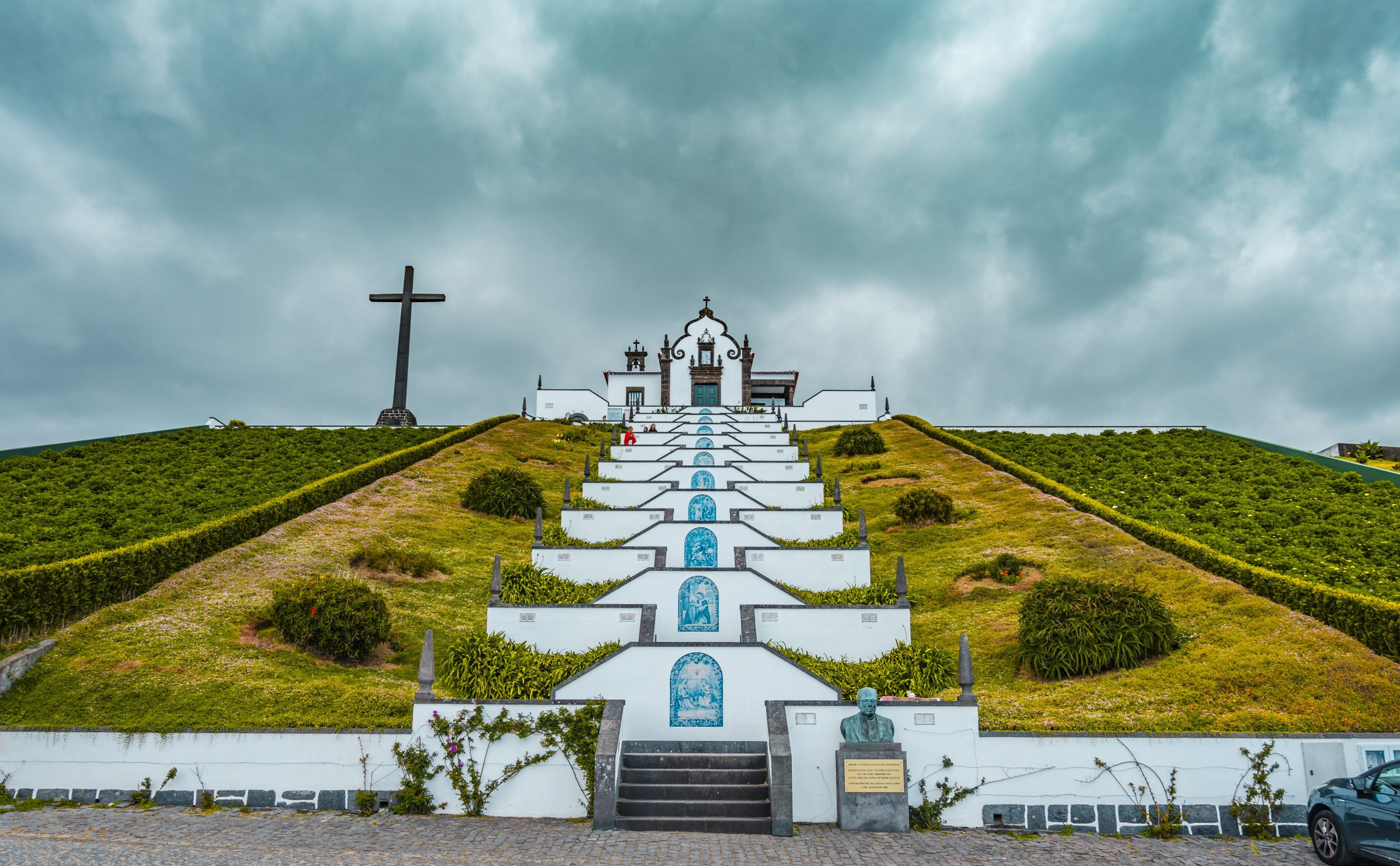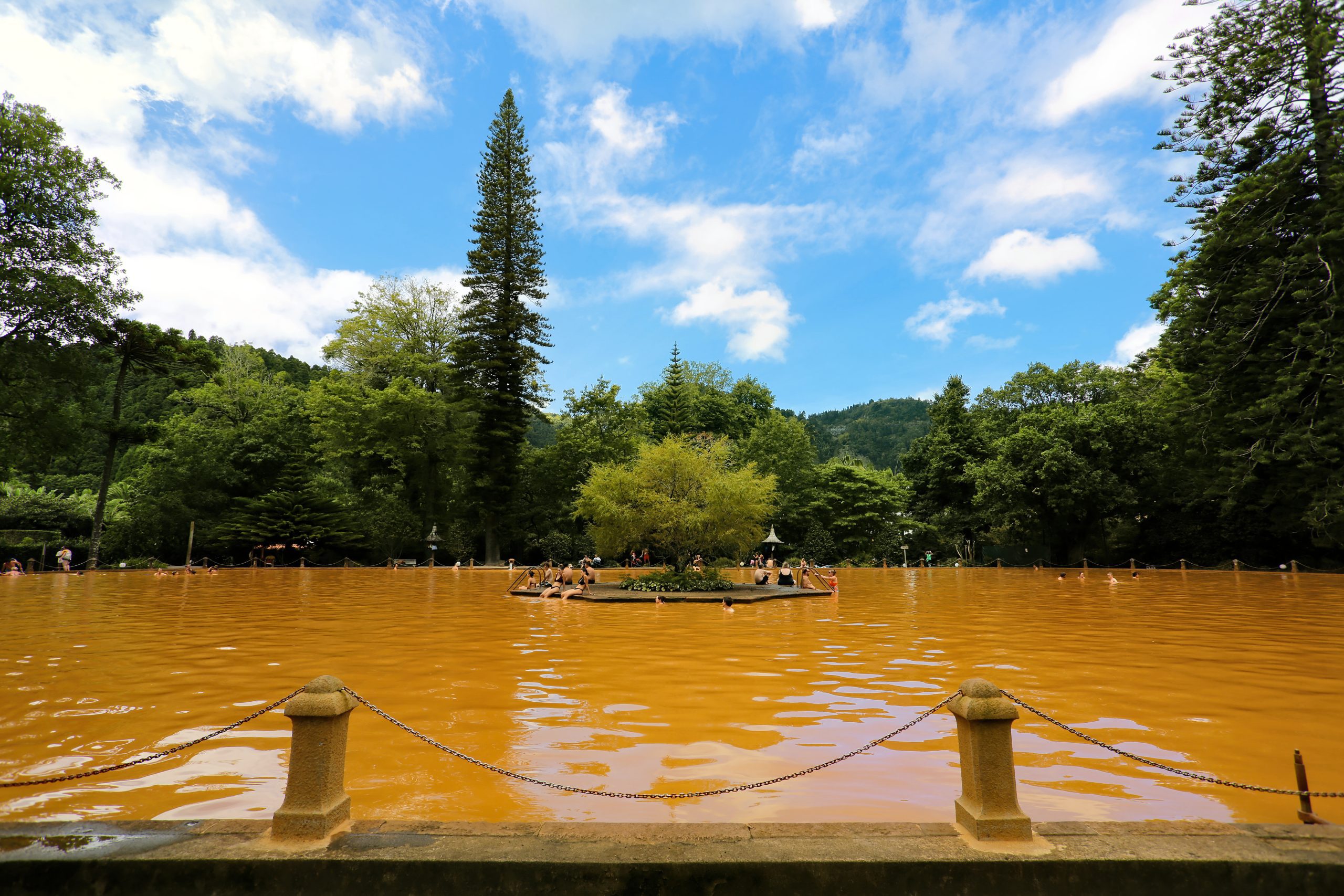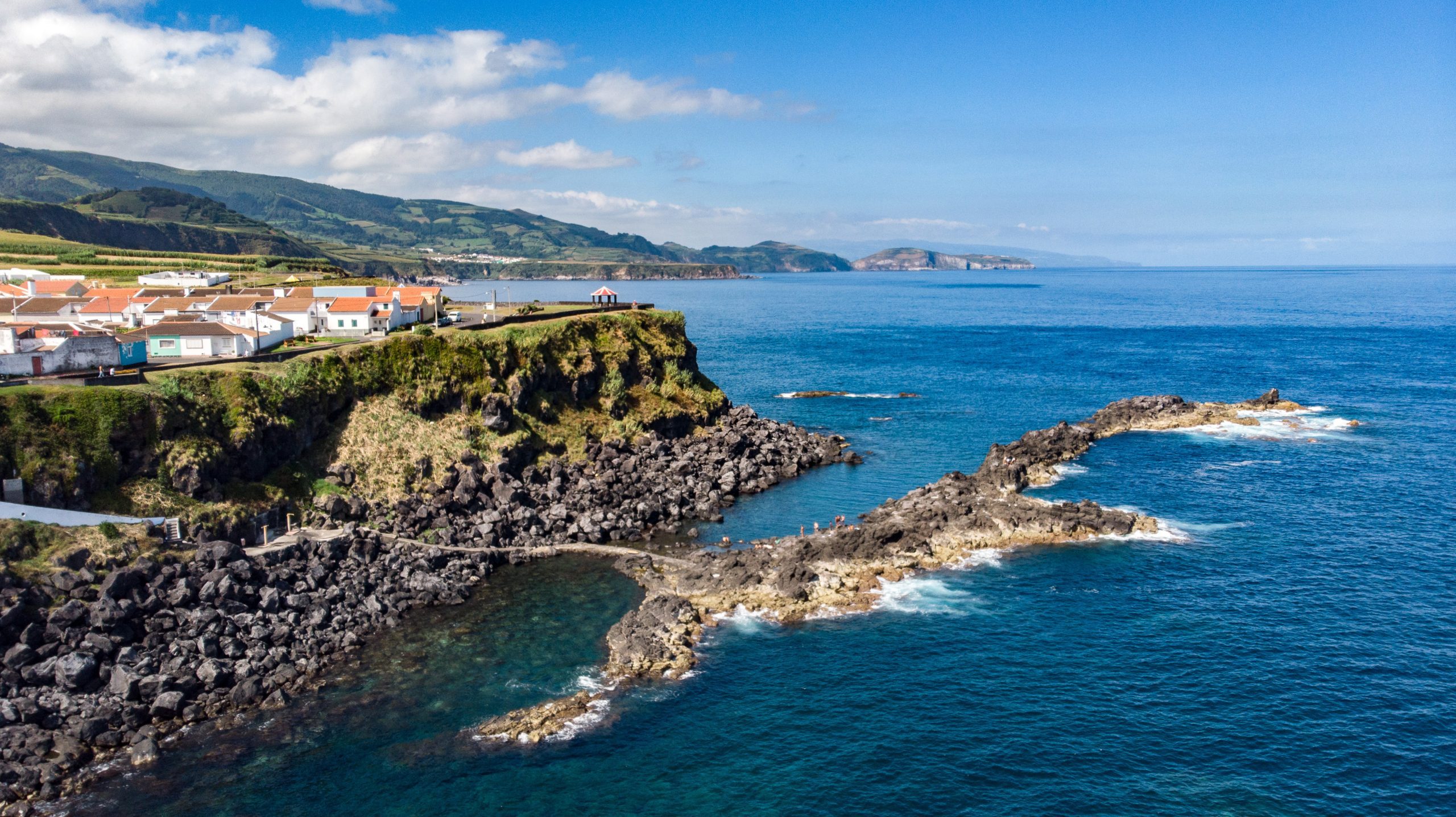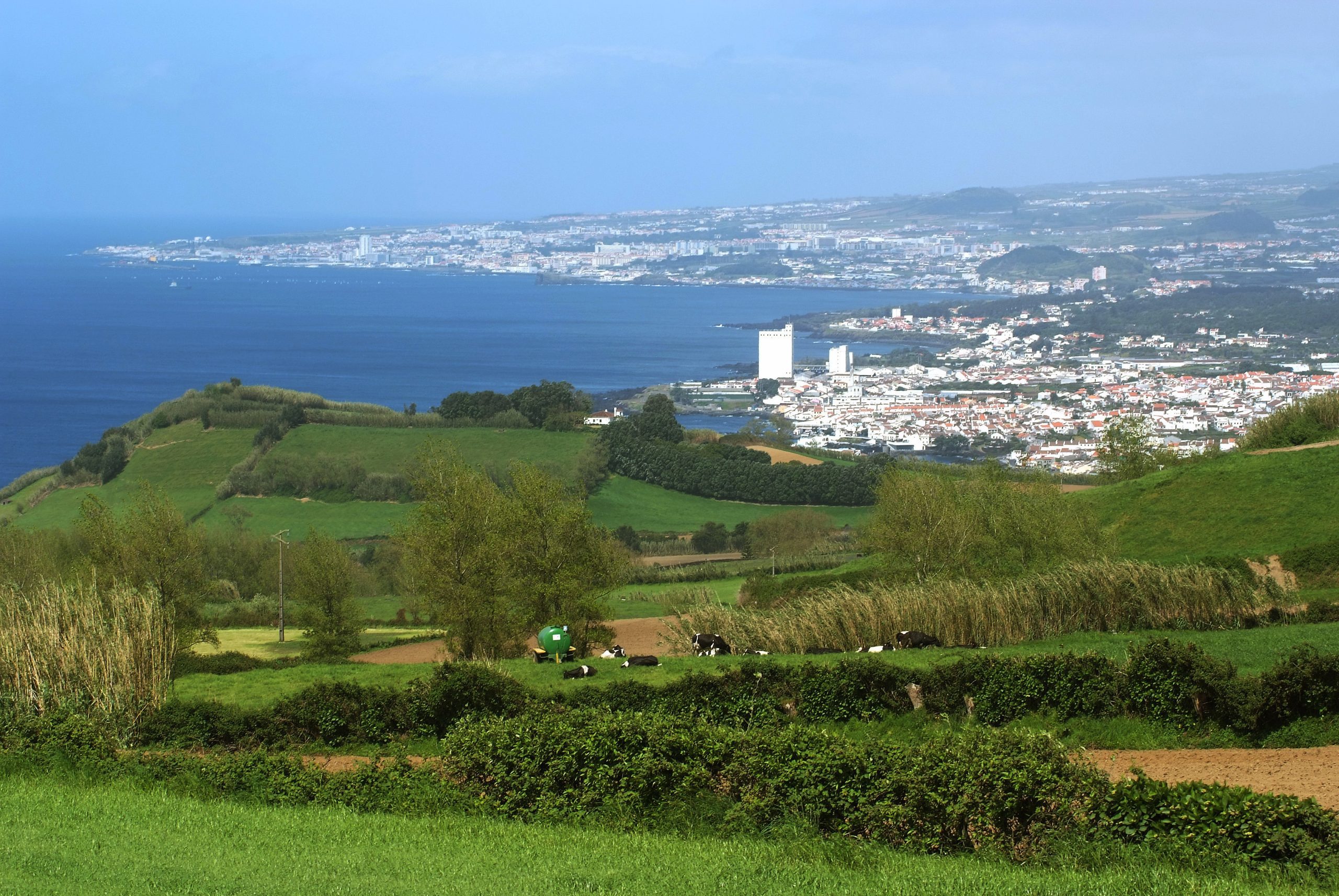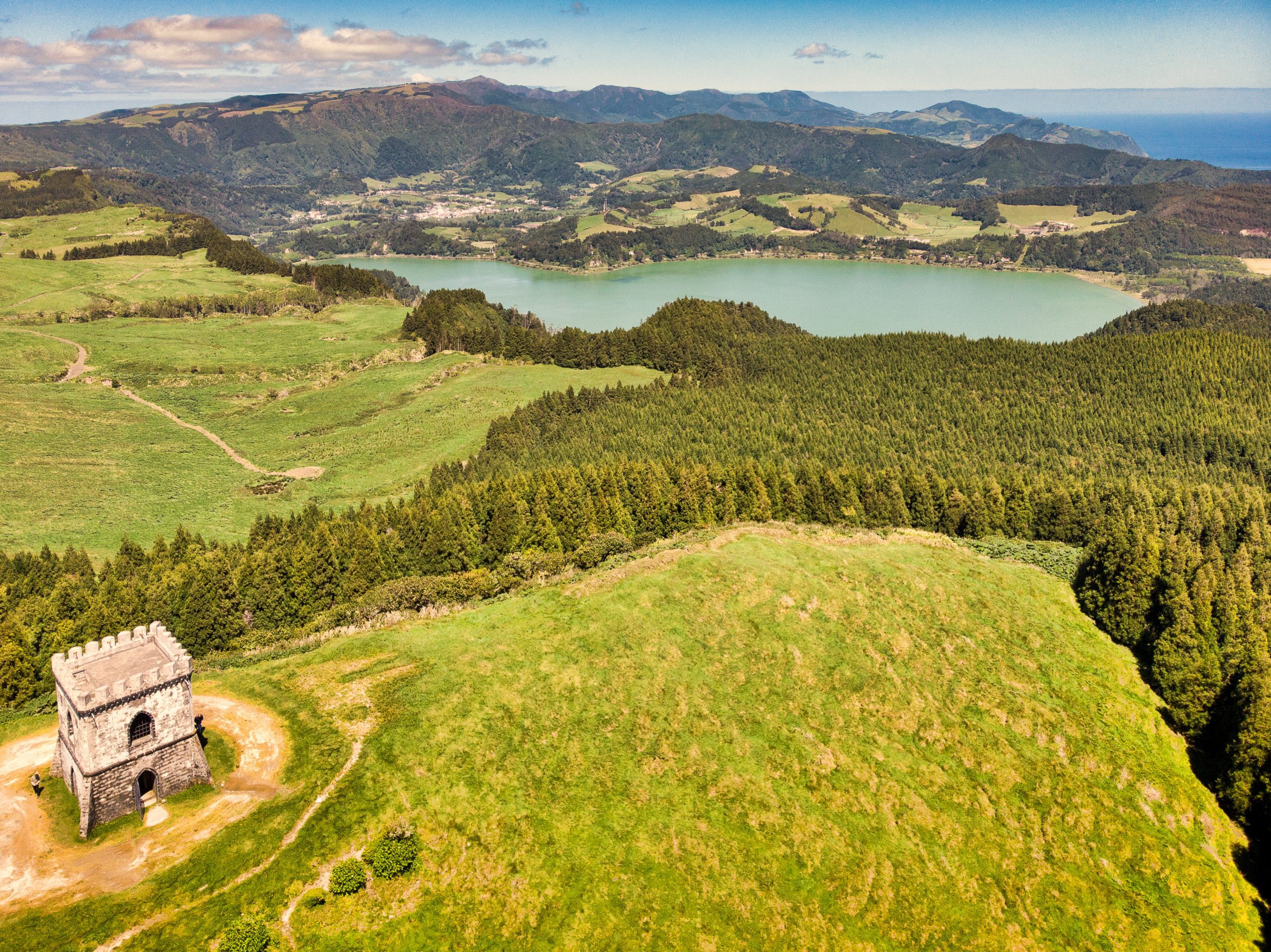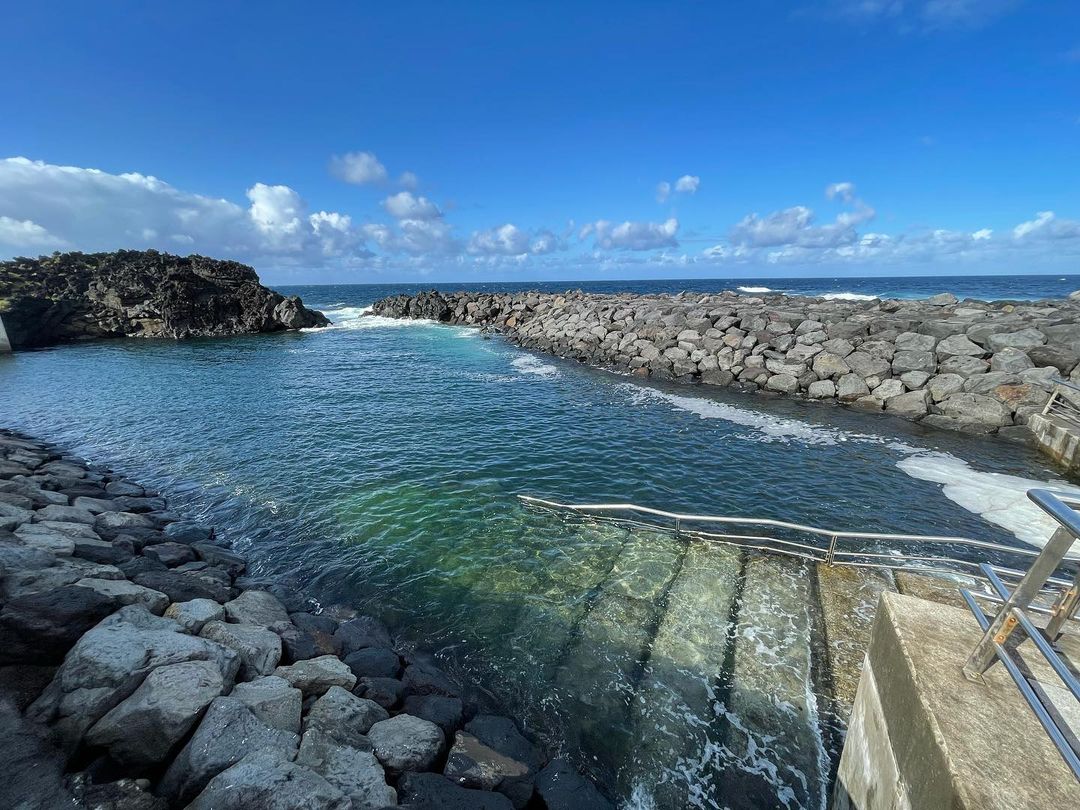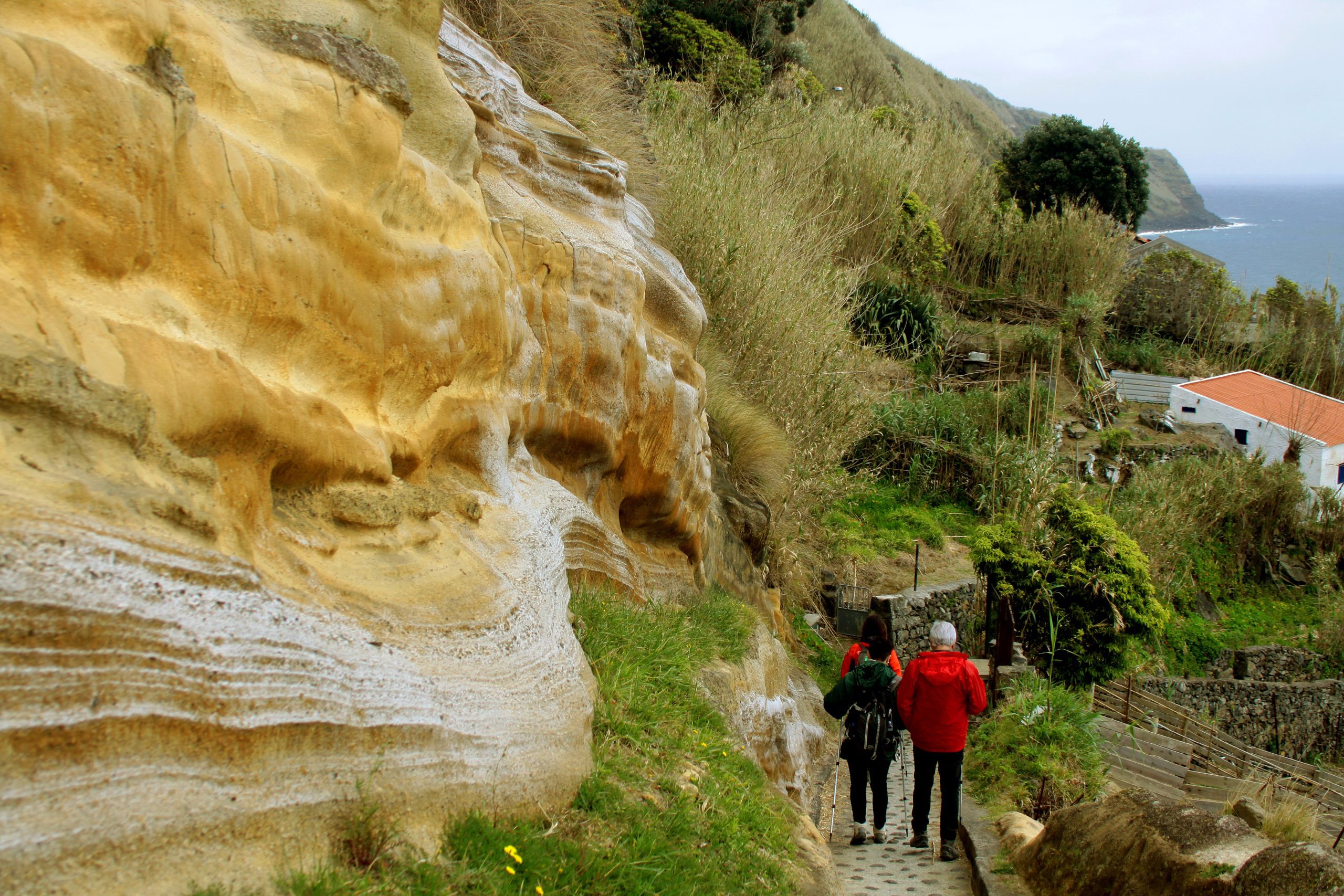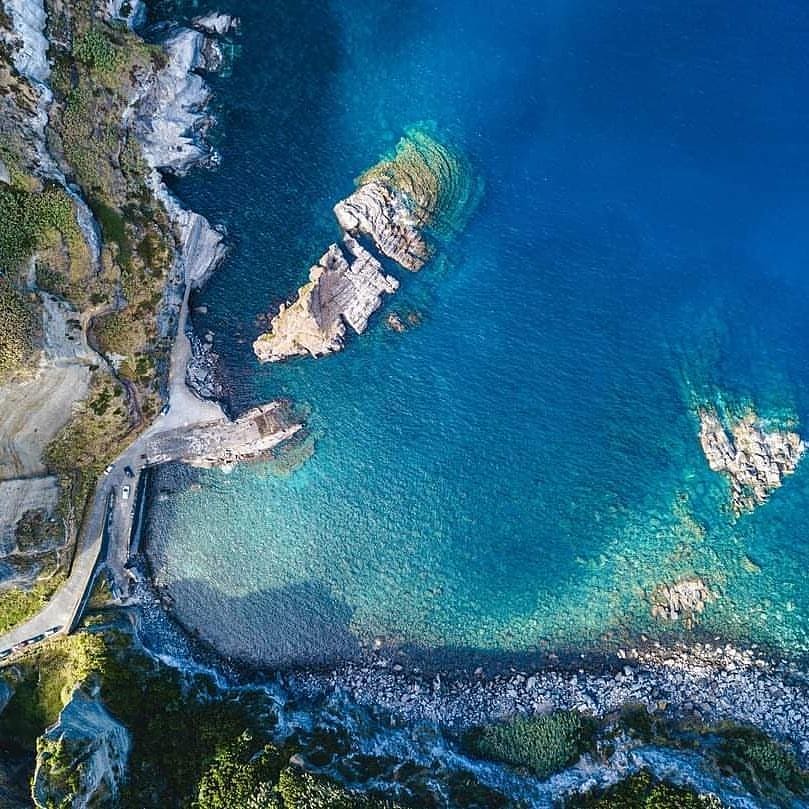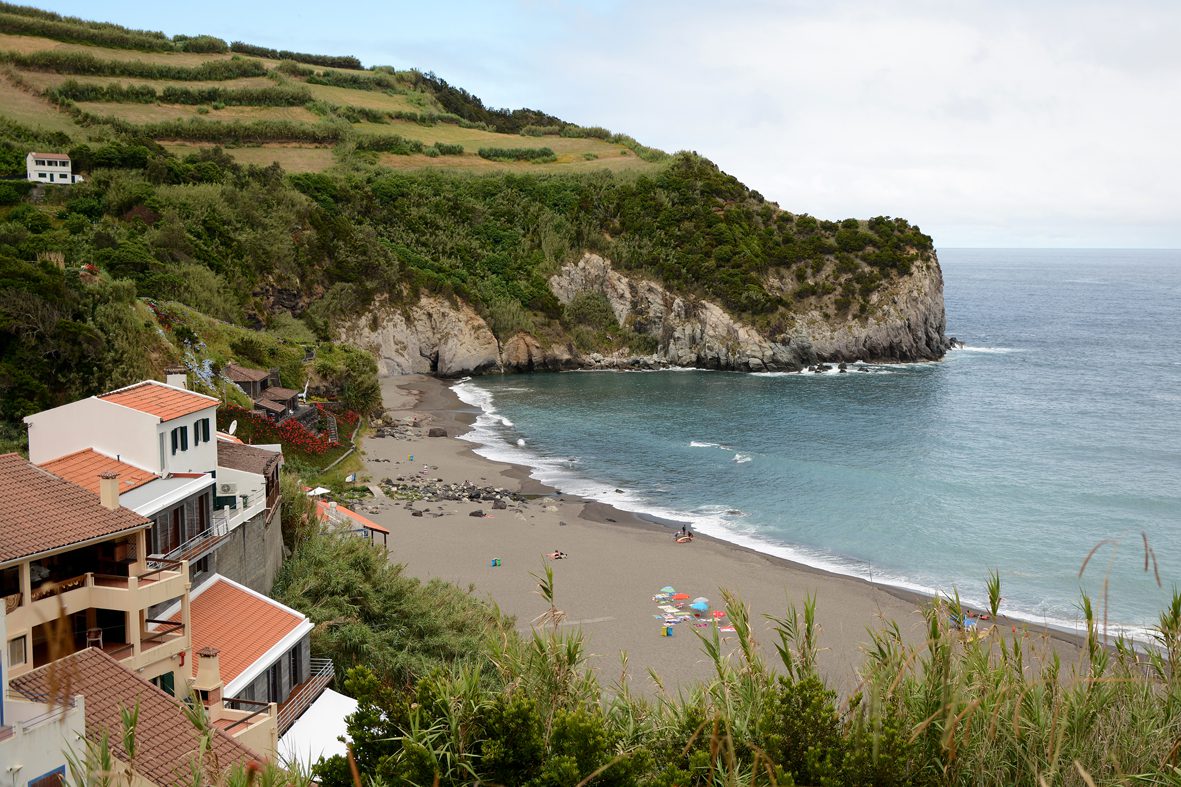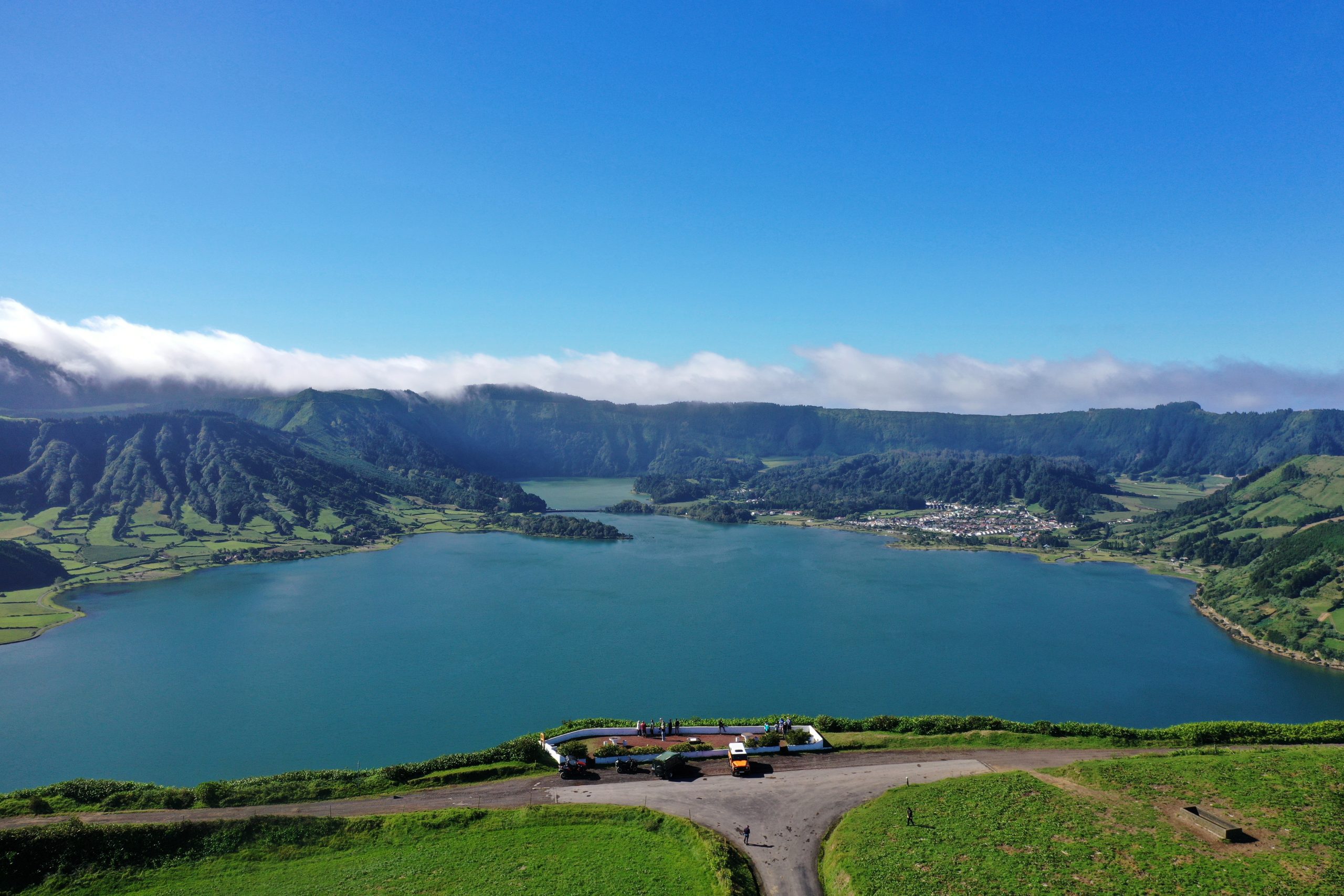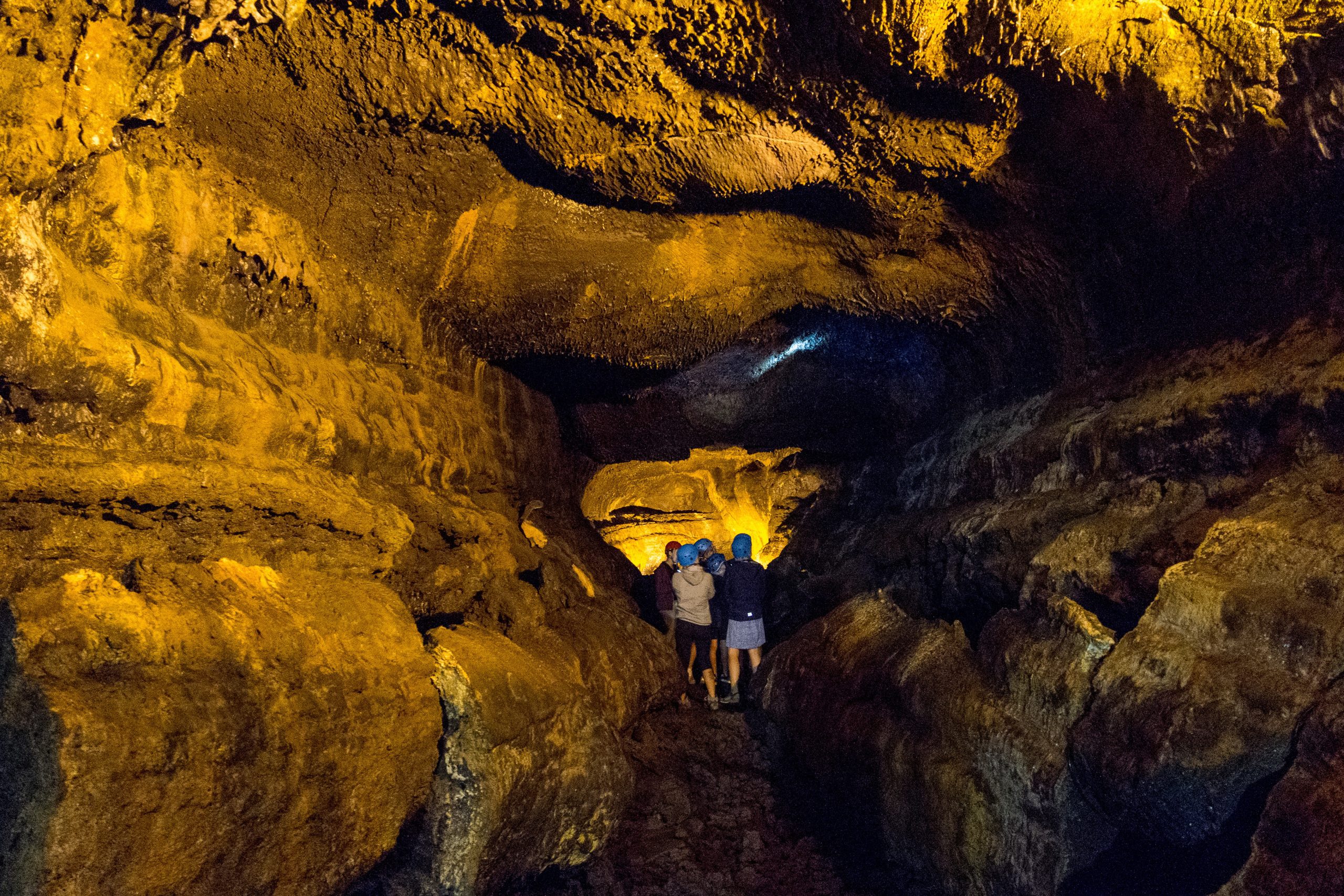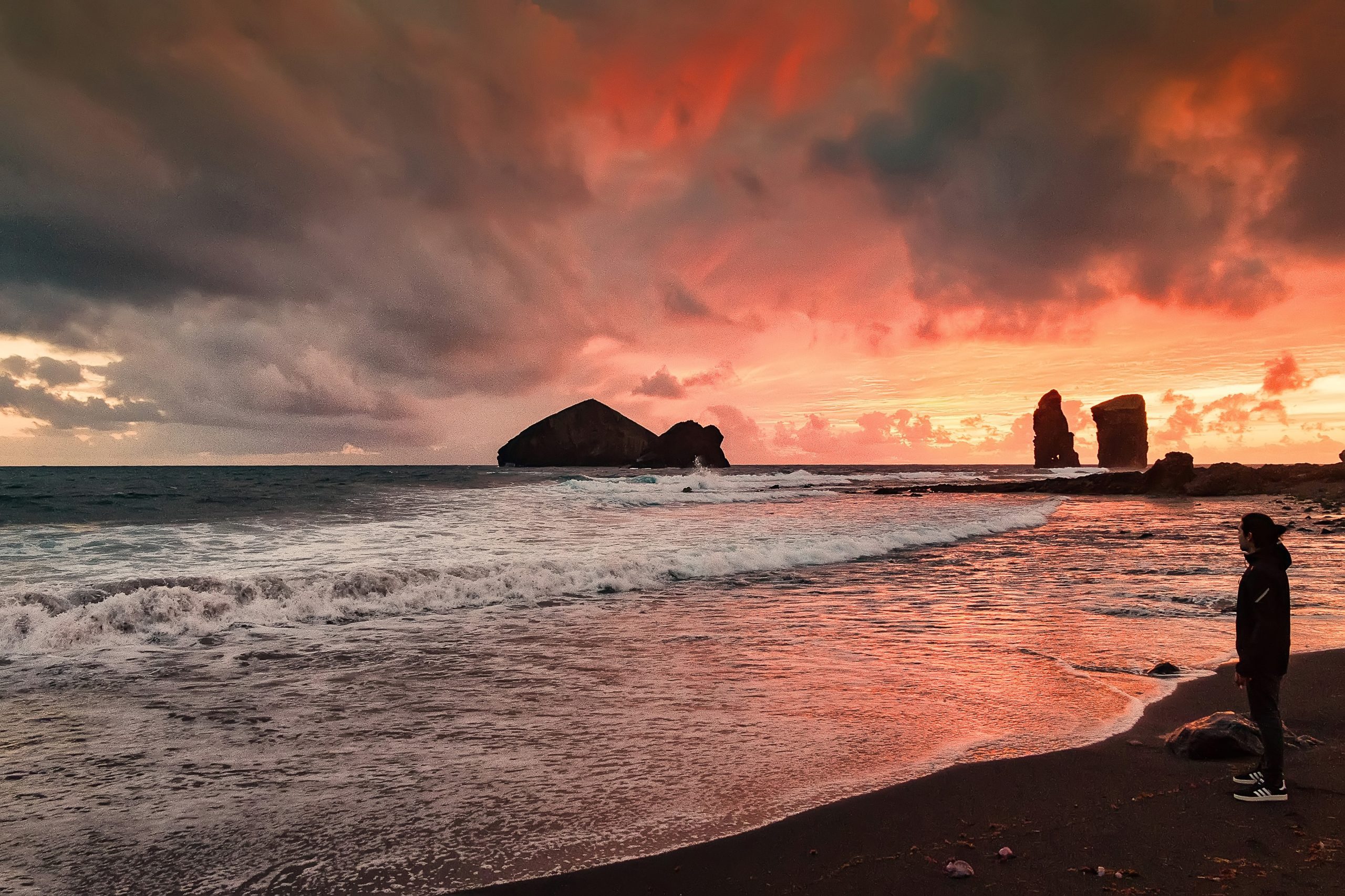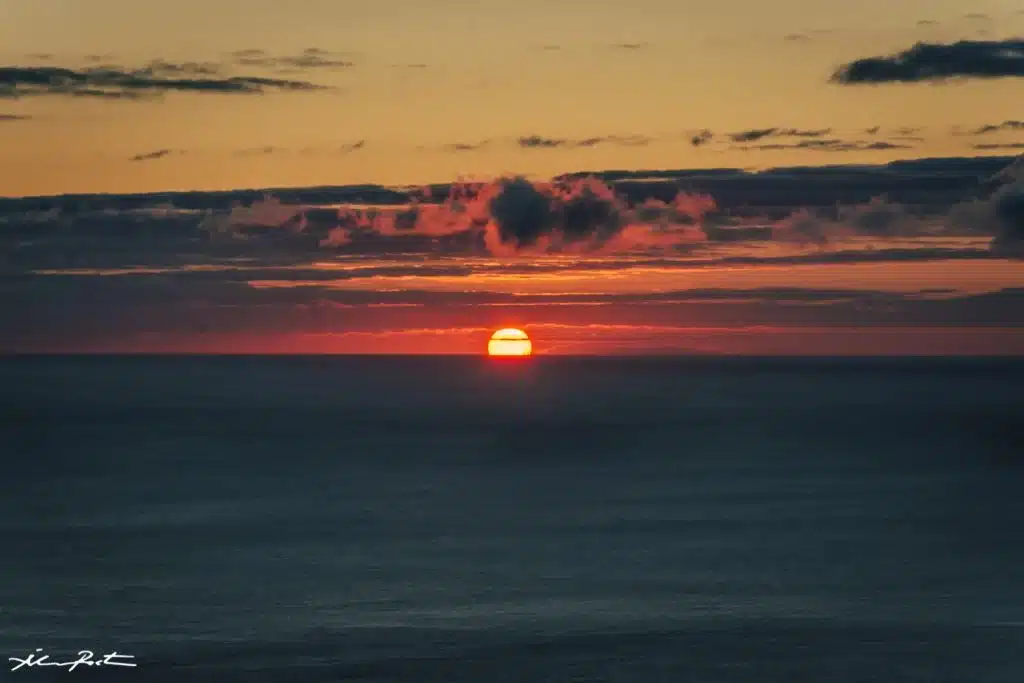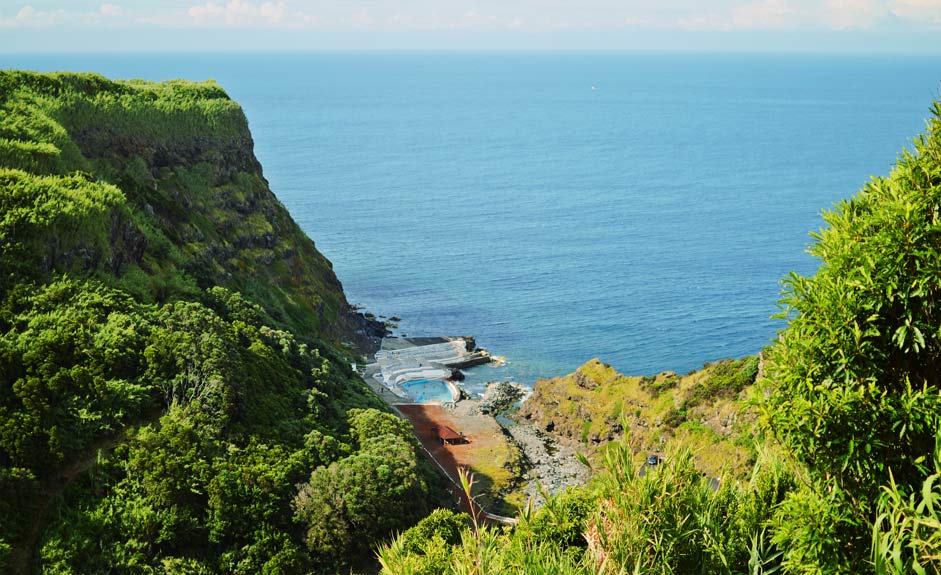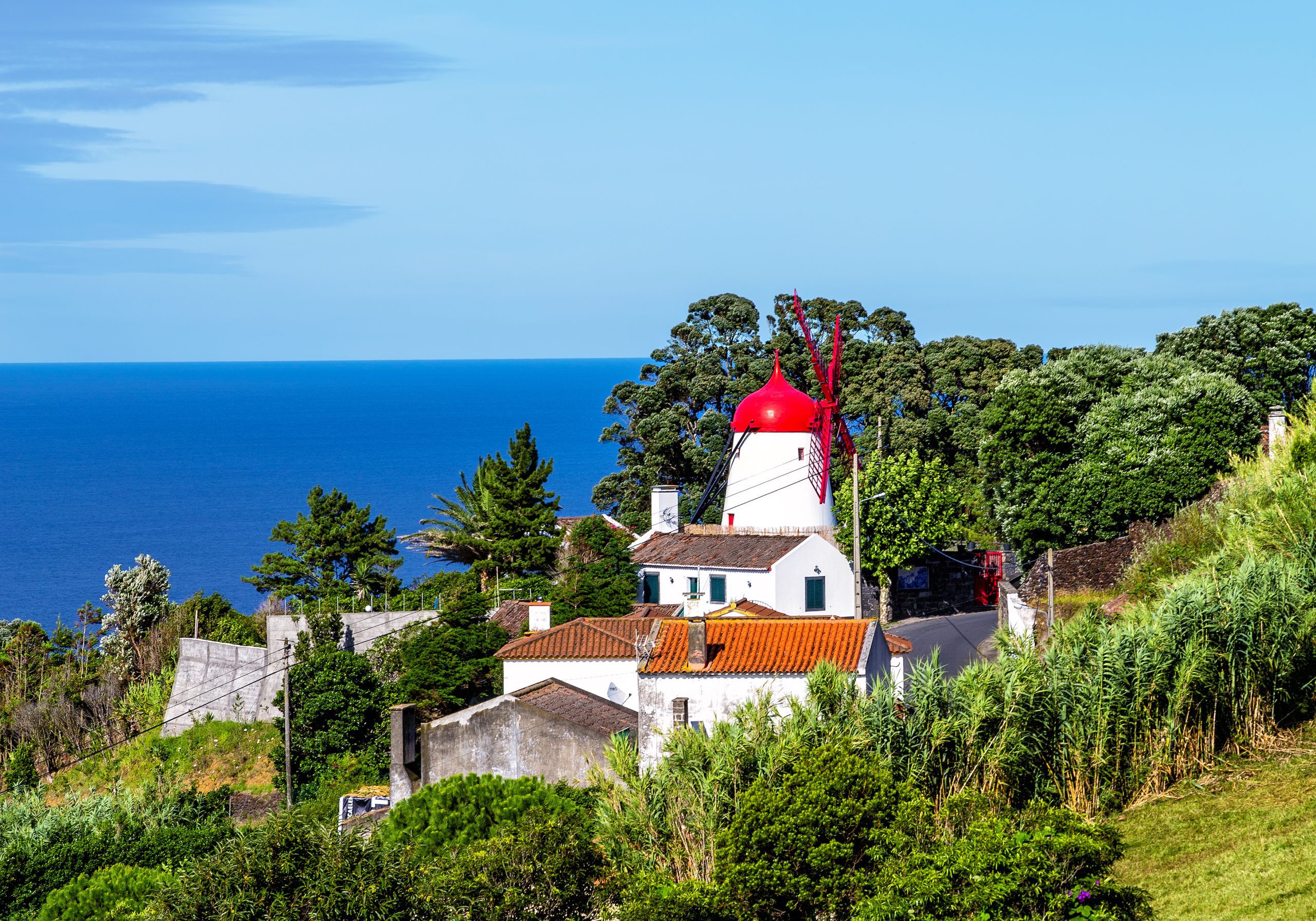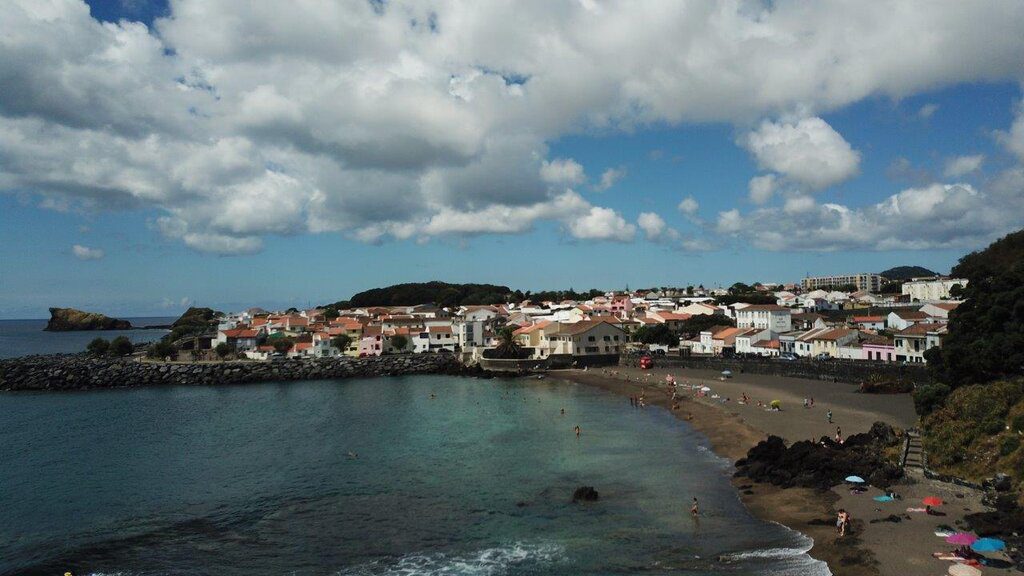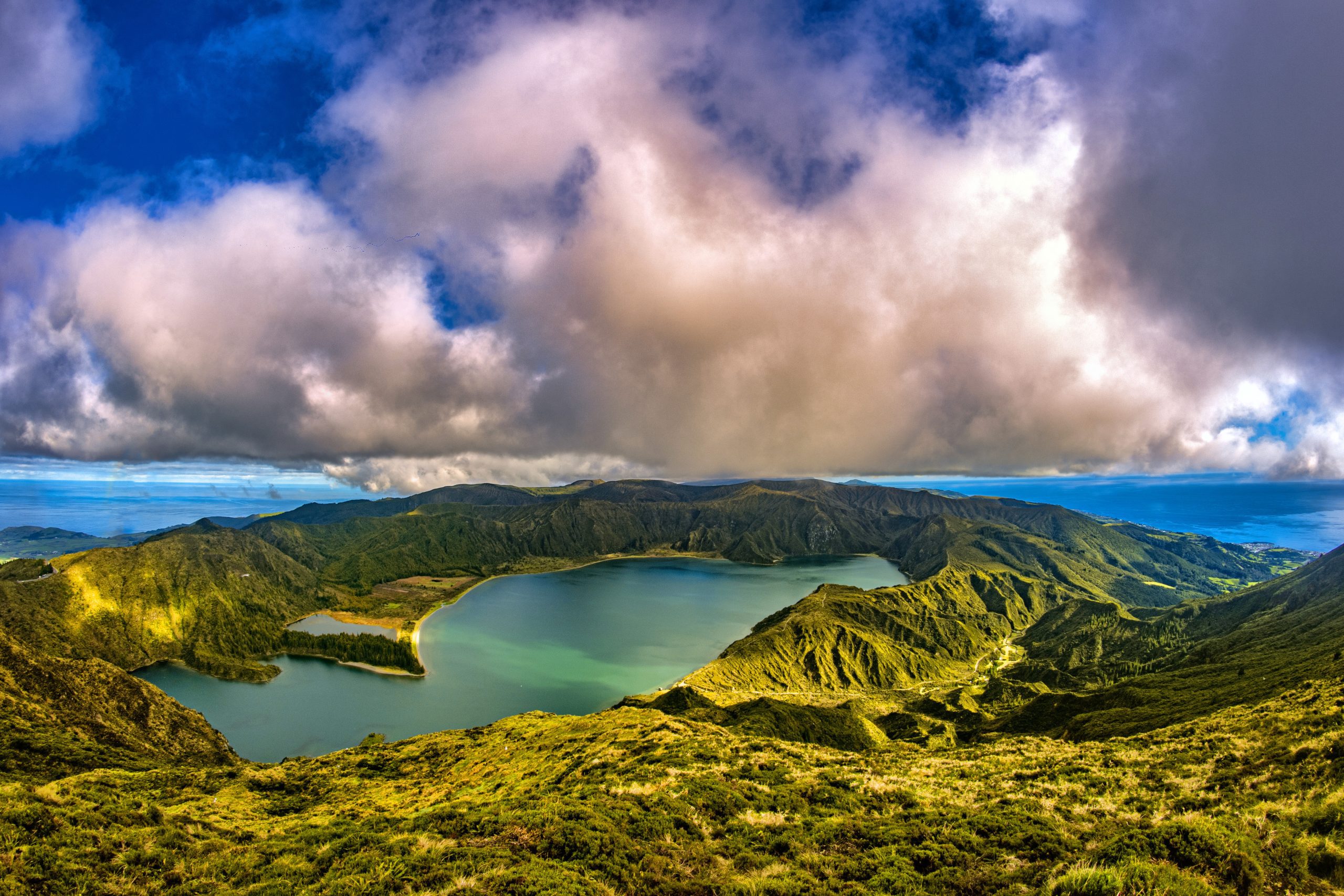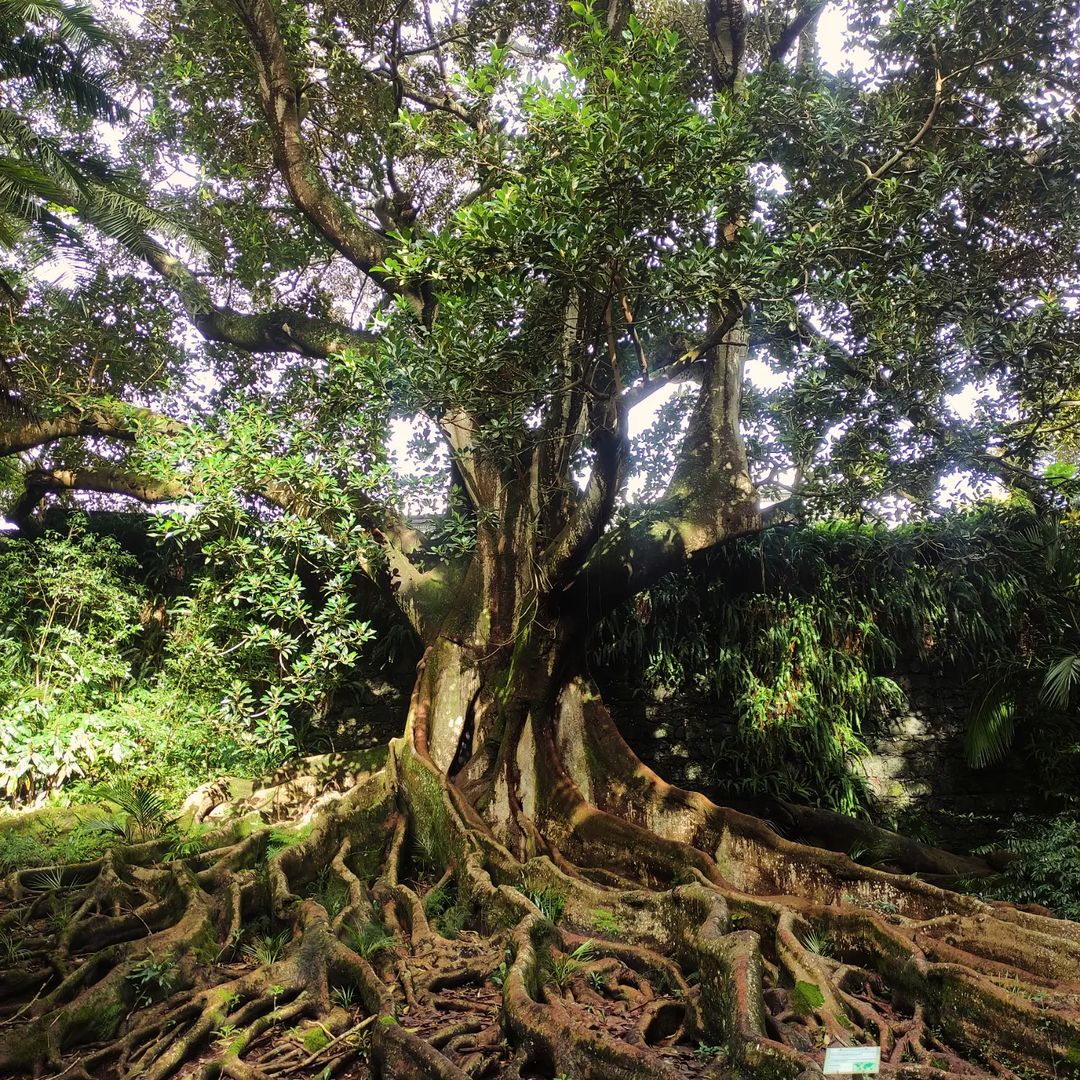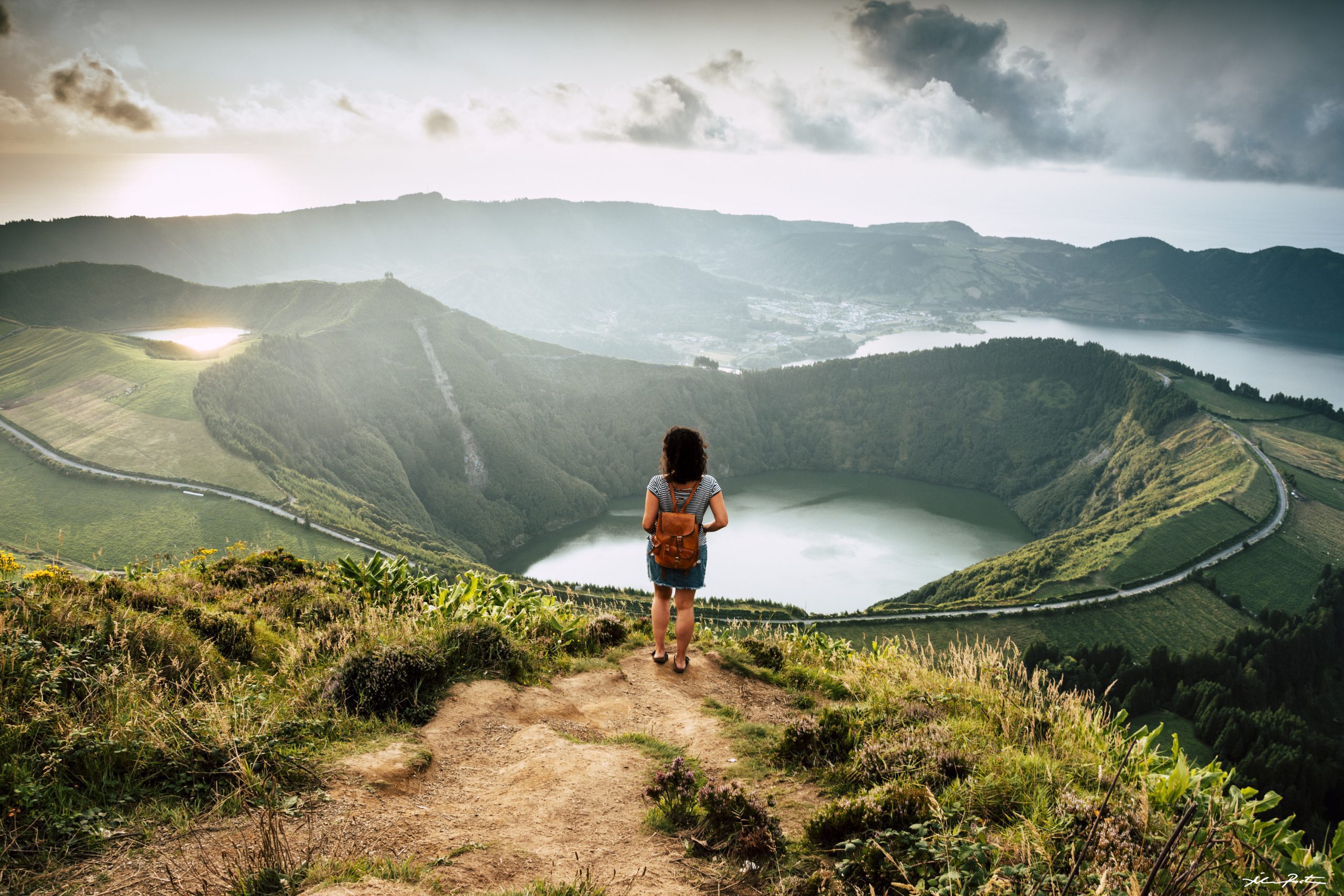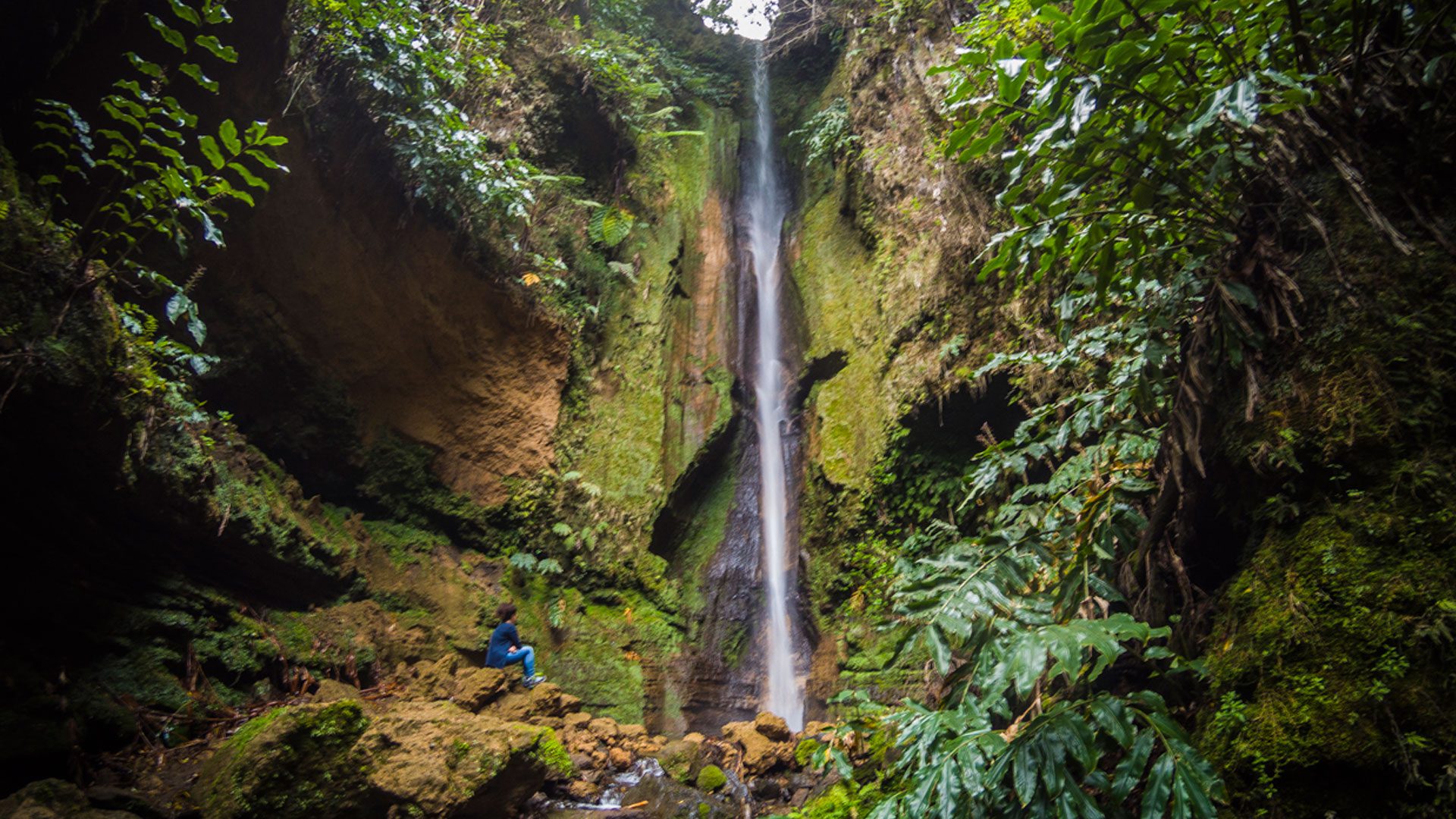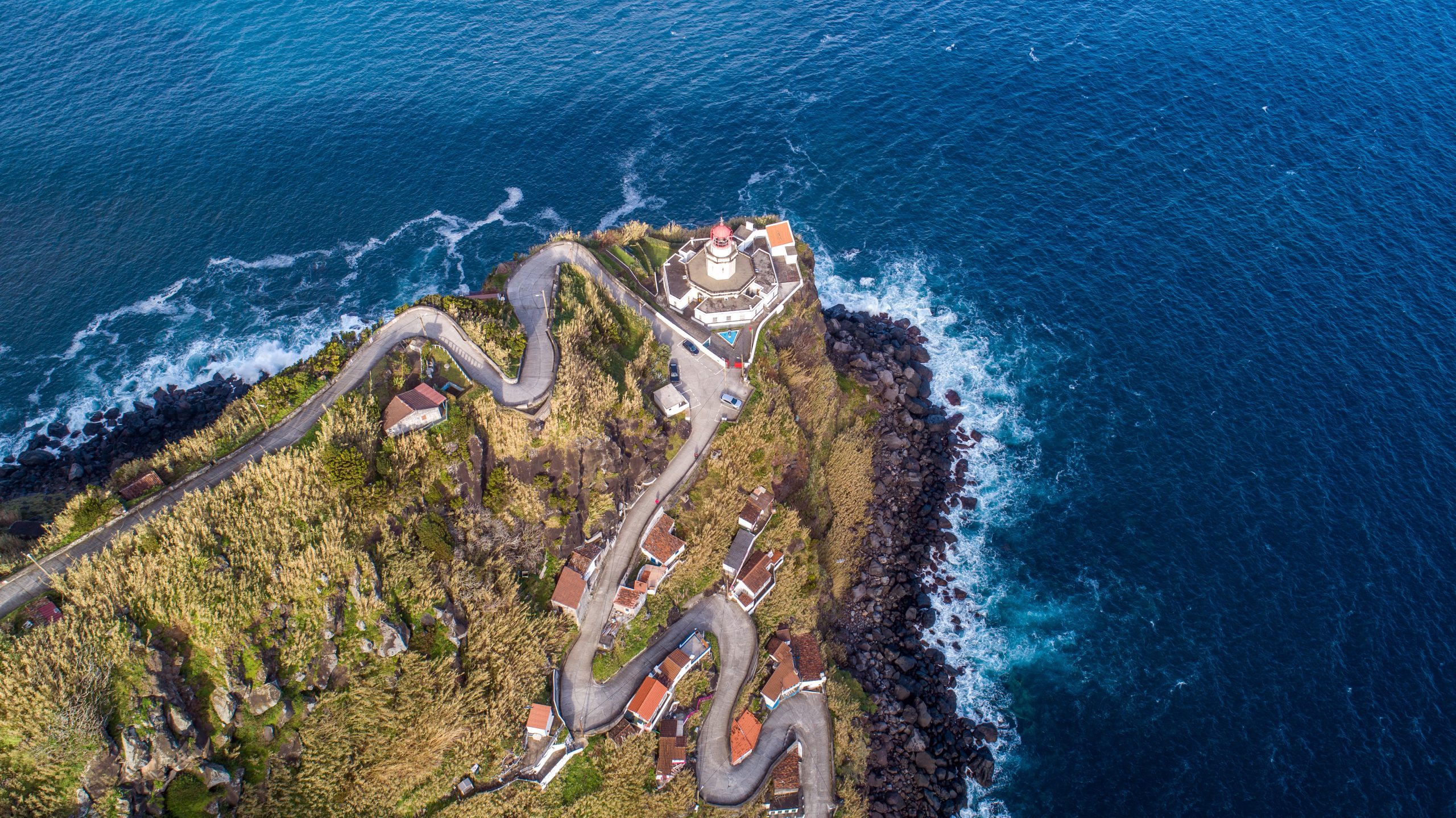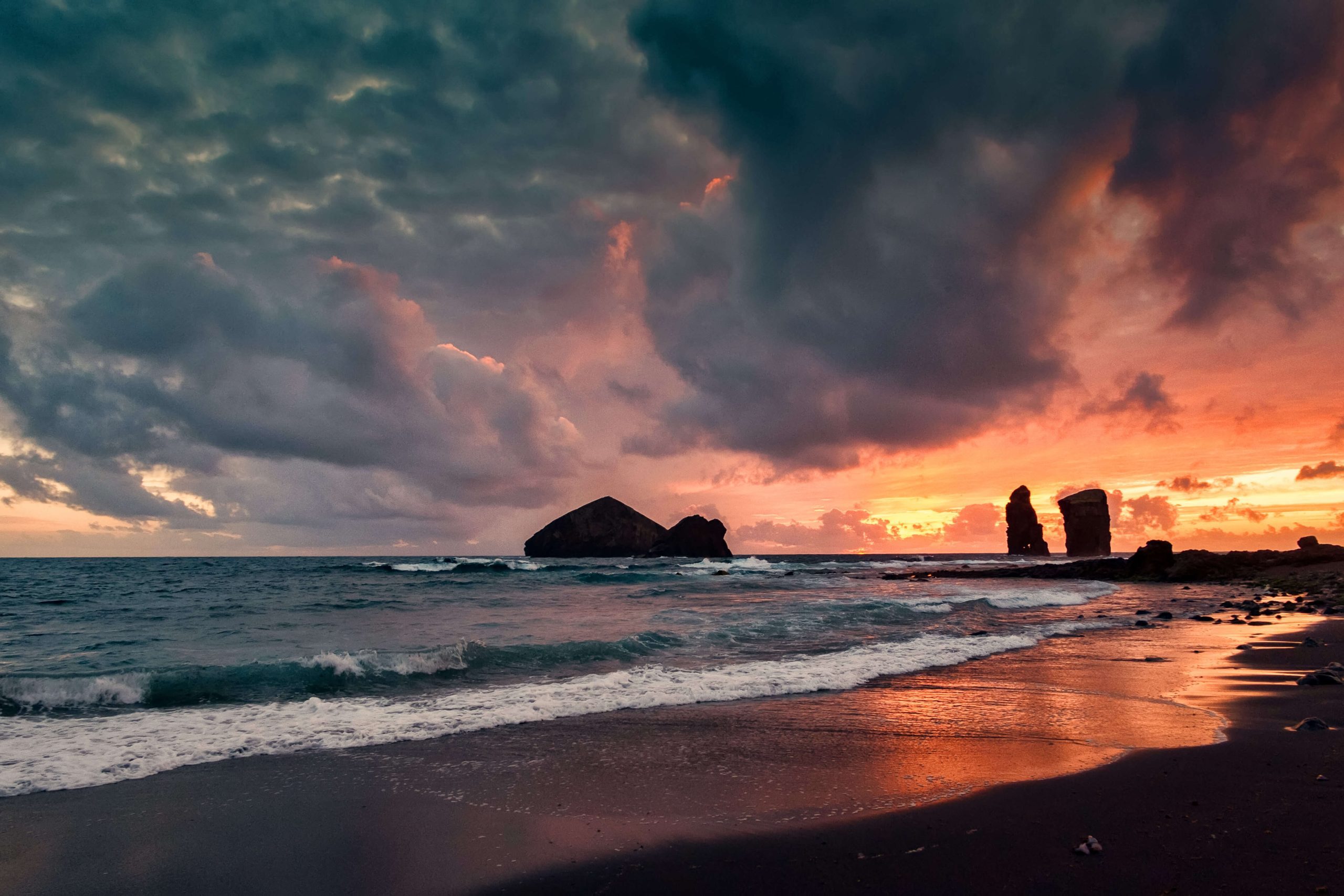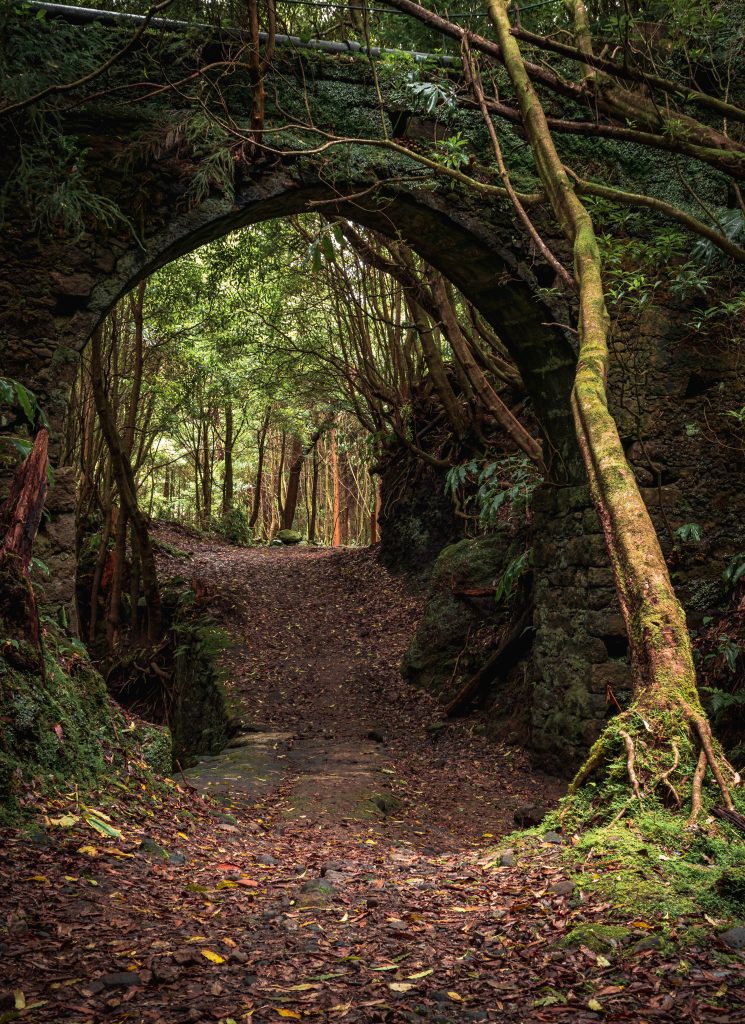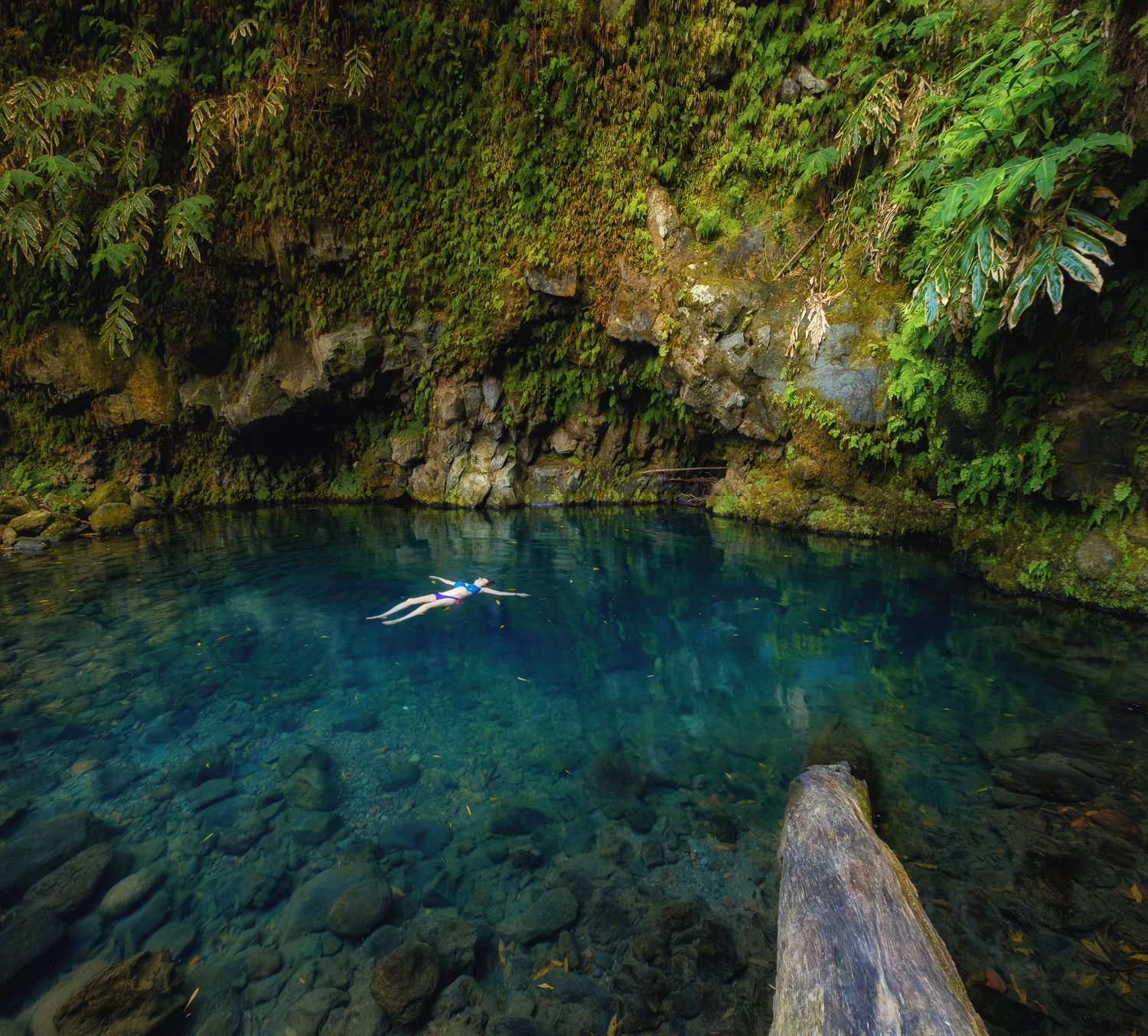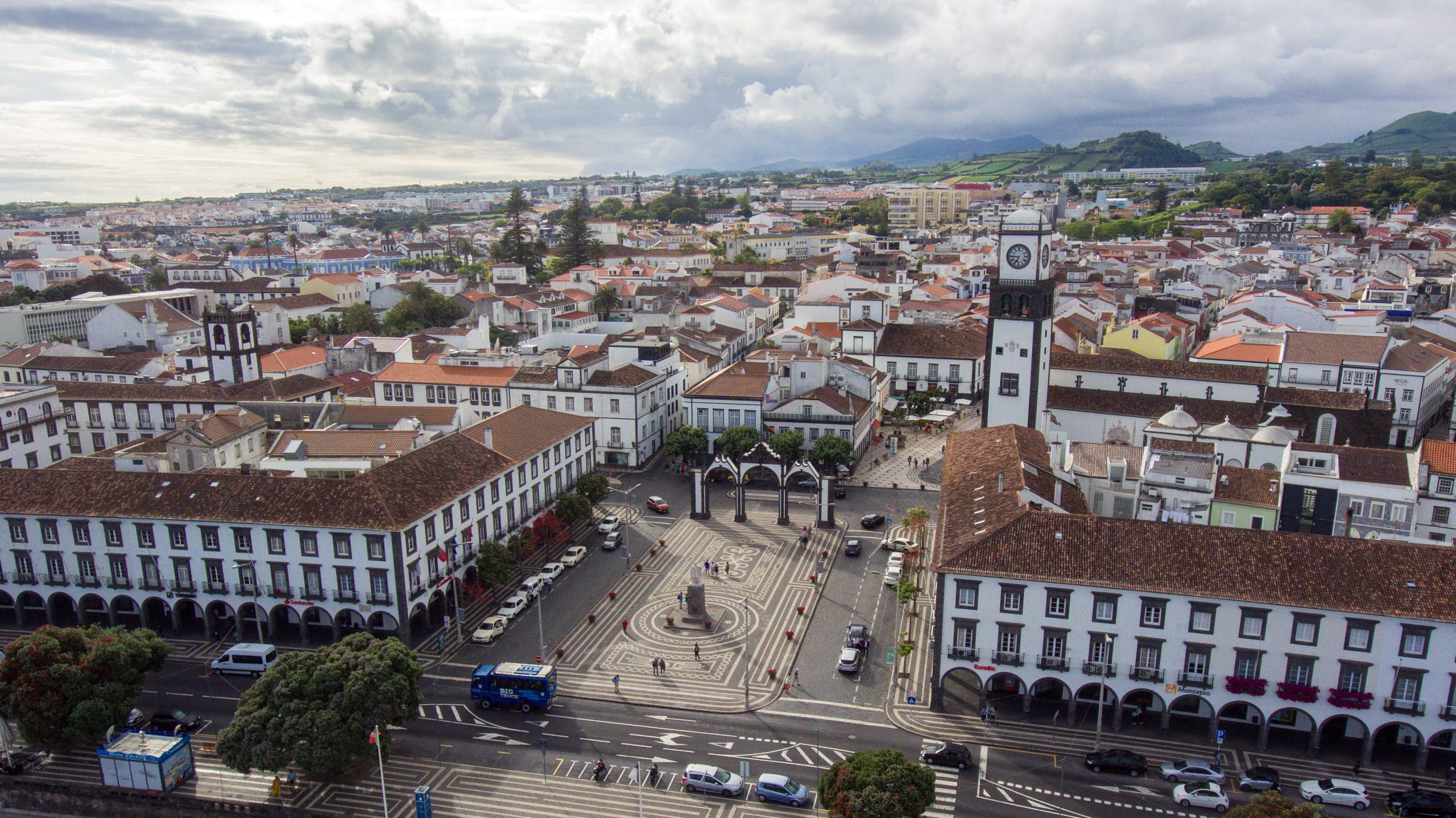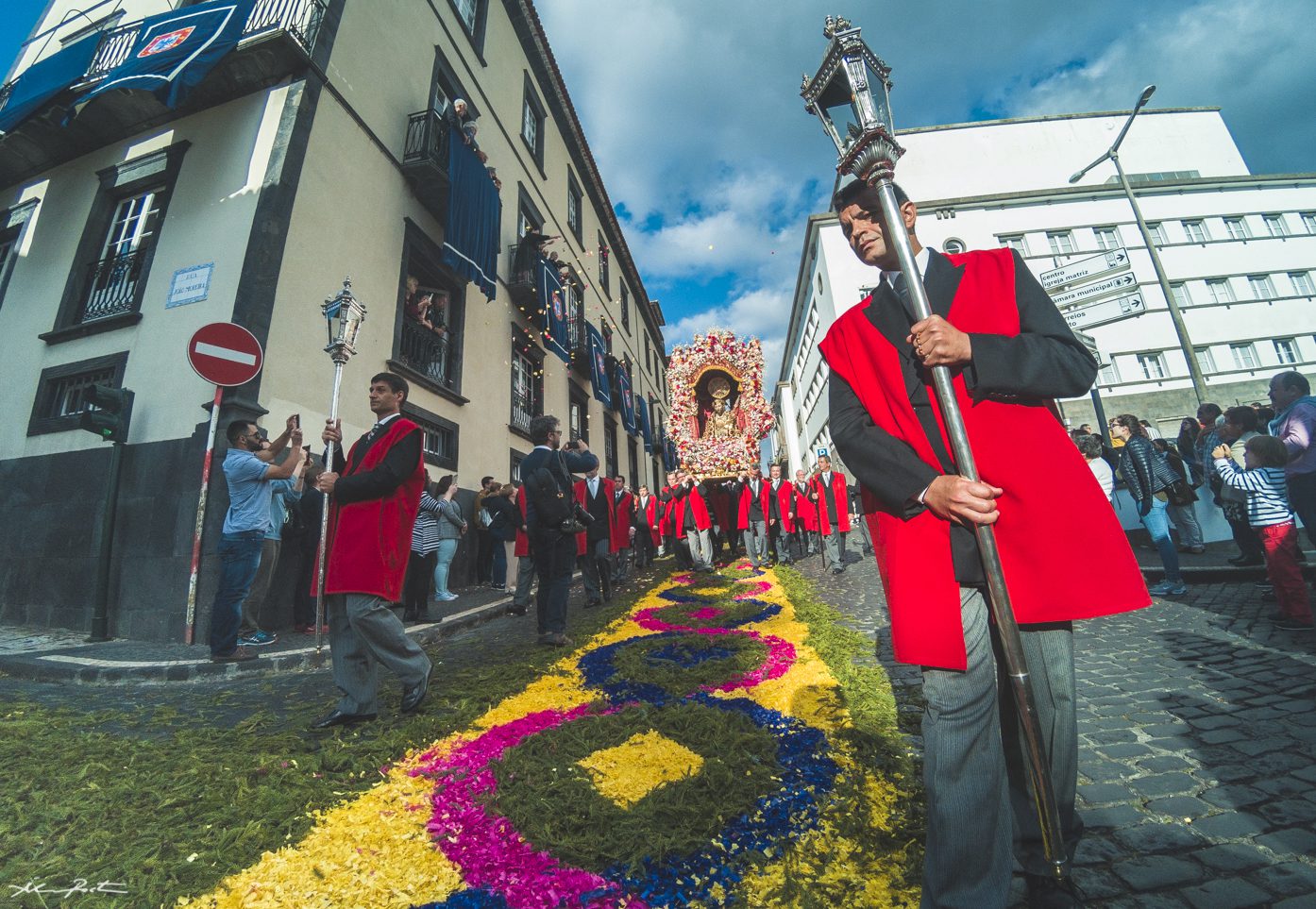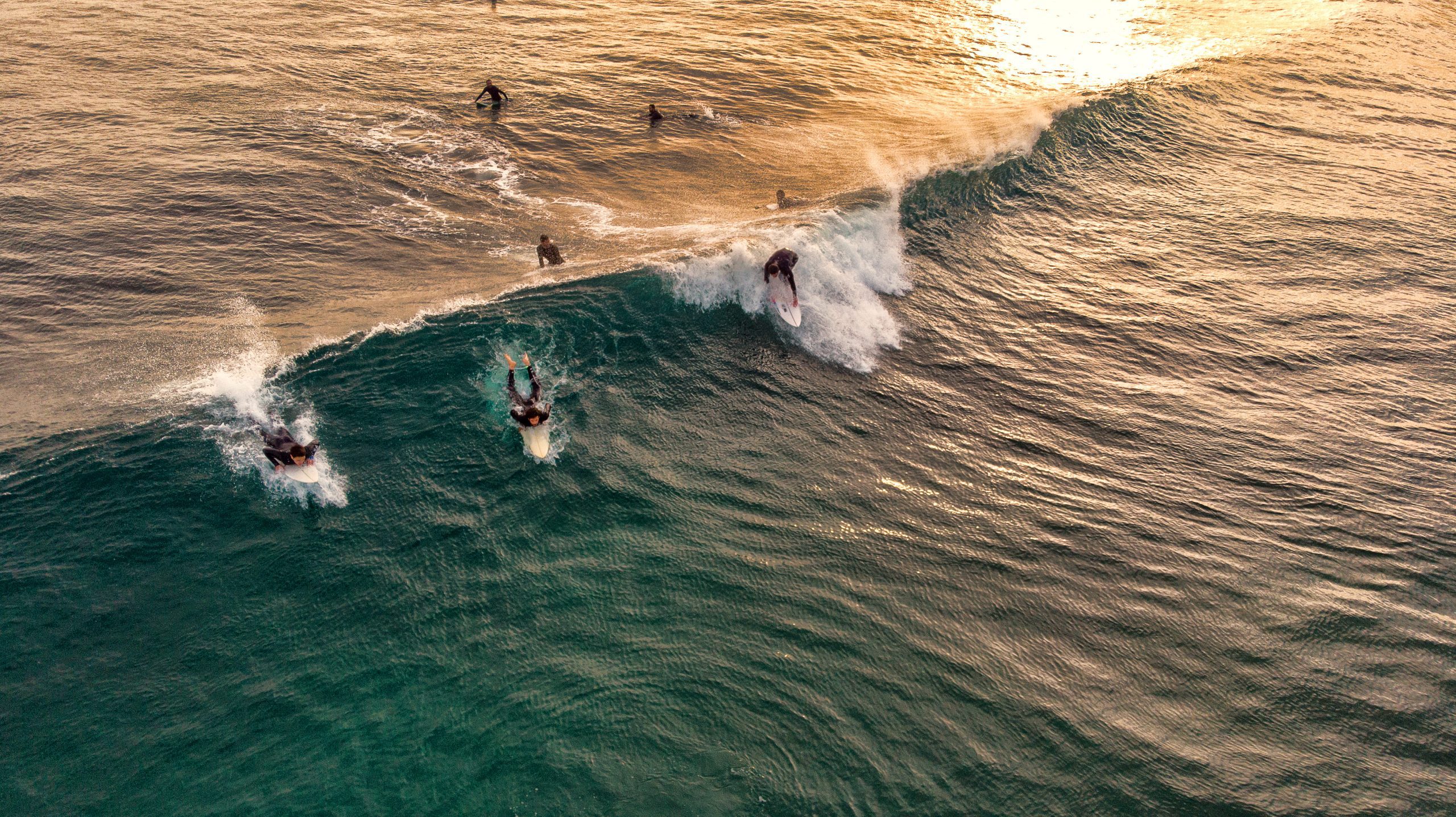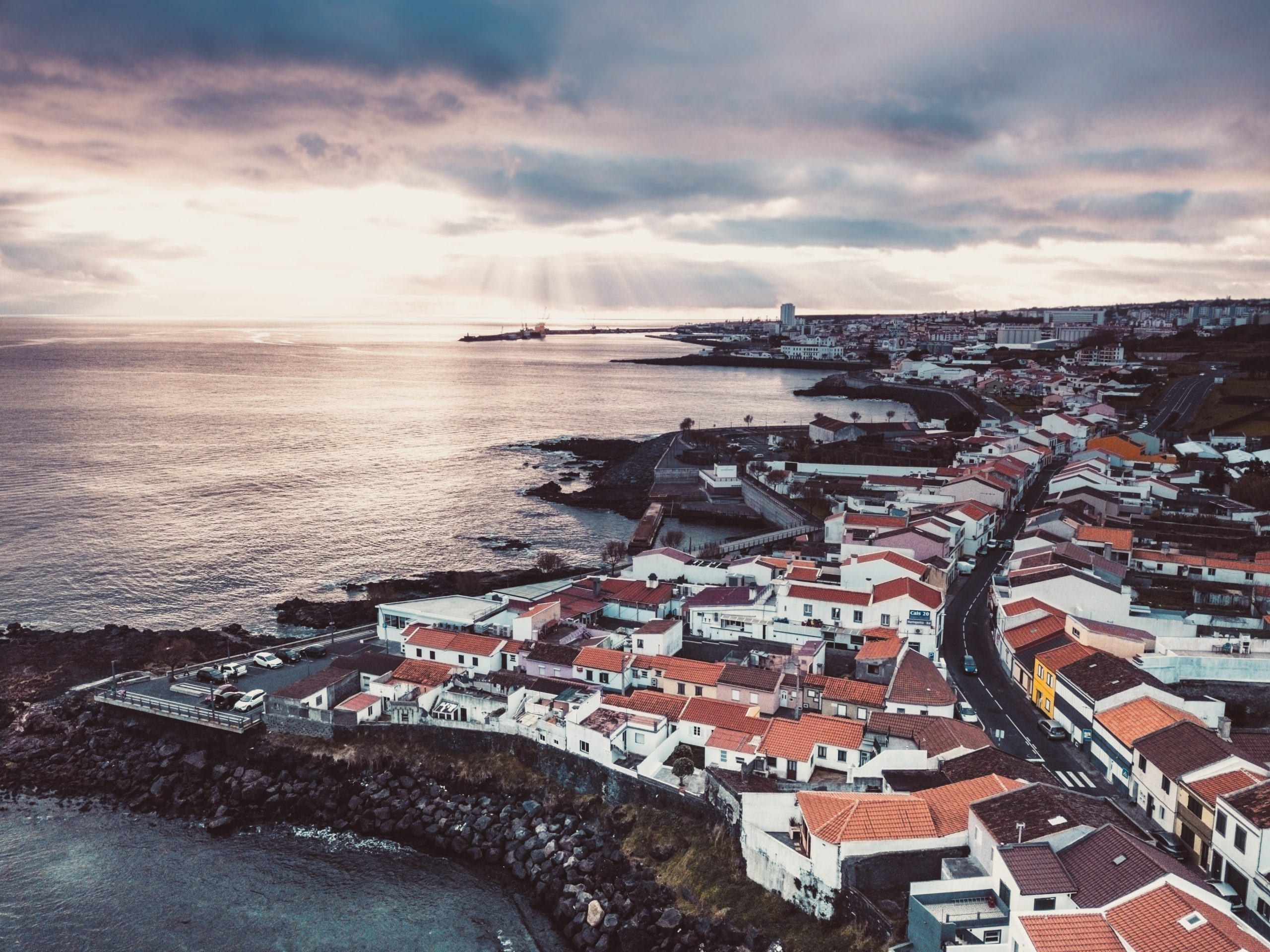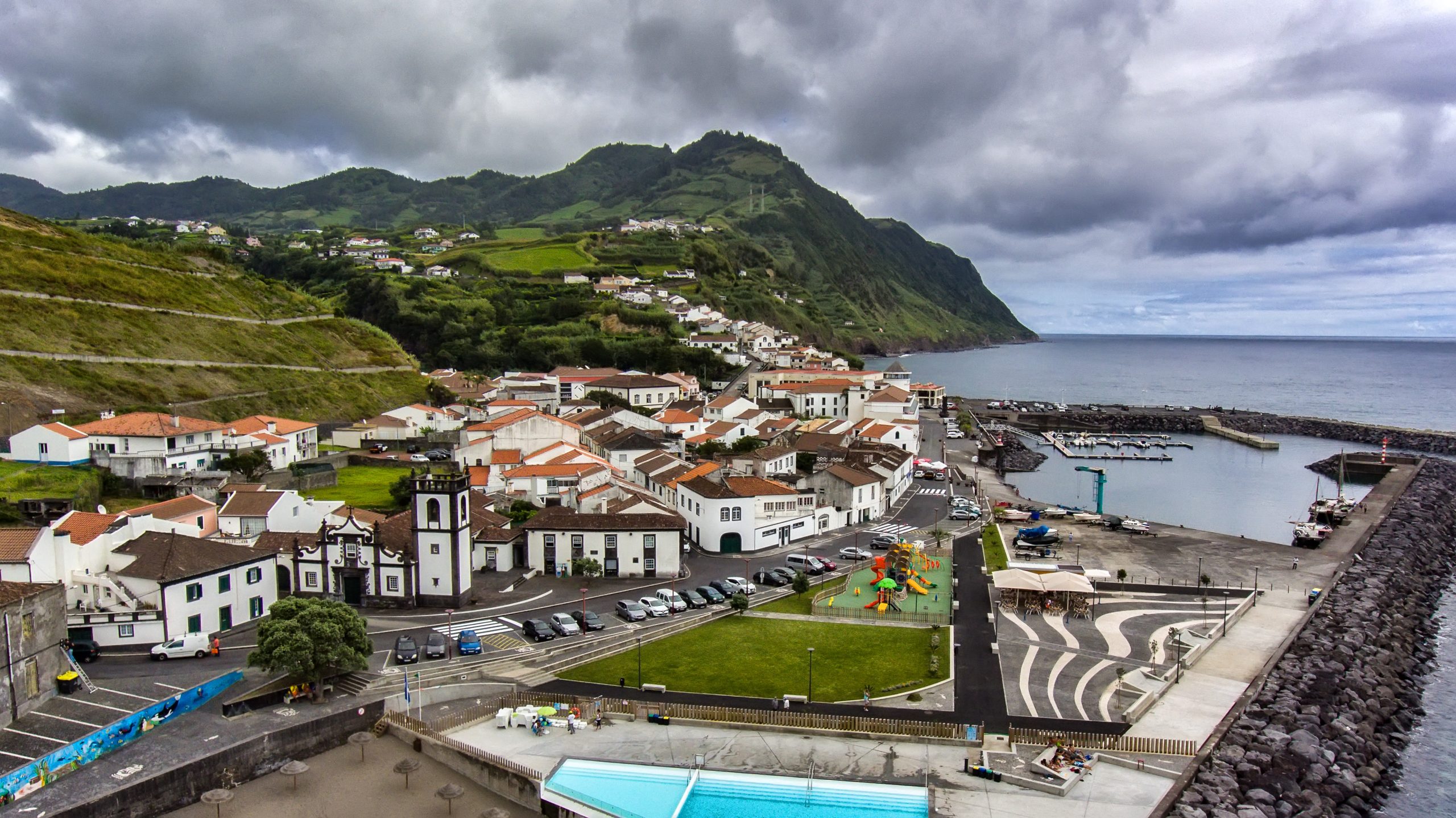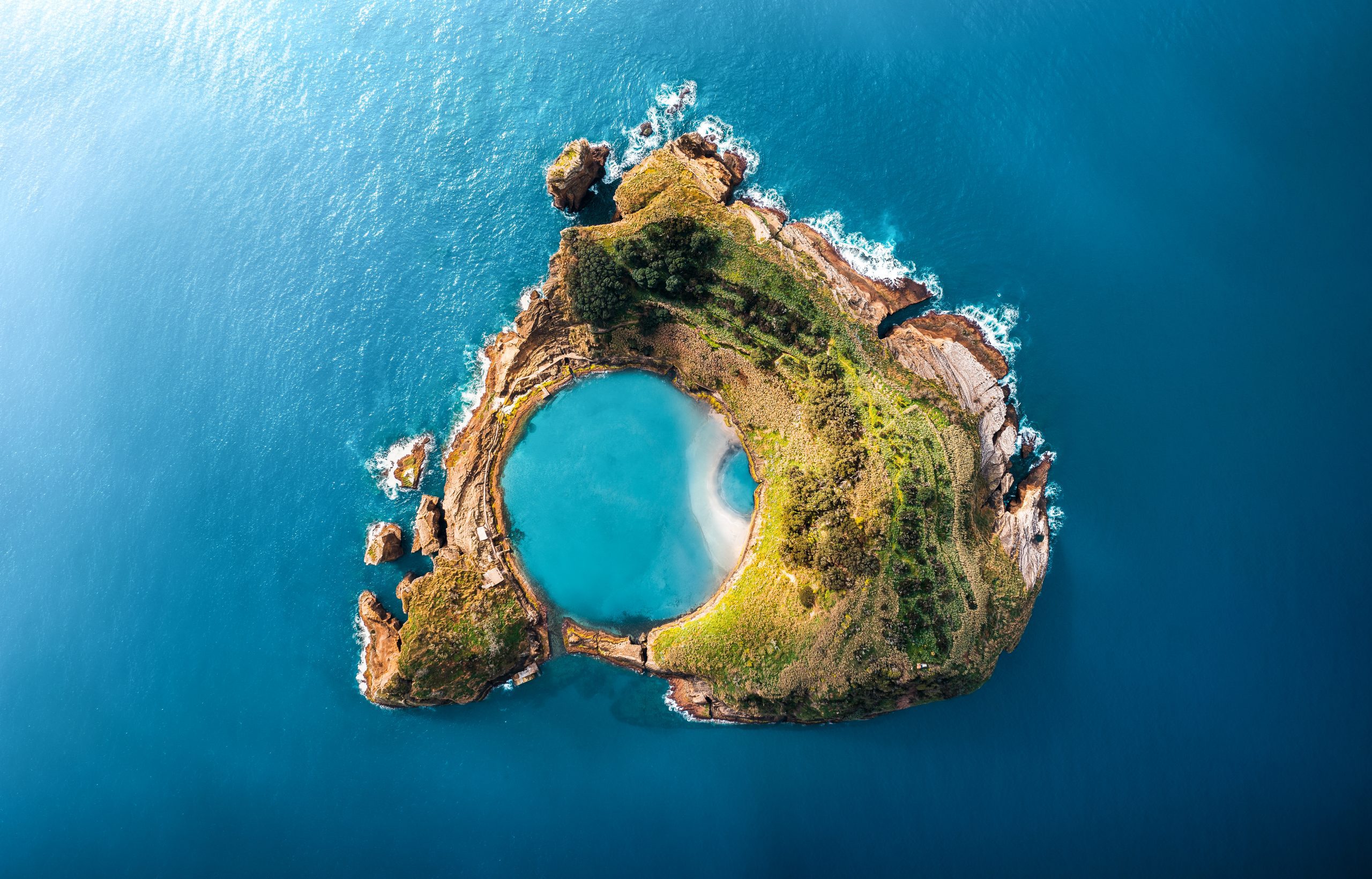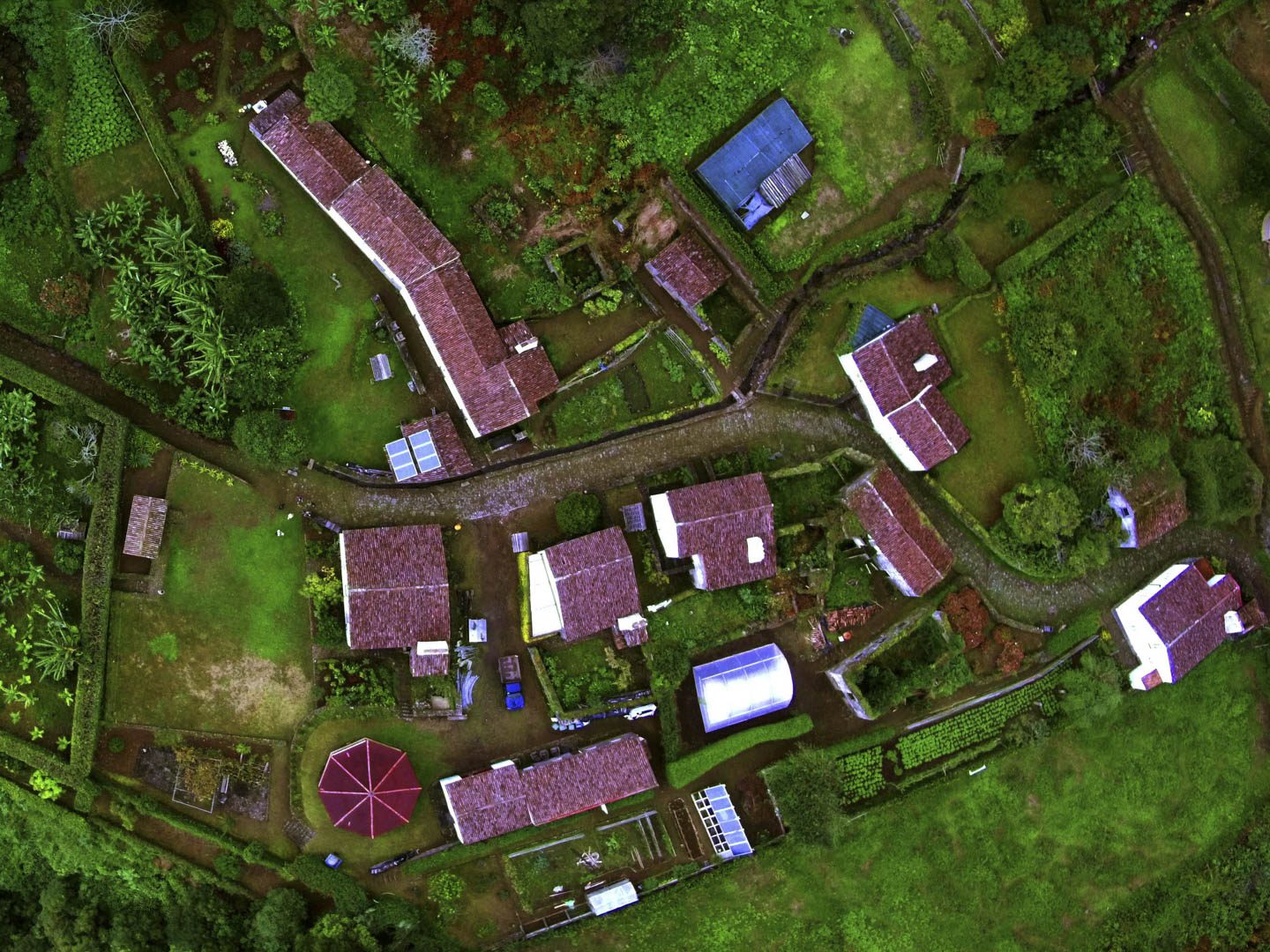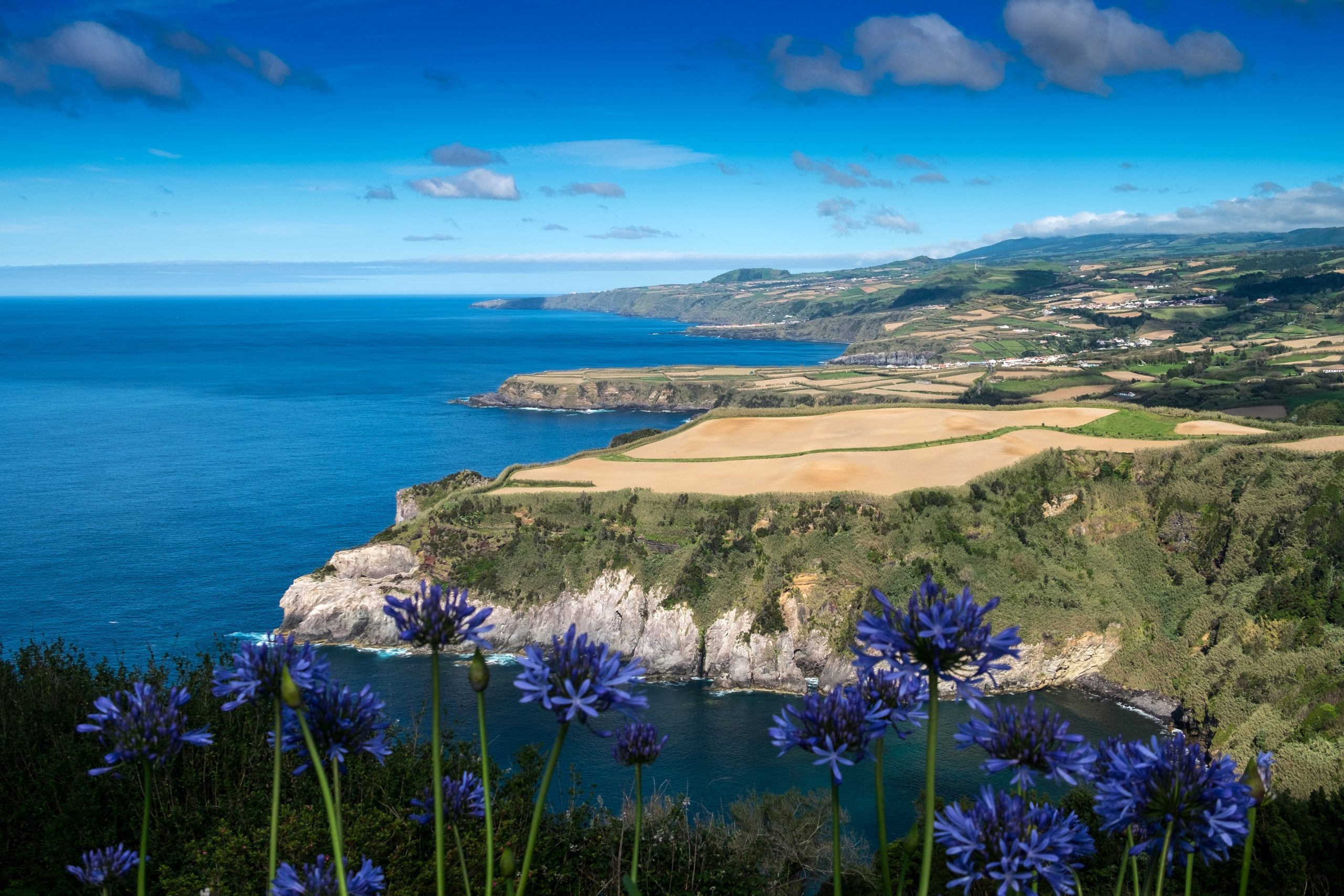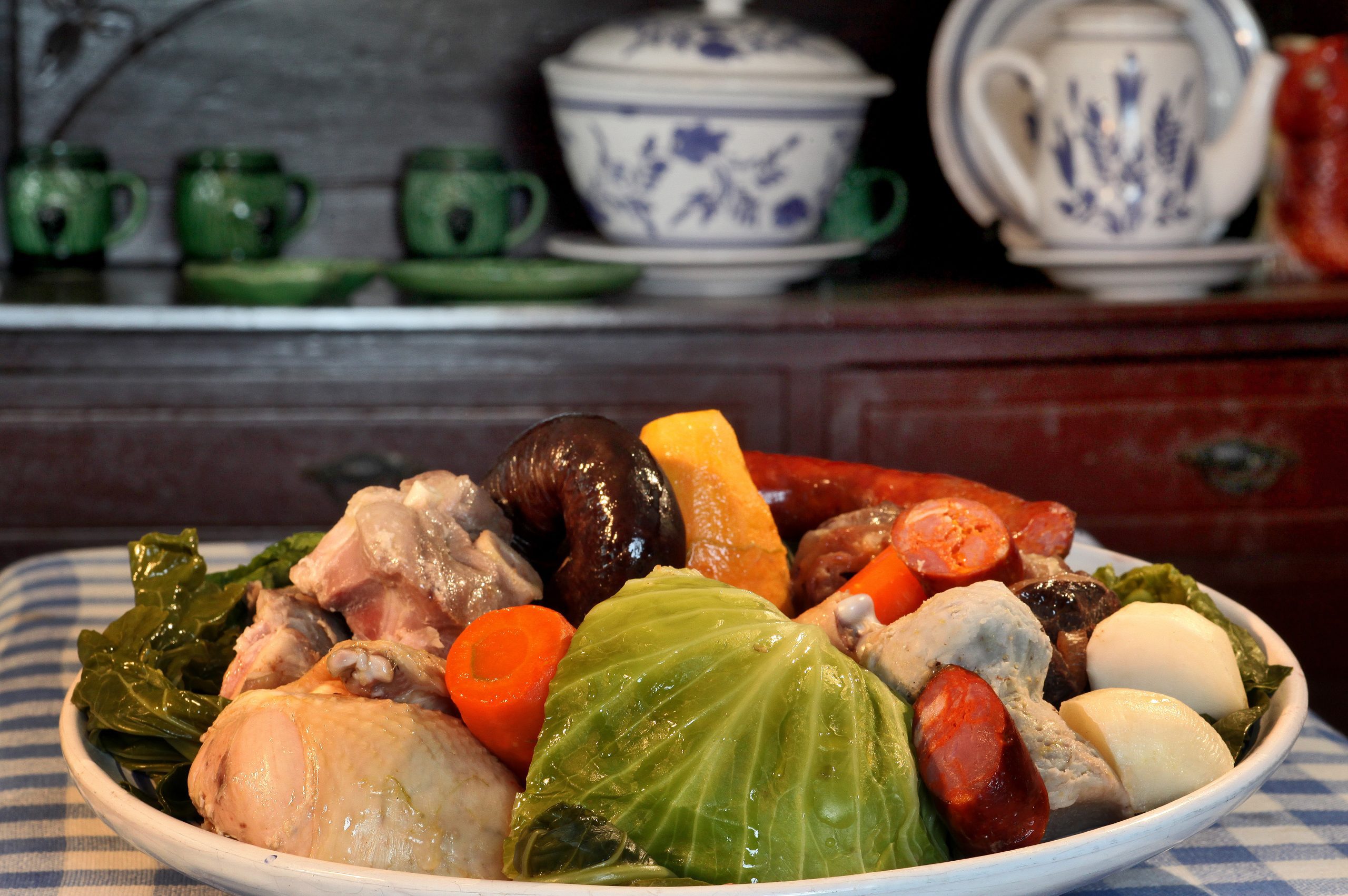Many consider Ribeira Quente to be the little pearl of São Miguel. It is a fishing parish set on mountain slopes close to sea level and is one of the main tourist destinations in the region and on the island of São Miguel. This parish has a lot to offer, and its beauty begins to be realized even before you reach your destination.
On the road linking Furnas to Ribeira Quente, you can see waterfalls and a massive diversity of botanical species. Here, you can also enjoy Praia do Fogo, a unique destination much sought after by tourists, and many other activities at the region’s various points of interest.
What is Ribeira Quente

Ribeira Quente is a small parish in the municipality of Povoação. It is home to approximately 770 inhabitants, mainly in agriculture and fishing. The parish of Ribeira Quente is divided into two very distinct residential areas with different characteristics and interests:
- The “Fogo”: where the inhabitants live off family subsistence farming and exploit the wasteland in the area. From here, you can also access the Church of São Paulo and the emblematic Praia do Fogo (warm water beach);
- The “Ribeira”: here you’ll find the Ribeira Quente harbor, where a large part of the community fishes.
Ribeira Quente is a town full of charms ready to delight tourists visiting the island of São Miguel. Here, you’re sure to enjoy unique moments framed by the blue and green landscape.
History & Geography

Located in the municipality of Povoação, the parish of Ribeira Quente arose when the first inhabitants began to settle the region in the 16th century. This town began to be populated a few years after the settlement of Furnas. Construction started in 1936 on the two tunnels that facilitated access to the parish. However, Ribeira Quente was developed in 1943, when it was elevated to a parish.
The landscape and geographical area of Ribeira Quente has undergone several changes over the centuries due to the eruption of the Furnas Volcano in 1630 and the landslides from the Furnas Valley in 1997.
History of Fort São Paulo
The São Paulo Fort was built to guard and protect Ribeira Quente from the frequent pirate and privateer attacks that occurred in this part of the Atlantic Ocean. The fort was in a privileged location and fully equipped to defend the little pearl of São Miguel. However, nothing remains of this imposing building. The construction did not reach the present day and has been in ruins since 1817.
Culture & Festivities: Festa do Chicharro

The Festa do Chicharro is held annually in the parish of Ribeira Quente.
The event, which combines musical entertainment with São Miguel cuisine, promotes cultural traditions and the local economy. Its first edition, held in 1998, remains one of São Miguel’s most emblematic festivals to this day. The Chicharro Festival takes place in the summer, specifically in July or August, and attracts thousands of locals and tourists.
Quick Info
Chicharro is a typical São Miguel dish that can be prepared in various ways to suit each visitor’s taste.
What to Do in Ribeira Quente
Passing through the municipality of Povoação? After Furnas, Ribeira Quente is one of the charms that São Miguel has to offer! Don’t miss the opportunity to visit some of the places we consider to be unmissable points of interest in the region.
Enjoy Praia do Fogo

Praia do Fogo, also known as Praia da Ribeira Quente, is located in the parish of Ribeira Quente, in the municipality of Povoação. This trendy bathing area attracts many tourists and locals alike. With its indescribable natural beauty, Praia do Fogo is located in a bay with several underwater hydrothermal springs that give the seawater an excellent temperature (warm water), making it very inviting for swimming.
Note: The beach is equipped with all the infrastructure to support bathers, including car parks, toilets, and access for people with reduced mobility.
Explore the Ribeira Quente Waterfall

The Ribeira Quente Waterfall, located in the municipality of Povoação, is approximately 25 meters high. The waterfall can be seen through the tunnel opening on the access road to the parish of Ribeira Quente.
Surrounded by vegetation of enormous botanical variety that gives the site a very particular scenic value, the Ribeira Quente Waterfall is one of the region’s points of interest where you can relax and enjoy nature. The Ribeira Quente Waterfall is of thermal origin and has drinking water from springs located in the interior of the island of São Miguel.
Visit the Church of São Paulo
The Church of São Paulo, also known as the Parish Church of Ribeira Quente, is located in the parish of Ribeira Quente, in São Miguel. This Christian temple, built at the beginning of the 20th century, was the third church to be erected in the region after the sea and storms considerably damaged the old 17th-century buildings. The current Church of São Paulo, built in the revivalist style, was completed in September 1917 and inaugurated with grand festivities for Bishop Manuel Damasceno da Costa’s blessing.
Take the Agrião Hiking Trail

The Agrião Hiking Trail is a linear route that starts at Porto da Ribeira Quente and heads towards the mountains. It takes an average of 4 hours to complete. During the walk, you’ll be able to observe the various endemic species of the surrounding forest and contemplate the view over Tronqueira and Graminhais from the viewpoints you’ll find along the way. If you like to go on an adventure in nature, this activity shouldn’t be missed. The Agrião Trail has a lot to see and appreciate and is of medium difficulty, so be prepared for a good walk.
Note: Bring comfortable clothes and footwear suitable for the trail, as well as a rucksack with essentials such as extra clothes, sun cream, snacks, and water.
Plan Your Visit to Ribeira Quente
Best Time to Visit Ribeira Quente
Due to its location, temperatures in São Miguel are mild all year round. However, in the winter months, periods of rain and lower temperatures become more frequent. In this sense, the best time to visit Ribeira Quente is usually between May and September, when the days are sunny and more inviting for nature walks. Remember that this town is situated on a beautiful hillside.
However, it’s important to note that cloudy skies are a common feature of all the islands in the archipelago, so it may sometimes be challenging to appreciate the true splendor of some of the region’s viewpoints.
Check all our articles about the weather in the Azores throughout the year 🌤️ ☔️: January | February | March | April | May | June | July | August | September | October | November | December
How to Get to Ribeira Quente
You can get to the parish of Ribeira Quente by car. You’ll have to drive along the road that links Furnas to this village. Along this route, you can see several waterfalls between tunnels in the middle of the vegetation. In addition to the enormous amount of scenery that can be enjoyed from the viewpoints, along the way, you’ll find many picnic areas where you can enjoy an open-air meal.
Where to Eat
If you need somewhere to eat near Ribeira Quente, click here. In this link, you’ll find the 10 best restaurants on Tripadvisor.
Where to Stay
To make your life easier, we’ve filtered the search by:
Nearby Attractions
Visit the Town of Povoação

The town of Povoação has been a municipality since 1839. It is divided into six civil parishes on the island of São Miguel. The settlement of the island began in this area, and many monuments commemorate this historical period.
Since its establishment in the 20th century, the town has primarily relied on producing cereals, particularly wheat. The Wheat Museum offers visitors an opportunity to explore the history of Povoação and the importance of this specific resource to the local community.
Additionally, the Povoação region boasts an array of beautiful natural landscapes, and each parish in the town has something unique to offer visitors. These include hiking trails, thermal baths, parks abundant in flora, and an unexplainable connection with nature.
Check all our articles about each one of the most relevant points of interest in Povoação: Povoação | Aldeia do Sanguinho | Faial da Terra | Salto do Cagarrão | Salto do Prego | Ribeira Quente Waterfall | Praia do Fogo | Miradouro do Pico dos Bodes | Miradouro Vigia da Baleia
Explore Mata-Jardim José do Canto
Mata-Jardim José do Canto is on the south side of Furnas Lake and was planted by the man who gave it its name in 1861, in an arid area affected by the Lagoa Seca volcano, silent since 1630.
Did you know
Barrillet-Deschamps, a “pop star” of French landscaping who had already signed such hits as the gardens of the Champs-Élysées in Paris (co-author), designed the project.
This ten-hectare woodland garden includes centuries-old camellias and sequoias and the Salto do Rosal trail—a 2 km path to a crystal-clear waterfall. The site has been open to the public since August 2014.
The flora at Mata-Jardim is exceptional. Here, you can see a vast collection of camellias planted along the property’s extensive boulevards and in the new camalieto, coexisting with many remarkable trees and endemic plants, some Indigenous and others from temperate and subtropical regions.
Check all our articles about each one of the most relevant points of interest in Furnas: Caldeiras das Furnas | Furnas | Capela da Nossa Senhora das Vitórias | Castelo Branco Viewpoint | Lagoa das Furnas | Lagoa das Furnas Viewpoint | Mata-Jardim José do Canto | Parque Terra Nostra’s Thermal Pool | Pico do Ferro Viewpoint | Poça da Dona Beija | Ribeira Quente | Praia do Fogo | Salto do Cavalo Viewpoint | Salto do Rosal | Terra Nostra Garden
Discover the Caldeiras das Furnas

Thousands of Portuguese and international visitors explore the Caldeiras das Furnas in Furnas every year. They are drawn by its unique geothermal activity and remarkable volcanic phenomena.
Visitors witness nature’s raw power at the Campo Fumarólico da Vila das Furnas and the Campo Fumarólico da Lagoa das Furnas. These sites captivate tourists and locals alike with their striking displays of volcanic energy. Lagoons now occupy the craters of a volcano that has remained dormant since 1630. The volcano’s cone collapsed during its last eruption, forming deep depressions that hold rainwater.
Magma near the surface interacts with rainwater, heating it to extreme temperatures. This process creates fumaroles, hot springs, and boiling water springs. Fumaroles emit steam and sulfurous gases, filling the air with their distinctive smell and offering visitors an unforgettable geothermal experience.

Discover Terra Nostra Park

Terra Nostra Park, nestled behind Hotel Spa Terra Nostra on São Miguel Island, is a haven of relaxation and natural beauty. This unforgettable destination combines the tranquility of its famous thermal pool with the vibrant diversity of its botanical garden.
With its distinctive orange-brown waters, the thermal pool is rich in iron and maintained at 35 °C to 40 °C. Perfect for relaxation, it also offers medicinal benefits. To enjoy the experience fully, avoid wearing light-colored swimsuits or towels, as the mineral-rich waters can leave stains.
The botanical garden is equally captivating. It features over 2,000 tree species, 600 camellia varieties, and an incredible array of flowers. Every corner of this lush paradise showcases nature’s beauty and diversity.
Whether strolling through the gardens or soaking in the thermal pool, Terra Nostra Park offers an unparalleled experience of serenity and wonder.
Complementary Information
Best Season to Visit the Azores
The Azores Archipelago boasts a unique climate that shapes its lush landscapes, making it a splendid year-round destination. With mild temperatures and minimal fluctuations, each season offers something unique. Spring averages 16 °C, summer reaches 21 °C, autumn cools to 18 °C, and winter remains mild at 14 °C.
→ For a detailed breakdown of the weather by month, check the following links 🌤️☔️: January | February | March | April | May | June | July | August | September | October | November | December
How to Get to the Azores
The Azorean Archipelago is easily accessible through numerous flight routes. Lisbon and Porto are the main entry points to the continent, with direct flights available to São Miguel (PDL), Terceira (TER), Faial (HOR), Pico (PIX), and Santa Maria (SMA). To find the best flight, use search engines like eDreams or Skyscanner. These platforms let you compare prices and schedules from multiple airlines in one convenient location.
For more details on how to get to the Azores, take a look at our complete guide. But what if you want to explore beyond your arrival island? We’ve got you covered!
- Azores airports 🛬
- Flights between islands ✈️
- Ferries between islands ⛴️
- Which island to choose? 🏝️
- What airlines fly to the Azores? 🛩️
→ Once you’ve found the perfect route, book your tickets and get ready to experience one of the world’s most stunning island groups!
Travel Essentials
Essential Information for your Azores trip: Azorean Language & Phrases 🗣️ | Currency & Banks 💵 | Credit Cards & Traveler’s Cheques 🏧 | Driving in the Azores 🚗 | Electricity 🔌 | Experiences & Tours 🗺️ | Health & Safety 🩺 | Internet & Wi-Fi Access 🛜 | Phones & Mobile Service 📞 | Post Offices & Buying Stamps ✉️ | Public Holidays 🏖️ | Shopping 🛒 | Time & Daylight 🕒 | Whale Watching Guide 🐳 | Best Island to Visit 🏞️
Useful Tools & Apps
The weather in the Azores can be variable, so it’s helpful to use some apps before visiting the islands. Spotazores provides live camera feeds from the main tourist attractions, allowing you to check the weather and plan your visit. For accurate weather predictions, use Windy or Windguru — they provide the most reliable predictions.
Video
Conclusion
Ribeira Quente is a parish in the municipality of Povoação and one of the most popular holiday destinations for visitors in the summer. Marked by geothermal activity, the bathing area of Praia do Fogo, in the little pearl of São Miguel, presents bathers with warm seawater. It is one of the region’s most emblematic sites.
The municipality of Povoação has a lot to offer, so plan an itinerary with all the tourist attractions you want to visit. In addition to the itinerary, it’s essential to define the activities you would like to do in the area.
Authors’ Note
I am pleased to inform you that all the recommendations in this article are based on my personal experience and observations. As the author, I have personally visited each attraction mentioned, ensuring that every suggestion is grounded in first-hand knowledge and genuine enthusiasm.
FAQs
Ribeira Quente is situated along the southern coast of São Miguel Island, bordered by the Atlantic Ocean to the south, with neighboring parishes of Furnas to the north and Povoação to the east.
The parish is renowned for Praia do Fogo, a beach with warm seawater due to underwater hydrothermal springs. Visitors can also enjoy scenic drives from Furnas, passing by waterfalls and picnic areas equipped with tables and grills.
Established in the 16th century, Ribeira Quente has a rich history marked by events like the 1997 landslide, which led to significant changes in the community’s development.
Ribeira Quente is accessible via the EN1-1A road, which connects it to other parts of São Miguel Island. The journey offers picturesque views, including waterfalls.


